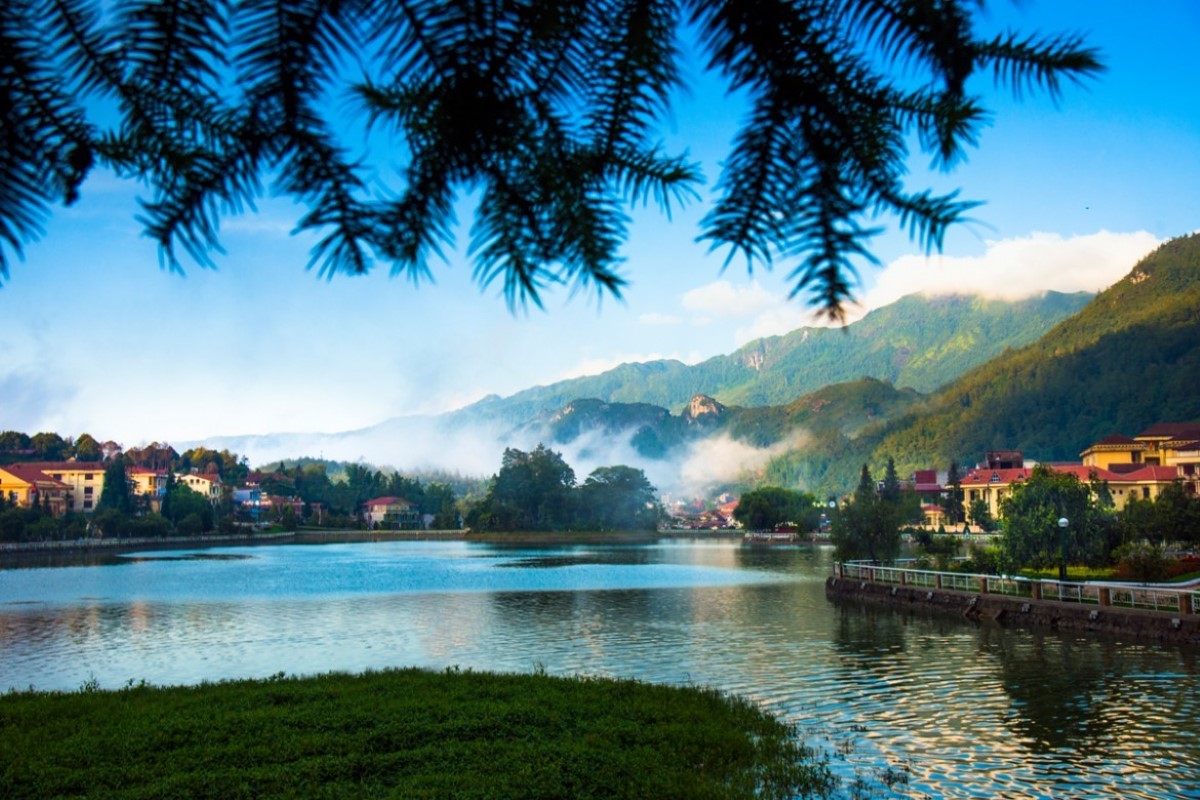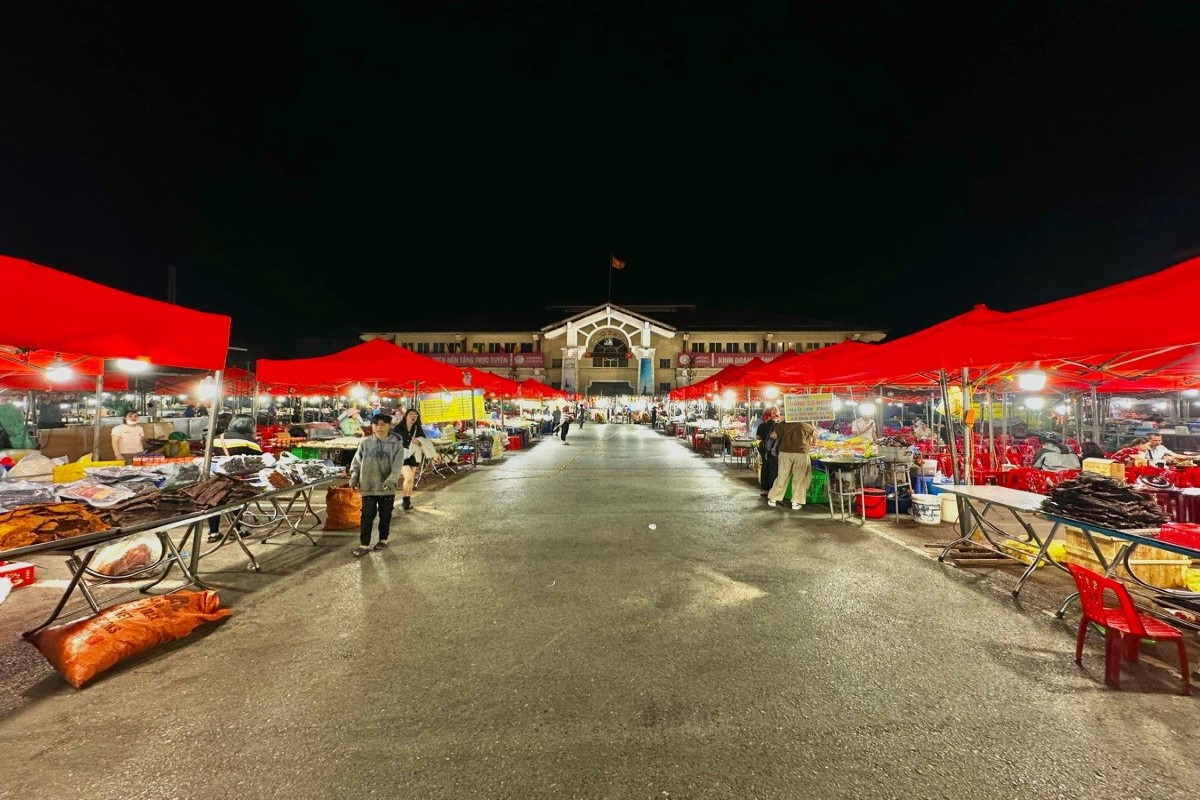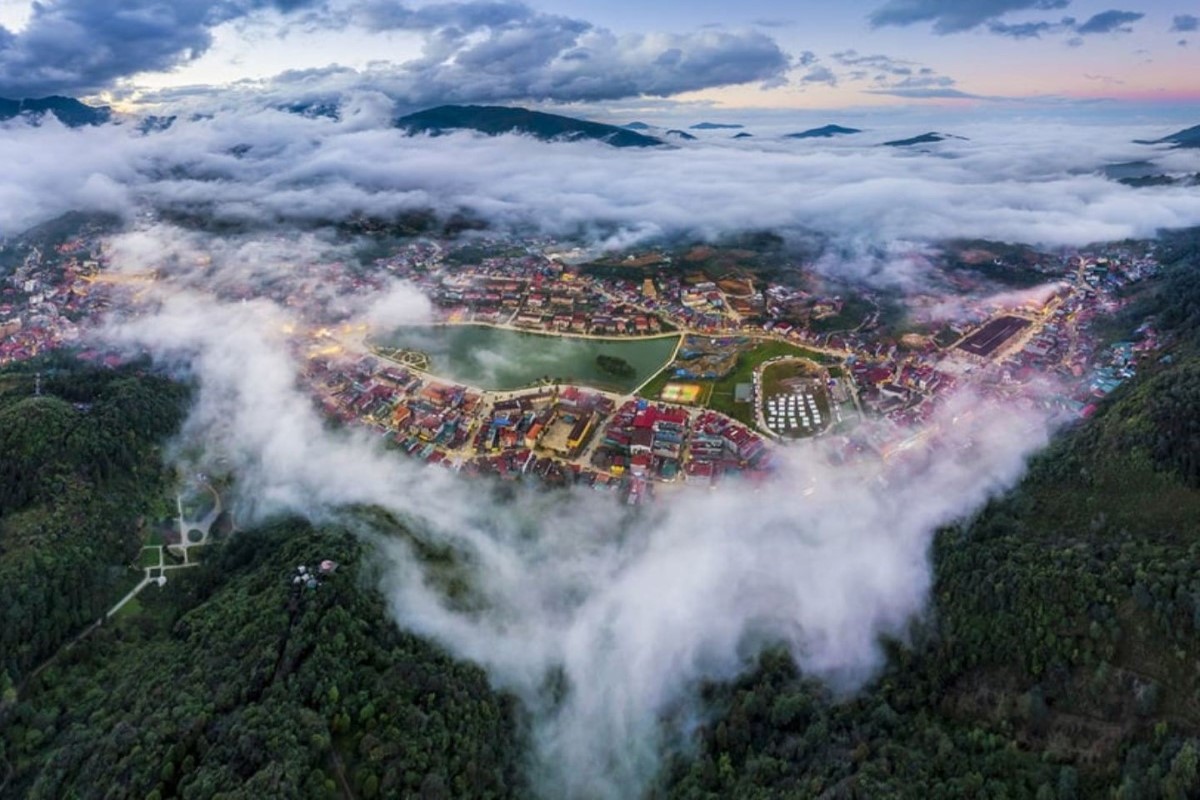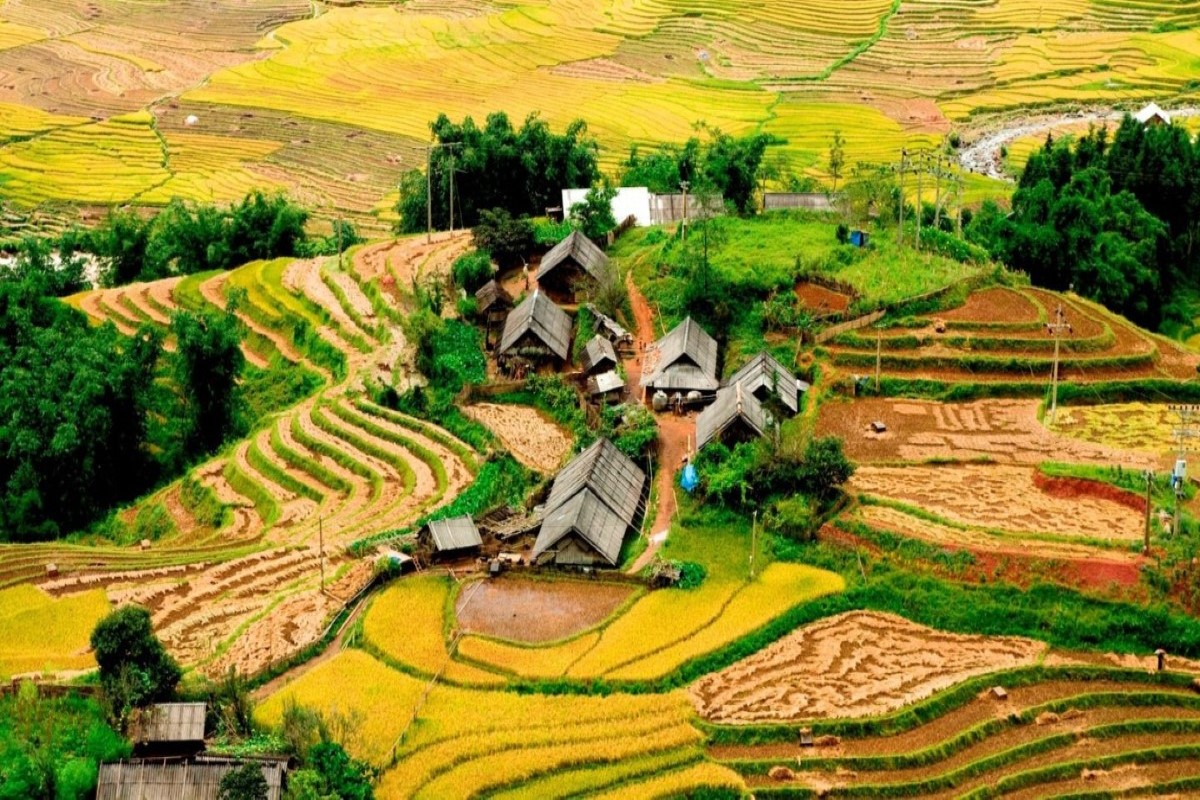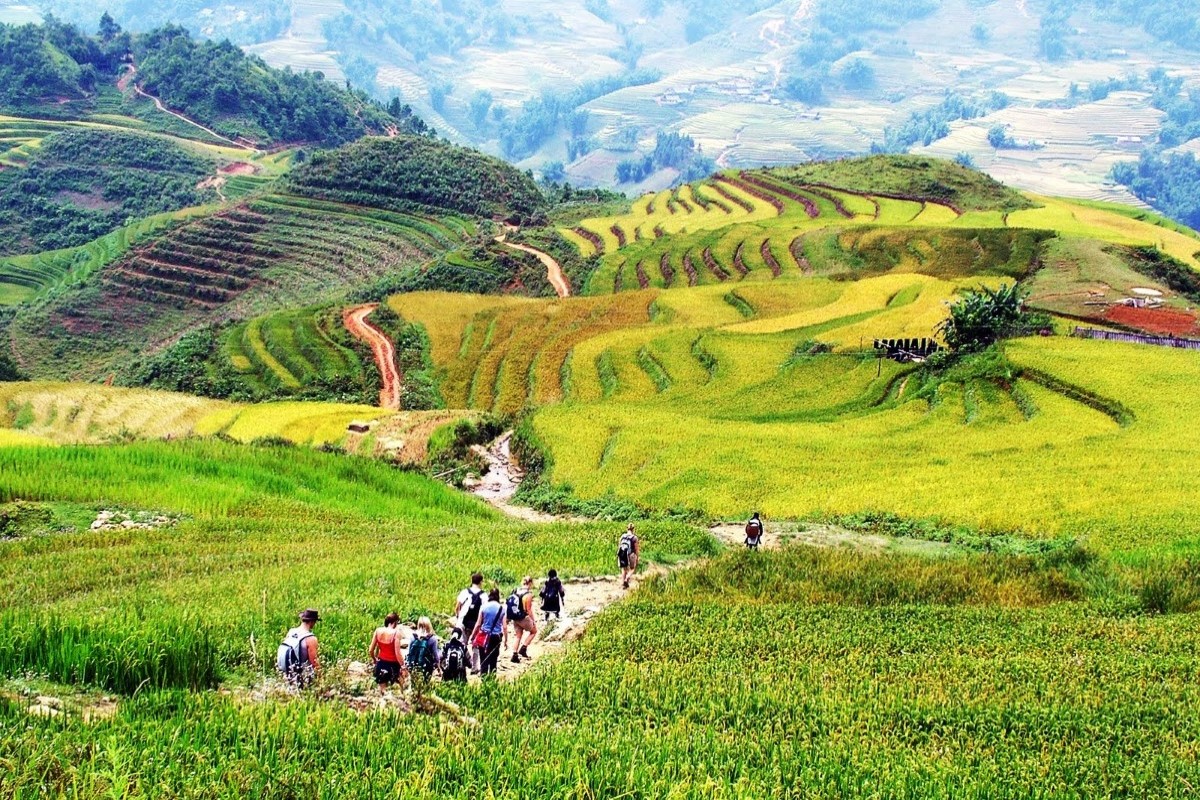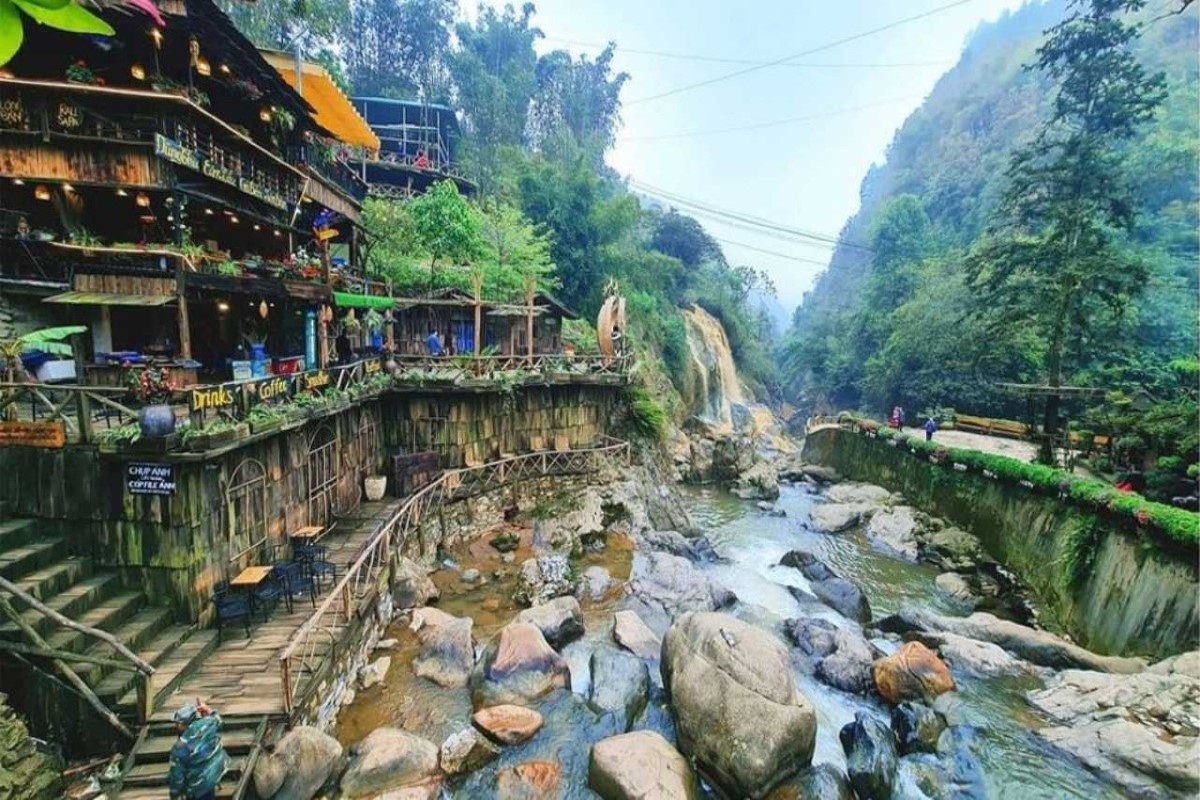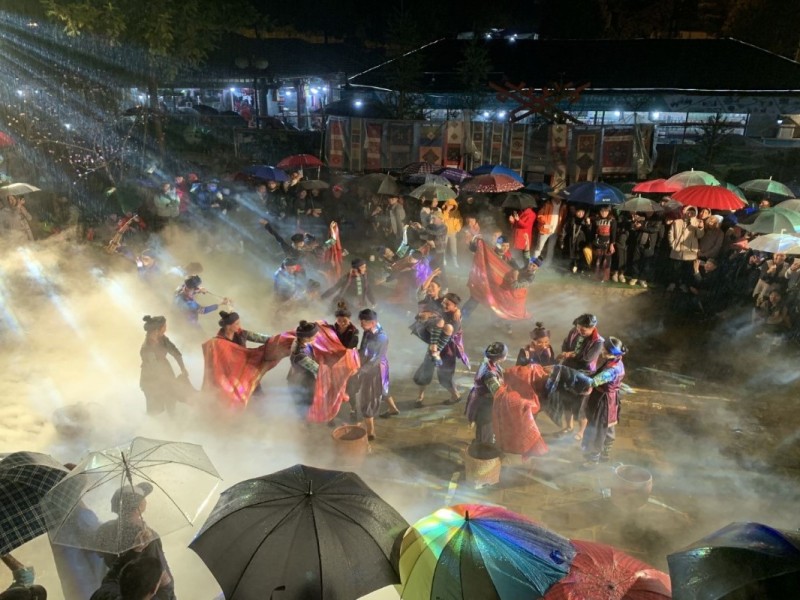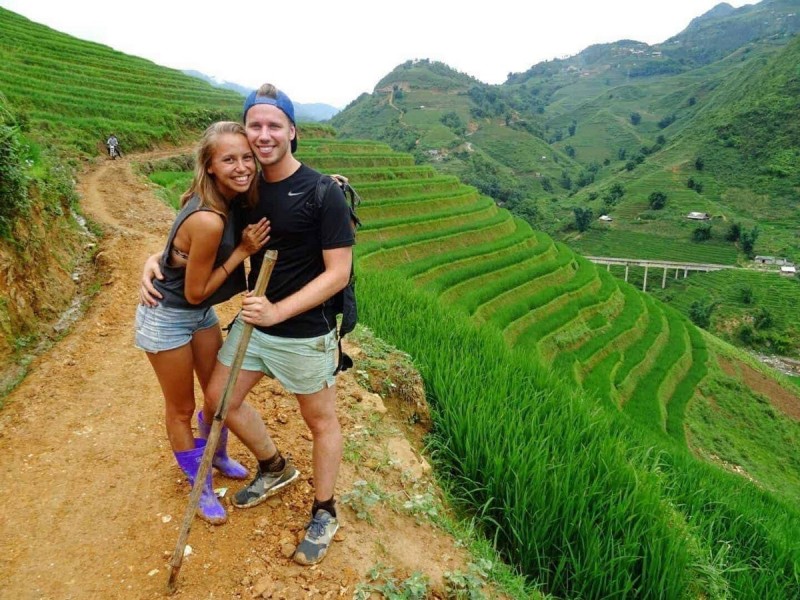Sapa Love Market: Complete Travel Guide, History, and Visitor Tips
Sapa Love Market is a traditional cultural event in Sapa, Vietnam, where local ethnic groups gather for music, dance, and courtship rituals. Visitors experience vibrant performances, unique handicrafts, and authentic local cuisine, making the market a memorable and immersive way to discover Sapa’s living heritage and romantic traditions.
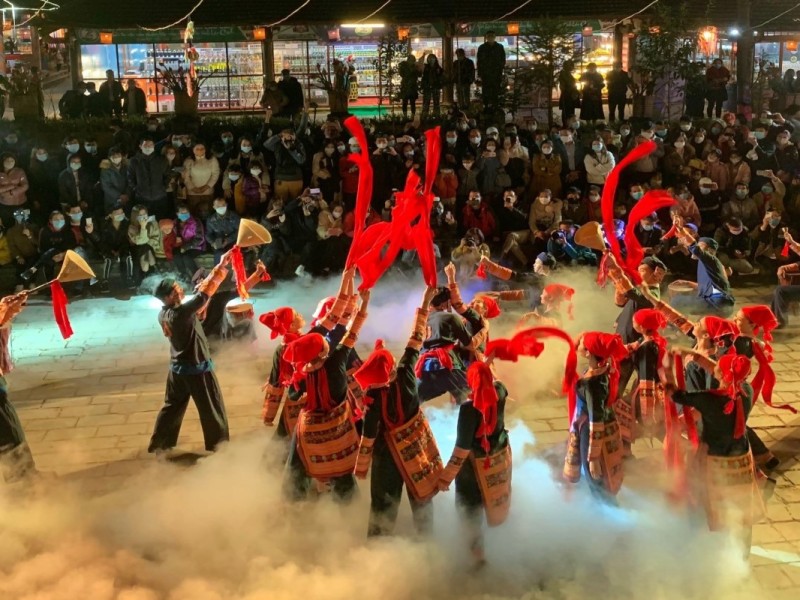
Discovering the Magic of Sapa Love Market
Every Saturday evening, a hidden corner of Sapa, Vietnam, comes alive with a spectacle that weaves together the colors, sounds, and spirit of mountain culture. The Sapa Love Market is not just another stop on a traveler’s itinerary. It is a living tradition, a space where community rhythms echo through laughter, courtship songs, and the hum of hopeful anticipation. As you wander through the heart of town, you’ll feel the pull of something timeless—an event shaped by the land, the weather, and the passions of the people who call this region home.
Unlike any market you’ve visited before, the Sapa Love Market welcomes you into an experience that blends cultural ritual, romance, and festive energy in a way only found here. This Sapa love market guide will give you the insights, stories, and practical tips you need for an authentic and memorable journey, whether you crave tradition, connection, or the thrill of the unknown.
If you’re ready to step into a world where each encounter has meaning, each melody tells a story, and every evening reveals a new layer of heritage, keep reading. Your visit to the Sapa Love Market promises to be more than just a market stop—it’s the doorway to the heart of northern Vietnam. Start planning now for the adventure that awaits.
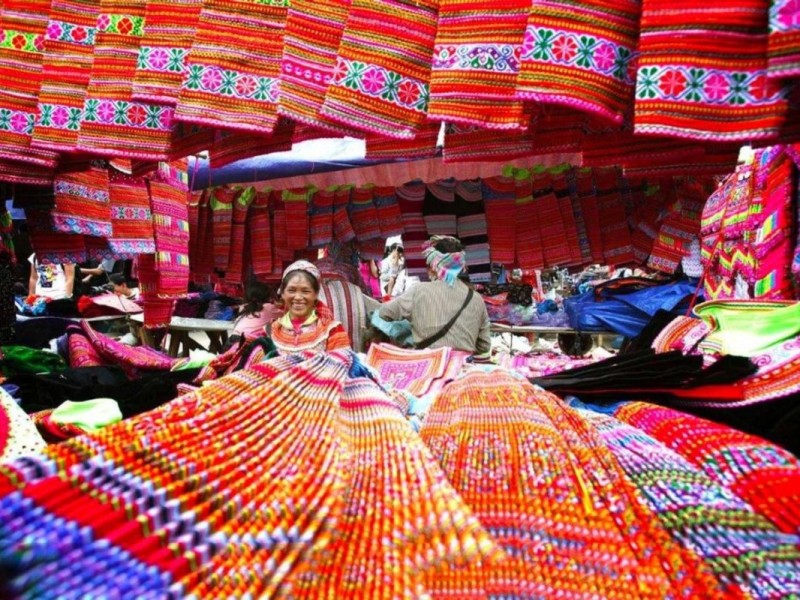
What Makes Sapa Love Market Truly Unique
When you search for what makes the Sapa Love Market unique, you’ll find it’s not simply about shopping or sightseeing. This is a place where tradition breathes and local identity is performed with joy and pride. Arriving in Sapa, you sense immediately that the love market is woven into the very fabric of the community. The air pulses with the sound of bamboo flutes, the gentle laughter of friends meeting again, and the shuffle of feet as couples exchange shy glances.
The love market in Sapa isn’t just an event—it’s an expression of the region’s ethnic diversity, especially among the Hmong and Dao. These communities preserve ancient rituals of courtship and connection that transform an ordinary night into a festival of romance and hope. For travelers, the Sapa Love Market offers authentic experiences far beyond the ordinary, from colorful displays of traditional dress to the shared anticipation that fills the square as dusk falls. You don’t just observe; you join a centuries-old story of community gathering and celebration.
As you consider your own Sapa love market experience, picture yourself drawn into this warm current of energy and history. It’s more than a market. It’s a living memory you’ll carry home, an invitation to become part of a cherished tradition. Don’t miss the chance to immerse yourself and discover what makes this night so unforgettable.
The Spirit of Ethnic Traditions and Romance
If you’re curious about what makes the Sapa Love Market truly special, look no further than the vibrant ethnic traditions that unfold before your eyes. Here, every detail has meaning. Young men and women from the Hmong and Dao groups don their finest embroidered clothes, each stitch a testament to family, history, and identity. These gatherings are shaped by community rituals that turn an ordinary night into a celebration of connection and romance.
- Hmong Courting Songs: Young men play traditional flutes or the “khene” to serenade their chosen partners, expressing feelings through music instead of words.
- Dao Love Duets: Couples take turns singing poetic verses, weaving stories of hope and longing into the evening air.
- Traditional Dress Displays: Girls proudly wear hand-sewn costumes, their silver jewelry chiming with each movement, signaling readiness for new friendships or courtships.
- Circle Dances: Locals and visitors alike may be invited to join hands in dance, a symbol of unity that welcomes all into the fold.
- Folk Music Performances: The melodies of Sapa ethnic minorities echo through the market, narrating tales of the mountains, the rain, and the journey to find love.
These customs aren’t staged for tourists—they are authentic expressions of community rituals that continue to define local life in Sapa. As you move through the market, every song and smile deepens your understanding of what it means to belong here.
Whether you’re fascinated by music, textiles, or the simple act of gathering together, the Sapa Love Market will open your eyes to the beauty of living tradition. Let yourself be drawn into the dance—your presence is always welcomed.
Liam's First Impression: The Market's Welcoming Embrace
Most travel guides tell you what to see, but very few truly convey what it feels like to step into a place so steeped in tradition it feels like a living, breathing story. My first encounter with the Sapa Love Market wasn't just another Saturday night activity; it was an instant, overwhelming embrace of a culture I’d only read about, an experience unlike any other typical evening stroll. It was a sensory symphony that immediately signaled this was something truly unique.
As the cool mountain air kissed my face, a gentle hum began to grow, beckoning me toward Sapa's central square. My initial expectations were simple: perhaps a few stalls, some local crafts. But what unfolded before me was a vibrant tapestry woven with the threads of centuries-old tradition. The Sapa Stone Church, typically a stoic landmark, now stood bathed in the soft glow of lanterns, its silhouette framed by a swirling kaleidoscope of color. Hmong and Red Dao women, dressed in their intricate, hand-embroidered indigo and scarlet garments, moved with a quiet grace, their silver jewelry glinting under the sparse streetlights. The scent of grilled corn mingled with something sweet and floral – perhaps incense, perhaps the mountain air itself – creating an intoxicating perfume that grounded me firmly in the moment.
The journey into the market wasn't a grand entrance, but a gradual immersion. As I drew closer, the hum transformed into a chorus: the mournful, yet enchanting, call of a bamboo flute (khene), answered by the delicate, almost metallic twang of a jaw harp (đàn môi). These weren't performances for tourists; these were genuine expressions of courtship, young men and women sharing melodies that spoke volumes where words were few. I watched, captivated, as groups gathered, their faces illuminated by the warm glow of handheld lanterns, their hushed conversations punctuated by bursts of shy laughter. There was an palpable energy, an unspoken anticipation, yet it felt incredibly respectful and private, despite the growing crowds. I felt a surge of awe, realizing I was witnessing something truly sacred, a tradition passed down through generations. My initial hesitation about intruding quickly faded, replaced by a profound curiosity and a sense of privilege. It wasn't about finding a souvenir; it was about bearing witness.
This deep dive into the Sapa Love Market taught me something profound about cultural respect and the beauty of unspoken traditions. It's easy to rush through a destination, ticking off sights, but slowing down, observing, and truly listening (even without understanding the language) allows for a far richer connection. The market isn't just a place; it's a living dialogue between generations, a quiet celebration of identity.
Here are a few practical takeaways from my first-hand experience:
- Arrive early (or late): To truly soak in the atmosphere and witness the more genuine interactions, aim to be there just as it starts to get dark (around 7 PM) or linger later in the evening. The initial rush thins out, allowing for more intimate observations.
- Dress warmly: Even in warmer months, Sapa evenings can be chilly. Layers are your best friend.
- Respectful photography: Always ask for permission before taking photos of individuals, especially children. A smile and a gesture often go a long way.
- Embrace the quiet: While there are performances, much of the market's magic lies in the subtle interactions and the music carried on the wind. Don't expect a boisterous street fair.
- Sample the street food: The grilled corn and local sticky rice are a must-try for an authentic taste of the market. Look for vendors with small crowds – a good sign of quality.
My first impression of the Sapa Love Market was nothing short of magical. It wasn't just a sight to see; it was an experience that settled deep into my soul, leaving me with a profound appreciation for Sapa's rich cultural heritage and the enduring power of human connection. It's a reminder that sometimes, the most unforgettable moments are found not in grand attractions, but in the quiet, authentic corners of the world.
Recommendation: If you are seeking a truly authentic, emotionally resonant cultural experience in Vietnam, the Sapa Love Market is an absolute must-visit. It's an unparalleled opportunity to witness ancient traditions unfold before your eyes and connect with the heart of Sapa. You simply have to experience it for yourself.
Why It’s More Than Just a Market
You might wonder why the Sapa Love Market holds such meaning for both locals and travelers. The answer lies in its deeper purpose—as a community hub, a living link to the past, and a symbol of the enduring heritage of Sapa, Vietnam.
- Community Hub: The market is where friends reunite, families connect, and new relationships are born.
- Sapa Heritage: Rituals practiced here trace back generations, carrying the wisdom of ancestors and the spirit of the land.
- Social Gathering: It’s more than commerce; it’s a social event where every visitor becomes part of the story.
- Tradition and History: Every element—from the songs to the crafts—reflects the enduring connection between people and place.
- Local Life and Connection: For locals, it’s a celebration of everyday life, marking the rhythms of the seasons, weather, and community ties.
By stepping into the market, you aren’t just attending an event—you’re connecting to a tradition that continues to shape Sapa and its people. You’ll carry these memories with you, long after the night has ended.
To truly understand the heart of Vietnam’s mountains, be sure to include the Sapa Love Market in your travel plans. You’ll leave with more than souvenirs—you’ll gain a new perspective on what it means to belong.
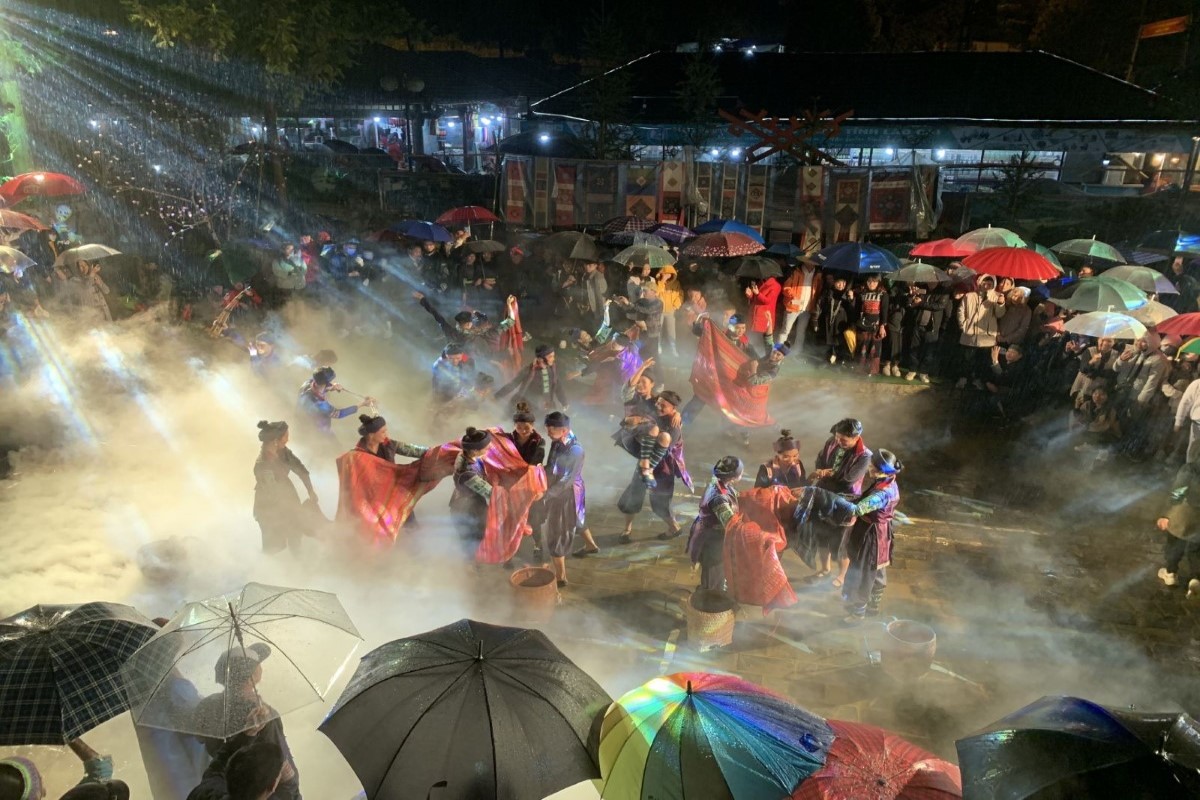
A Glimpse into the Market’s Legendary Past
For anyone captivated by living traditions, the Sapa Love Market history is a story worth knowing. The market’s roots run deep in the misty hills of Sapa, Vietnam, stretching back generations to a time before the town became a destination on the global map. In those early years, the Sapa Love Market emerged not as a tourist attraction but as a vital gathering for ethnic minority communities. It was shaped by necessity, shaped by tradition, and carried forward by the mountain spirit that defines this region.
In the history of Sapa, the market has always held a unique place as a weekly event where distance and weather dictated when families and friends could come together. As you explore the market evolution Sapa has experienced, you’ll see a tradition adapting to new realities while holding onto its folklore and meaning. Today, the market’s pulse is a blend of the past and the present—living proof that even as times change, some stories are too powerful to fade away.
If you want to truly appreciate the romance, rituals, and enduring magic of the Sapa Love Market, take time to discover how it all began. Understanding the legends behind this gathering enriches every moment you spend there and connects you to the heartbeat of northern Vietnam. Let the story inspire your own visit.
The Origins and Evolution of the Love Market
The origins of Sapa Love Market reach back to a time when the highlands were isolated by mountains, mist, and distance. Each weekend, young men and women from the surrounding villages of Sapa would walk long distances—sometimes overnight—to gather in the town square. What started as a way to buy and sell goods quickly became something more: a meeting point for romance, kinship, and the renewal of community bonds.
- Market Beginnings Sapa: The market began as a simple trade post where locals exchanged produce, livestock, and household needs.
- Local Tradition Sapa: Soon, the gathering gained a new purpose, evolving into a social event for courtship and matchmaking among the region’s ethnic groups.
- Transformation: As Sapa opened to outsiders, the market attracted travelers curious about these local customs, inspiring a gradual modernization.
- Modernization: While some rituals remain unchanged, today’s market blends old and new, with organized performances and visitor-friendly touches.
- Custom in Transition: Throughout its evolution, the Sapa Love Market has remained a symbol of mountain life, adapting but never losing its cultural core.
The story of this transformation is one of resilience, adaptation, and community pride. Each step forward is grounded in tradition, reminding every visitor that the magic of the Sapa Love Market is in how it bridges generations.
If you value heritage and living history, the market’s journey from humble beginnings to a celebrated gathering will deepen your connection to every moment spent in Sapa.
How Courtship Customs Became a Local Highlight
Courtship customs at the Sapa Love Market have always set it apart from ordinary marketplaces. Long before the arrival of tourists, the market was a cherished space where young people could meet discreetly, away from the watchful eyes of their villages. Here, traditions of dating, romance, and matchmaking became interwoven with the weekly rhythm of market life.
- Sapa Romance: Boys and girls from different ethnic groups—Hmong, Dao, and others—would dress in their best and come prepared with songs, flutes, and hopes for connection.
- Market Matchmaking Sapa: Parents and elders quietly watched as friendships blossomed and, sometimes, marriage proposals began with a shared melody.
- Dating Rituals: Simple gestures—a shy glance, a small gift, or a duet sung in harmony—spoke volumes in a world where words were not always enough.
- Tradition in Practice: These customs are still present today, though often shared with visitors eager to learn and participate in the celebration.
- Ethnic Practices: Each group brought its unique flavor to the rituals, from poetic songs to intricate costumes, making the market a mosaic of love stories.
As you witness these rituals firsthand, you’ll see why the Sapa Love Market remains a highlight of local culture and a must-experience tradition for travelers.
Let yourself be moved by these stories of connection and let them guide your own journey into the heart of Sapa’s living heritage.
Anya's Romantic Reverie: Imagining Love Stories of the Past
It's easy to walk through the Sapa Love Market today and see a beautiful cultural spectacle, but as I stood amidst the soft glow of lanterns and the haunting melodies, my imagination took flight. I found myself wondering: what were the real love stories that unfolded here, generations ago, before the tour buses and selfie sticks? It was a reverie, a genuine attempt to step back in time and feel the heartbeat of past romances, driven by an unshakeable curiosity to understand the true essence of this place. This wasn't just a market for goods; it was a market for hearts.
I closed my eyes, letting the sounds of the khene flute, distinct and yearning, wash over me. I pictured a young Hmong woman, perhaps named May, her cheeks flushed not just from the mountain chill but from a nervous anticipation that fluttered in her chest. She would have spent weeks, maybe months, meticulously embroidering a new skirt, each stitch a silent prayer for connection. Her friends, giggling conspiratorially, would nudge her forward, their eyes scanning the throngs of young men. "He's here, May!" one might whisper, and her heart would skip a beat. The Sapa love market romance wasn't about grand gestures; it was in these subtle glances, the shared melodies, the quiet understanding.
Then, there’s Chay, a Red Dao man, his face stoic but his eyes betraying a nervous energy. He'd practiced his đàn môi for hours, the delicate vibrations meant to carry his feelings across the square. He’d search for the particular pattern of a scarf, a specific silver adornment, a sign that she was there. He'd find her, perhaps amidst a group of friends, and begin to play. Not too close, not too bold, just a gentle, inviting tune. Would she answer? The anticipation, the hope, the fear of rejection – it must have been an exquisite agony. This was the raw, emotional core of the market, a place where destinies were subtly shaped under the vast Sapa sky.
I imagined whispered conversations under the moonlight, the brief, stolen moments where true feelings were confessed. "Will you sing for me again next week?" a young man might ask, his voice barely audible above the market's murmur. Or a girl might offer a shy, embroidered bracelet, a tangible piece of her affection, hoping it would be accepted. These were the true Sapa legend narratives, not written in books, but etched in the very fabric of the community. Challenges must have been abundant – disapproving families, long distances, the sheer bravery it took to express oneself in such a public, yet deeply personal, forum. Yet, the persistent melodies and quiet gatherings testified to the enduring power of love. The market was a testament to love, dreams, and anticipation – a timeless stage where tradition met yearning hearts.
From this imaginative journey, I gleaned a profound appreciation for the depth of human connection and the power of tradition. It's not just about witnessing a historical relic; it's about feeling the echoes of lives lived, loves found, and futures forged.
Here's what this romantic reverie taught me, and what you can do to connect with the market's historical heart:
- Listen to the Music: The traditional courtship songs played on khene and đàn môi aren't just entertainment; they're the language of the market's past. Try to understand their emotional depth.
- Observe Interactions: Even today, you might see subtle, shy interactions among younger locals. Notice their body language, the way they exchange glances, and try to imagine the unspoken communication.
- Read Local Folktales: Before your visit, delve into some of the historical stories Sapa locals share about courtship and marriage. This context will enrich your observations.
- Engage with Elders (Respectfully): If you have a local guide, ask them about their grandparents' experiences at the market. Personal anecdotes bring history to life.
- Visit the Sapa Museum: While small, the museum often has exhibits detailing the traditions of local ethnic groups, providing a visual context for the market’s history.
My romantic reverie at the Sapa Love Market was an unexpectedly poignant part of my journey. It transcended simple sightseeing, allowing me to connect with the very soul of the place – the enduring human desire for love, expressed through the beautiful, intricate tapestry of ethnic tradition. It cemented my understanding of why this isn't just a market, but a legendary cultural landmark.
Recommendation: Don't just observe the Sapa Love Market; allow yourself to imagine the rich history of affection and courtship that has unfolded there for centuries. By engaging your imagination and seeking out the subtle cues of its past, you'll uncover a deeper, far more resonant appreciation for this truly special place.
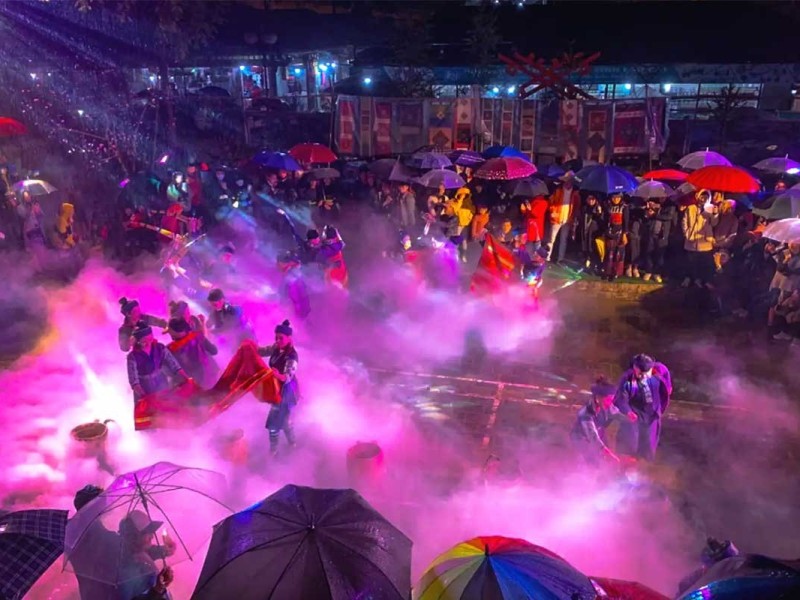
Sapa Love Market Today: Tradition Meets Tourism
In today’s world, the Sapa Love Market sits at the crossroads of heritage and modern tourism. The market still radiates with the energy and customs of the past, but now it welcomes a new wave of visitors, each seeking a slice of authentic Sapa. If you’re curious about the Sapa love market today, you’ll notice both what remains unchanged and what has evolved. The songs, dances, and colorful attire of local ethnic groups still set the stage, while guided tours, visitor amenities, and a more structured schedule reflect the influence of the travel industry. This blend creates a space where tradition and tourism in Sapa meet—sometimes in harmony, sometimes in tension, always shaping the traveler experience.
Travelers searching for real connection find it in the genuine smiles, handmade crafts, and spontaneous performances that still echo through the main square. Others may be drawn by the new experiences that cater to guests, such as cultural workshops, food stalls with modern twists, and photography zones. The Sapa Love Market has found a way to adapt while preserving its authenticity, giving each visitor a chance to discover their own version of its magic. If you want to understand how local life, adaptation, and modern travel come together, the market offers a living lesson in resilience and change. Dive deeper, and you’ll see why it continues to be a highlight of Sapa tourism.
If you’re ready to experience this balance for yourself, use our travel guide and start planning your visit to the heart of northern Vietnam.
Modern Adaptations and New Experiences
As the market has grown, so too has its ability to innovate and embrace change. The modern Sapa love market introduces new experiences that make the event accessible and engaging for today’s visitors, while maintaining roots in local culture. You’ll notice that market activities in Sapa now range from traditional performances to hands-on workshops, each offering a fresh perspective on the region’s customs.
- Cultural Performances: Set times for dance and music allow travelers to witness age-old rituals in a welcoming format.
- Craft Workshops: Guests can try their hand at indigo dyeing or jewelry making, gaining insight into the skills of local artisans.
- Gastronomy Upgrades: New food stalls offer both classic highland flavors and contemporary twists on old favorites.
- Visitor Experiences Sapa: Guided walks and interactive exhibits reveal hidden meanings behind each tradition.
- Change and Innovation: The market experiments with new ways to share stories—like local-led tours or community art projects—without losing sight of its soul.
These changes help ensure that each visitor finds something meaningful, whether they’re first-timers or returning to see what’s new. The blend of old and new at the Sapa Love Market reflects the adaptability of the people and the vibrancy of the culture.
Curious about the latest experiences? Don’t miss the opportunity to try a workshop or join a dance—these moments make every visit unique.
The Market’s Role in Sapa’s Tourism Scene
The Sapa Love Market plays a pivotal role in shaping how the world sees Sapa. As the market draws travelers from around the globe, it also supports local families, artisans, and the region’s broader reputation for cultural tourism. Recent data from the Sapa tourism board shows that market nights account for a significant share of visitor traffic, boosting income for vendors and helping preserve traditional crafts. The economic impact Sapa market brings is clear in the growth of homestays, guided tour bookings, and even new businesses that cater to cultural explorers.
- Cultural Tourism in Sapa: The market is a key anchor for travelers seeking authentic experiences and meaningful connections.
- Economic Impact: Many families depend on market weekends for income, from food vendors to handicraft makers.
- Destination Appeal: Photos, stories, and word-of-mouth buzz about the market fuel international interest in Sapa as a destination.
- Sustainability and Reputation: Community leaders work hard to balance visitor numbers with the need to protect rituals and spaces for future generations.
- Social Importance: The event is still a cherished time for locals to gather, share, and celebrate, keeping the spirit of the mountains alive.
Understanding this dual role—local lifeline and international stage—can help travelers appreciate why responsible tourism matters. If you want to leave a positive mark, seek out sustainable tour options, support local crafts, and respect the market’s rhythms.
For more insights or help arranging a responsible trip to the Sapa Love Market, reach out to us at Asia Travel Links or email us for personalized advice. Your journey supports not just your memories, but the future of this remarkable tradition.
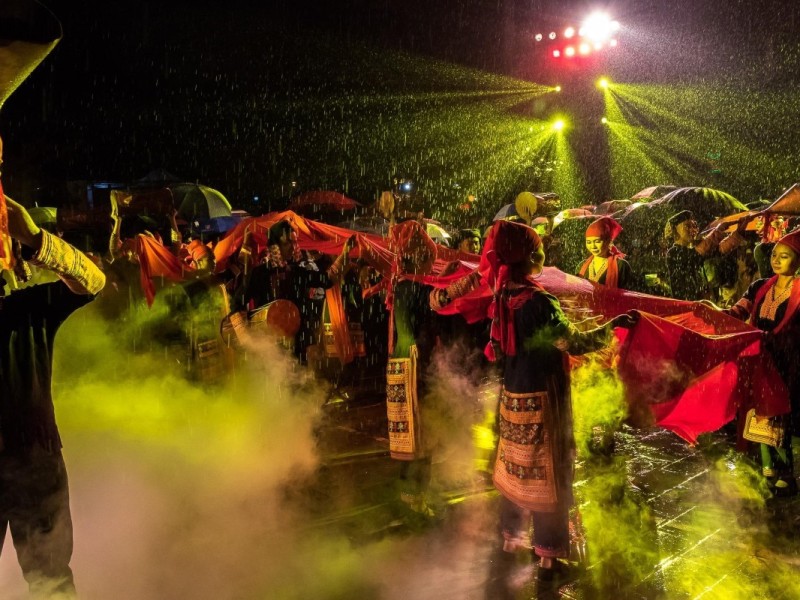
Planning Your Visit: When, Where, and How to Experience the Sapa Love Market
Planning your visit to the Sapa Love Market in Sapa, Vietnam can be the difference between an average trip and a truly unforgettable experience. Every traveler wants to make the most of their journey, and this guide offers clear, actionable advice to ensure that your time at the market is smooth, rewarding, and rich in discovery. Whether you’re a first-time visitor or returning to explore deeper, these essentials will help you prepare for every aspect of your adventure—from picking the perfect date to finding your way in town.
The logistics of attending the Sapa Love Market are surprisingly straightforward when you know what to expect. You’ll find guidance here on the best time to visit, how to get there, and where to stay, plus insider tips for navigating crowds, packing for unpredictable weather, and getting the most from local encounters. With careful planning, you can experience the energy, heritage, and warmth that have made this event a must for cultural travelers in northern Vietnam.
Ready to turn your Sapa Love Market plans into reality? Let this travel guide walk you through every step, and reach out to Asia Travel Links for expert support and custom itineraries.
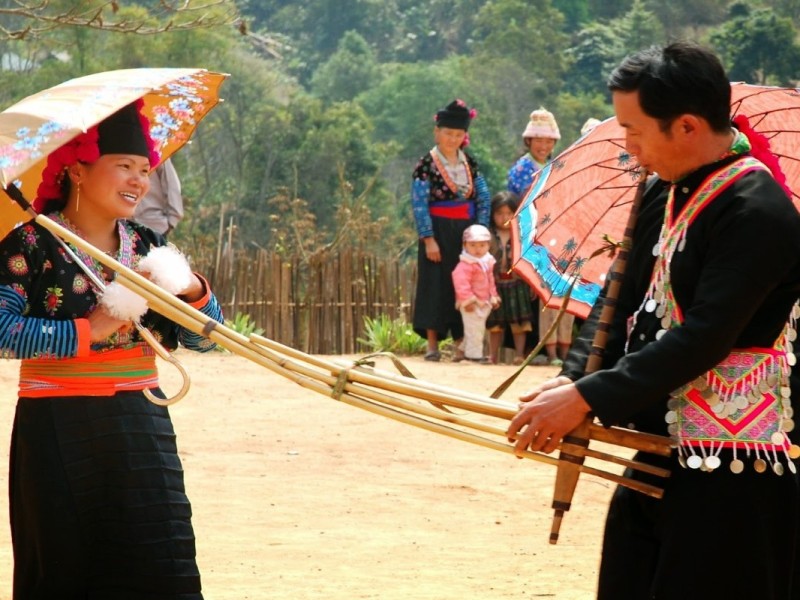
The Best Time to Experience Sapa Love Market
Timing is everything if you want to enjoy the Sapa Love Market at its most vibrant and accessible. For most visitors, the best time to visit the Sapa Love Market is Saturday evening, when the town fills with color, music, and a sense of anticipation. This weekly event draws locals from surrounding villages as well as curious travelers, creating a lively, welcoming atmosphere that showcases the best of Sapa’s traditions.
If you’re aiming for the fullest cultural experience with manageable crowds, consider arriving early in the evening, just as the market comes alive but before the peak of activity. The dry months from March to May and September to November generally offer the most comfortable weather, while summer and winter bring their own seasonal character—from misty, romantic evenings to the buzz of festival days. Special celebrations and festivals, including the colorful Sapa Flower Festival and New Year, often coincide with extra market events, providing unique opportunities for deeper immersion.
Set your calendar for a Saturday in Sapa, and you’ll discover why this gathering remains one of the most memorable in northern Vietnam. For detailed schedules and festival updates, Asia Travel Links is happy to assist with up-to-date information.
Seasonal Events and Weekly Gatherings
Knowing exactly when to attend the Sapa Love Market can transform your visit from ordinary to extraordinary. Here are the essential timings and special occasions to keep in mind:
- Saturday Nights: The core weekly event, held in the main square of Sapa, attracts locals and visitors every Saturday from dusk into the evening.
- Festival Schedule Sapa: Major festivals—such as the Sapa Flower Festival, Lunar New Year (Tet), and Independence Day—often feature expanded markets with special performances and rituals.
- Sapa Weekly Market: Beyond the love market, other local markets are held throughout the week in surrounding villages. Each offers a distinct flavor and a chance to explore regional culture.
- Seasonal Events Sapa: During spring and autumn, the market aligns with planting or harvest festivals, creating a lively, colorful scene full of traditional costumes and music.
- Sapa Festivals: Check the local calendar or consult Asia Travel Links for a current list of cultural gatherings that may enhance your stay.
Arriving on a festival night or during a major event means you’ll witness the market at its most animated and photogenic. With a little planning, you can immerse yourself in celebrations that few travelers get to experience.
For the latest schedules and guidance, contact us for tailored festival and event updates—your best chance to catch the market at its peak.
Weather Tips and Crowd Considerations
The weather in Sapa is famously unpredictable, making good preparation essential for a smooth and enjoyable visit to the Sapa Love Market. Understanding the local climate and its impact on crowds helps you maximize comfort and avoid unnecessary hassles.
- Sapa Weather: Expect cool, misty conditions from October to March, and sudden rain showers from May to September. Layering is key.
- Packing for Sapa: Bring a waterproof jacket, warm layers, comfortable shoes, and an umbrella—no matter the forecast.
- Sapa Climate: Evenings can get chilly, especially in winter; daytime warmth can quickly give way to night cold.
- Rainy Season Sapa: Markets still happen, but stalls may move under cover, and crowds often thin out—perfect if you prefer a quieter experience.
- Dry Season Sapa: Spring and autumn offer the clearest skies, the most vibrant colors, and larger crowds.
- Crowd Timing: Arrive before sunset for the most authentic market scenes, and avoid peak tour group hours for a more local feel.
With these weather and crowd insights, you can plan your evening for comfort and memorable moments. Packing smartly ensures you’ll enjoy every performance and gathering, rain or shine.
Looking for a stress-free market experience? Reach out to Asia Travel Links for local packing lists, updated weather forecasts, and real-time travel tips. Your adventure awaits—prepared, comfortable, and ready for anything.
Robert's Weekend Experience: Navigating the Crowds and Charms
Everyone told me the Sapa Love Market on a Saturday night was the quintessential experience, a vibrant heart pulsing at the core of the town. But they also whispered about the Sapa crowds. As a traveler who usually shies away from peak times, I braced myself. My weekend Sapa market visit was going to be a test of patience, a challenge I genuinely wanted to conquer to truly understand the market's essence. What I discovered was that with a little strategy, even a busy market Sapa can reveal its most authentic charms.
The moment I stepped into the main square that Saturday evening, it was immediately clear: the whispers were accurate. A river of people flowed around the Sapa Stone Church, a colorful mix of local ethnic communities and eager tourists, all drawn by the magnetic pull of the market. The air buzzed with a hundred different conversations, punctuated by the high-pitched calls of vendors and the surprisingly clear strains of traditional instruments attempting to cut through the din. It was chaotic, exhilarating, and for a fleeting moment, a little overwhelming. My first instinct was to retreat, to find a quiet corner. But then I noticed something. Amidst the swirling masses, there were pockets of stillness, moments of genuine interaction that defied the hustle.
I started by doing what most do: following the flow. This led me through the main thoroughfares, past stalls laden with shimmering silver jewelry and vibrant textiles. The sheer volume of people meant slow progress, but it also forced me to really look at the details. I saw a group of Hmong women, their faces etched with laughter lines, sharing a quiet joke while selling their intricate embroidery. I heard a young man playing a haunting melody on his khene, not for the tourists, but seemingly for the mountain air itself, his eyes scanning the crowd with an unspoken hope. This wasn't just a crowd; it was a living, breathing community.
My turning point came when I decided to veer off the main drag. I noticed a dimly lit alley leading away from the central square, less crowded, yet still resonating with the market's energy. Here, I found a small group of Red Dao women and men, their distinctive red headscarves catching the faint light. They were singing softly, their voices harmonizing in a way that truly transported me. There were no aggressive sales pitches, just gentle smiles and an openness to share their culture. I spent a good twenty minutes there, simply listening, feeling the rhythm of their songs, and making a quiet connection. It was a moment of true visitor experience Sapa authenticity that the main thoroughfare simply couldn't offer. This taught me a crucial lesson: sometimes, the most profound experiences at a busy market Sapa aren't found in the thickest of the crowd, but in seeking out the fringes, the quieter corners where the real heart of the tradition beats.
From my crowded yet charming weekend visit, I picked up some invaluable crowd tips Sapa visitors can use:
- Arrive Early for Atmosphere, Stay Late for Intimacy: The market starts buzzing around 7 PM on Saturdays. Arriving just as it begins (or lingering past 9 PM) can offer slightly less dense crowds and different vibes. The earlier hours feel more like a community gathering; later, it gets more tourist-heavy but still retains its essence.
- Explore the Side Streets & Alleys: Don't be afraid to venture off the main square. These narrower paths often lead to smaller, more traditional gatherings and artisan stalls where you can interact more genuinely. This is where you'll find the true quiet moments.
- Focus on Specific Experiences: Instead of trying to see everything, pick a few key elements you want to experience – perhaps listening to the music, or watching a specific craft being made. This helps manage expectations in a peak hours environment.
- Embrace the Flow, Then Divert: Allow yourself to be carried by the general visitor flow initially to get a sense of the market's scale. Then, consciously choose to step aside, observe, and engage in smaller local interaction opportunities.
- Dress Comfortably and Securely: With so many people, pickpocketing can be a concern, though rare. Keep valuables secure. Comfortable shoes are a must for navigating the uneven terrain and standing for extended periods.
Despite the initial surge of people, Robert's weekend experience at the Sapa Love Market was incredibly rewarding. It proved that even in its busiest moments, the market holds onto its intrinsic charm and offers profound cultural insights for those willing to navigate its vibrant chaos. It was a genuine encounter with a living tradition that I wouldn't trade for anything.
Recommendation: Don't let the thought of crowds deter you from experiencing the Sapa Love Market on a bustling weekend. While it's popular for a reason, its true magic lies in the authentic interactions and hidden corners you can discover. Go with an open mind, a sense of adventure, and these practical tips, and you'll undoubtedly find your own unique charm amidst the vibrant energy.
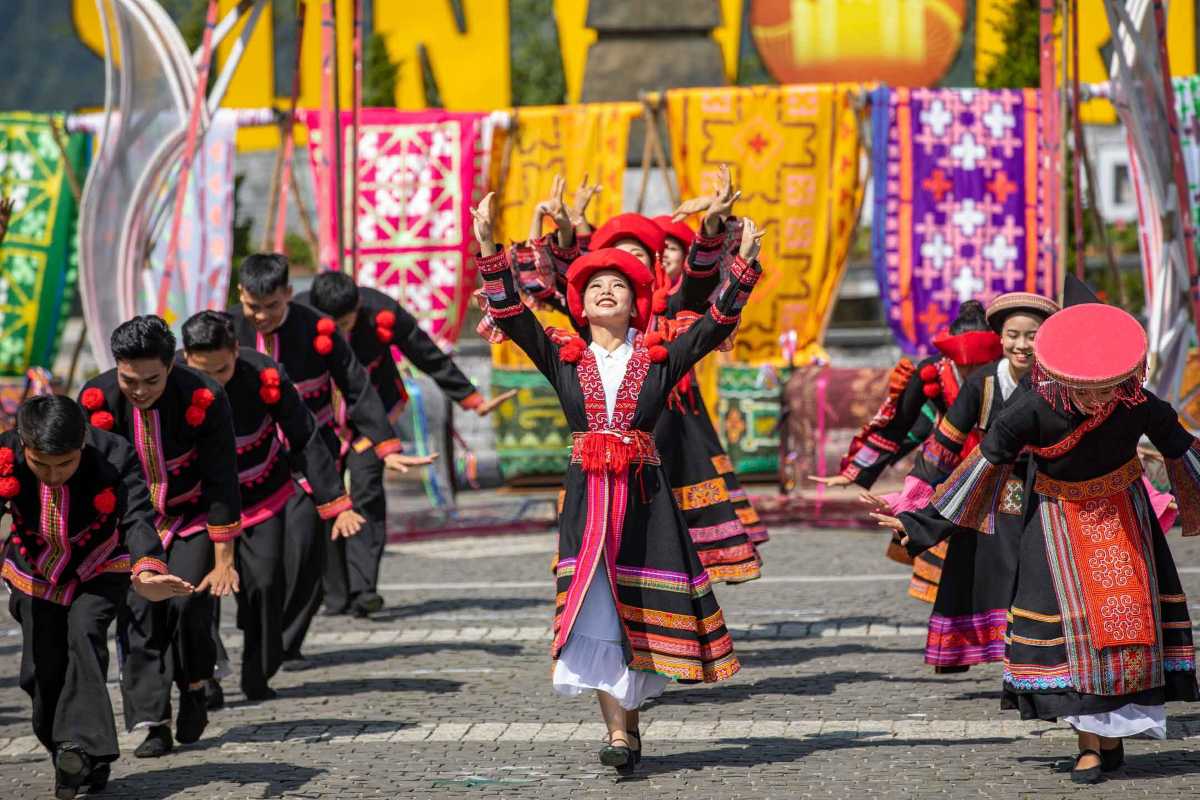
Getting to Sapa and the Sapa Love Market
Reaching the Sapa Love Market is easier than ever, with multiple transport options from Hanoi and other northern cities. Whether you prefer comfort, speed, or budget travel, there’s a route that fits your plans. Knowing your choices helps you save time, manage costs, and ensure a smooth journey to this vibrant mountain town. Here’s how you can get to Sapa for your market adventure.
The best transport to Sapa is often a combination of train, bus, or private car. Each method has its own pros and cons, so compare them carefully before booking. If you’re traveling from Hanoi, allow around 5 to 8 hours of travel time, depending on the route you choose. Advance booking—especially during busy weekends or holidays—is always wise.
For up-to-date schedules, real traveler reviews, and booking support, Asia Travel Links can help you plan your perfect route from Hanoi to the Sapa Love Market.
Transportation Options from Hanoi and Nearby Cities
To reach Sapa, travelers can choose from three main transport options. Here’s what you need to know about each:
- Sleeper Train Sapa: The most iconic option. Board an overnight train from Hanoi to Lao Cai (8 hours), then take a minibus or taxi (1 hour) to Sapa. Expect clean cabins, gentle night travel, and scenic early morning views. Prices range from $20 to $40 for standard cabins; luxury options are available.
- Hanoi to Sapa Bus: Direct, comfortable, and budget-friendly. Buses leave from central Hanoi and arrive in Sapa town (5.5–6.5 hours). Look for modern “sleeper” buses with reclining seats. Expect to pay $13–$25 one way. This is the fastest direct choice, but can be less comfortable on winding roads.
- Private Car or Shuttle: The most flexible and comfortable option, ideal for families or groups. Door-to-door service from your hotel in Hanoi to Sapa. The trip takes about 5–6 hours. Prices start from $120–$150 per vehicle. Splitting the cost makes it affordable for small groups.
Tips for choosing your best route:
- Book train tickets and bus seats online or via reputable agencies in Hanoi.
- Travel time Sapa routes can be affected by weather, especially in winter.
- The road from Lao Cai to Sapa is winding but scenic—sit on the left for mountain views.
For personalized advice or booking, contact Asia Travel Links for the latest deals and comfort-class options to the Sapa Love Market.
How to Find the Market Once You’re in Sapa
Once you arrive in Sapa, finding the Sapa Love Market is refreshingly simple. The main event unfolds right in the heart of town, making it accessible by foot or a quick xe ôm (motorbike taxi).
- Sapa Stone Church Directions: The market gathers in the central square next to the historic Sapa Stone Church, a key local landmark. From most hotels, it’s less than a 10-minute walk.
- Sapa Central Landmarks: Follow signs to the church, or ask any local—everyone knows where the market is held.
- Walking Sapa: The town is compact and pedestrian-friendly. Wear comfortable shoes for the cobblestone streets and gentle hills.
- Xe Om Sapa: If you’re staying further out or returning late, use a xe ôm (motorbike taxi) for a few dollars. Always agree on the fare before hopping on.
- Local Route Tips: Arrive before sunset to soak up the changing atmosphere, and use the crowd as your compass—just follow the flow toward the music and lights.
Reaching the Sapa Love Market is a breeze with these directions. For step-by-step maps or custom walking tours, Asia Travel Links is ready to help make your arrival smooth and stress-free. Enjoy your night out in the heart of Sapa!
Javier's Overnight Train Journey: Tips for a Comfortable Ride to Sapa
When planning my trip to the Sapa Love Market, the Hanoi to Sapa train journey seemed like an adventure in itself. Everyone talked about it as the quintessential way to reach the mountains, but details beyond "it's overnight" were a bit sparse. As a first-timer on an overnight train Sapa bound, I went in with a mix of excitement and apprehension. Would I actually sleep? How comfortable could it really be? My experience taught me that with a few key preparations, it’s not just comfortable, but a truly enjoyable part of the Sapa experience.
Stepping onto the platform at Hanoi's Ga Tran Quy Cap station, the chaos of the city seemed to amplify. Porters shouted, vendors bustled, and the air was thick with anticipation. Finding my carriage and then my soft-sleeper cabin was a small victory in itself. The cabin, a cozy four-berth space, was surprisingly clean, if a little snug. My cabin-mates, a quiet Vietnamese couple and a solo European backpacker, offered polite nods. The rhythmic clatter of the train pulling out of the station was surprisingly soothing, a lullaby that promised escape from the urban sprawl.
As the night deepened, the scenery outside transformed from city lights to blurred rural landscapes, then to impenetrable darkness. My initial apprehension about sleeping quickly faded. The gentle rocking of the train, combined with the anticipation of Sapa, was surprisingly effective. I’d packed strategically: a comfortable eye mask, earplugs (essential for light sleepers or noisy cabin-mates), and a thin travel blanket for extra coziness, despite the provided bedding. I also made sure to have my passport and money secured in a small, accessible crossbody bag, rather than under my pillow. The journey was mostly smooth, punctuated by the occasional jolt or whistle. Waking up just before dawn, I peered out the window to see misty mountains begin to materialize, a truly breathtaking sight that marked the start of the adventure.
The arrival in Lao Cai, Sapa's closest train station, was efficient. Guides and xe ôm drivers were waiting, ready to whisk passengers up the winding mountain road to Sapa town. This final leg, though short, was spectacular, offering glimpses of terraced rice fields emerging from the morning fog. The entire train travel Vietnam experience was more than just transport; it was a gradual, scenic transition from city bustle to tranquil mountain escape.
Based on my overnight train Sapa journey, here are my top train tips Sapa bound for a comfortable and safe ride:
- Book Soft Sleeper (4-berth) if Possible: This is generally the most comfortable option. Hard sleepers (6-berth) are cheaper but offer less space and privacy. Private cabins (2-berth) are available but more expensive. Book well in advance, especially for weekends or peak seasons.
- Secure Your Tickets in Advance: Use reputable online booking platforms or buy directly from the station to avoid scams. I found it easy to book through a local travel agent in Hanoi, which took the stress out of it.
- Pack Smart for the Cabin:
- Small Day Bag: Keep essentials like passport, wallet, phone, medications, and toiletries in a small bag accessible in your bunk. Don't leave valuables unattended.
- Layers: Temperatures can vary. Bring a light jacket or cardigan.
- Eye Mask & Earplugs: Crucial for light sleepers or if your cabin mates are chatty.
- Snacks & Water: While there's usually a small cart selling drinks and instant noodles, having your own provisions is always better.
- Hand Sanitizer & Wet Wipes: Useful for general cleanliness.
- Power Bank: Charging points can be scarce or occupied.
- Manage Expectations: It's a train, not a luxury hotel. There will be some noise and movement. Embrace it as part of the authentic Vietnamese travel experience.
- Understand Lao Cai to Sapa Transfer: From Lao Cai station, you'll need to take a minivan or xe ôm (motorbike taxi) up to Sapa town (approx. 45-60 minutes). Pre-arrange this with your hotel or be prepared to negotiate a fare upon arrival. Don't be pressured by overly insistent drivers; there are always plenty of options.
- Enjoy the Morning Scenery: Set an alarm to wake up before arrival in Lao Cai. The pre-dawn and sunrise views of the mountains and terraced fields are truly magnificent and a great start to your Sapa adventure.
My overnight train Sapa journey with Javier was a seamless and surprisingly restful experience that perfectly set the stage for the magic of the Sapa Love Market. It wasn't just a means to an end; it was the first gentle whisper of the mountains welcoming me.
Recommendation: For an authentic and comfortable transition to Sapa, definitely choose the overnight train from Hanoi. With a bit of preparation and these train tips Sapa bound, it becomes an integral and enjoyable part of your overall adventure to the Sapa Love Market.
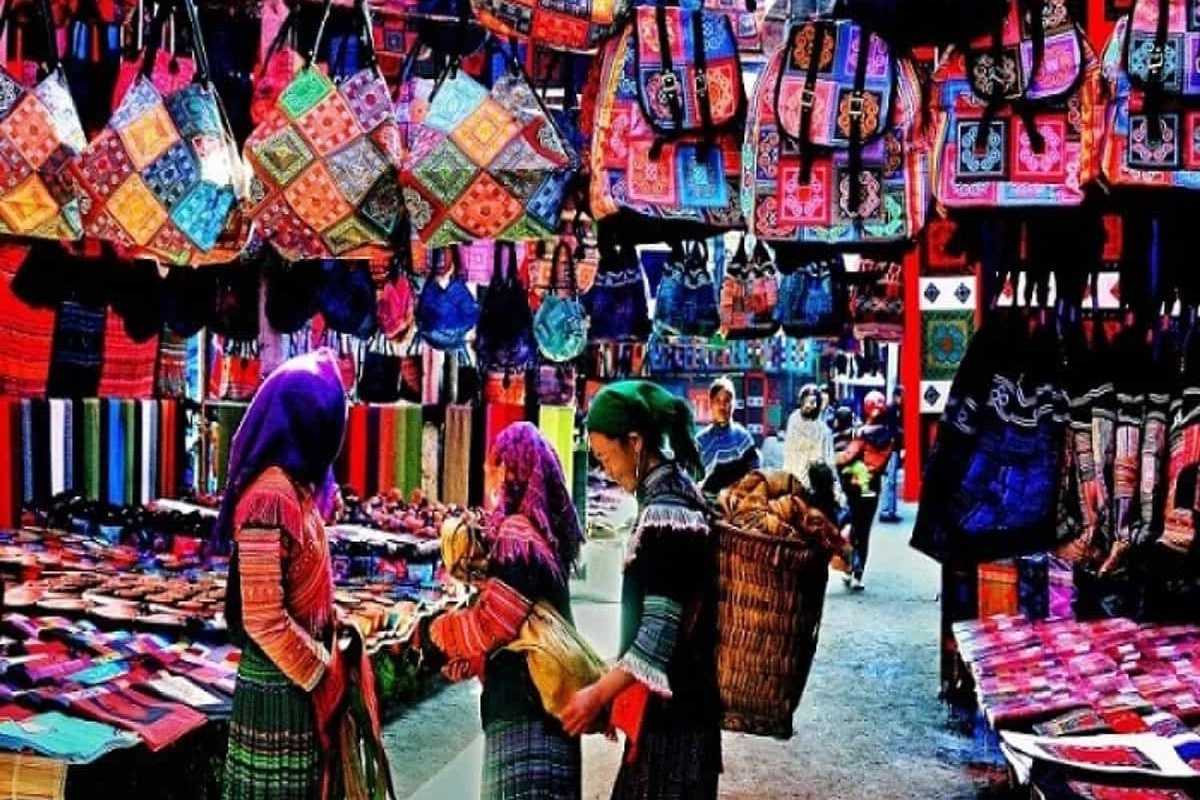
Where to Stay: Top Accommodation Picks Near the Sapa Love Market
Choosing the right place to stay near the Sapa Love Market is essential for comfort, convenience, and a deeper connection to local life. You’ll find a diverse range of options, from chic hotels in the heart of Sapa to warm, family-run homestays and quirky guesthouses tucked into the hills. The key is to match your budget and travel style to the perfect spot, so your nights are as memorable as your days exploring the market.
The Sapa Love Market attracts visitors of every type, so there are options for luxury, mid-range, and budget travelers alike. Staying close to the market square means you’ll enjoy quick access to performances and can soak up the festive nighttime atmosphere. If you crave authenticity, try a homestay with a local family—these stays often include shared meals, cultural insights, and a genuine welcome. For a blend of privacy and charm, look for boutique hotels or unique guesthouses with views of the mountains and rice terraces.
With so many choices, booking the right room is all about prioritizing location, comfort, and that extra bit of Sapa magic. Need advice? Asia Travel Links can recommend trusted options for any budget, plus help with last-minute availability or special requests.
Hotels, Homestays, and Unique Local Lodging
No matter your style, Sapa offers an accommodation type to suit. Here’s how the most popular options compare:
- Hotels Sapa Love Market: Best for convenience, amenities, and quick access to the market. Look for hotels in the town center for minimal walking. Upscale options offer spa services, on-site dining, and stunning town views.
- Homestays Sapa: Ideal for travelers craving authentic experiences. Staying with a family in or near Sapa means sharing meals, learning about daily routines, and gaining insight into local customs. Choose a homestay within walking distance of the market for the best of both worlds.
- Sapa Guesthouse: Perfect for budget-minded travelers who want privacy but not the price tag of a hotel. Guesthouses offer basic comforts, local hospitality, and often include breakfast.
- Unique Lodging Sapa: Try mountain lodges, eco-resorts, or rustic bungalows for something special. These spots feature epic views, tranquil settings, and a memorable stay away from the bustle.
- Best Area Sapa Accommodation: The market area and town center are the top picks for convenience. For more peace and scenery, check the hillsides just outside town.
Wherever you stay, be sure to book early during weekends and festivals. Proximity to the Sapa Love Market lets you enjoy every moment, from sunset performances to late-night snacks.
Ready to lock in your perfect stay? Reach out to Asia Travel Links for tailored hotel picks and first-hand recommendations.
First-Hand Tips for Booking the Best Places
Booking the right room in Sapa can make or break your experience at the Sapa Love Market. Follow these expert tips to secure the best value and comfort:
- Book Sapa Hotel Early: Hotels and homestays fill up fast on weekends and during festivals. Reserve at least a month in advance for peak seasons.
- Review Booking Platforms Sapa: Use reputable platforms (e.g., Agoda, Booking.com) and check both reviews and photos for accuracy.
- Check Hot Water and Heating: Nights in Sapa can be cold year-round. Ask if the room has hot water, heating, and extra blankets.
- Location Matters: Prioritize stays within a 10-minute walk of the market for late-night returns and spontaneous exploring.
- Ask About Breakfast: Many stays include a local breakfast—this is both convenient and a great way to sample regional flavors.
- Flexible Cancellation Policies: Opt for free cancellation where possible, especially if your plans might change last minute.
- Special Requests: If you need a family room, accessibility, or specific amenities, email the property ahead of time to confirm.
By following these steps, you’ll avoid common pitfalls and enjoy comfort, convenience, and great value at the Sapa Love Market.
Still have questions or need a hand with booking? Asia Travel Links can help you compare options, find deals, and ensure your accommodation fits your needs perfectly.
Sarah's Homestay Highlight: Immersing in Local Family Life
When I planned my visit to the Sapa Love Market, I knew I wanted more than just a hotel room. I craved genuine connection, an authentic glimpse into the lives of the local ethnic communities. That's why I chose a homestay, and it turned out to be the absolute highlight of my trip. My Sapa homestay experience wasn't just about a bed for the night; it was an invitation into a family's heart, proving that true luxury often lies in simplicity and connection. It transformed my understanding of Sapa, making it feel less like a destination and more like a second home.
Arriving at Ms. Mai's humble wooden house, nestled on a hillside overlooking terraced rice fields, I was greeted with the warmest smile imaginable. The aroma of simmering herbs and rice instantly made me feel at ease, a stark contrast to the bustle of Hanoi. My room was basic but spotlessly clean, with a comfortable mattress on the floor and a mosquito net – everything I needed. Ms. Mai, a Hmong woman with kind eyes and nimble hands, immediately offered me a cup of hot, fragrant herbal tea. Her children, initially shy, soon warmed up, their bright smiles speaking volumes beyond any language barrier. This was the start of my local family stay Sapa, and I knew, right then, it was the right choice.
The true immersion began at dinner. Gathered around a low table, the family shared a simple but delicious meal: fresh vegetables from their garden, perfectly cooked rice, and a hearty pork stew. Despite my limited Vietnamese and their basic English, we communicated through smiles, gestures, and the universal language of shared food. Ms. Mai patiently taught me how to properly use chopsticks for certain dishes, and her husband, Mr. Thao, showed me intricate patterns on a piece of indigo fabric. Later, their eldest daughter, Linh, shyly taught me a few basic Hmong phrases, giggling good-naturedly at my pronunciation. This wasn't just family meals Sapa; it was a cultural exchange, a true language exchange Sapa that deepened my appreciation for their daily lives. I learned about their farming, their traditions, and their dreams. The warmth of their hospitality was palpable, a genuine sense of belonging that no hotel could ever replicate. It felt less like a transaction and more like forming a fleeting, yet profound, friendship.
My homestay truly demonstrated the profound culture and generosity of the Hmong people. It wasn't just about saving money on authentic Sapa lodging; it was about gaining priceless insights.
Here are my top practical takeaways for an enriching homestay experience:
- Choose a Reputable Homestay: Research options with good reviews that emphasize genuine cultural exchange, not just cheap accommodation. Many can be booked through platforms like Booking.com or Airbnb, or via local tour agencies.
- Embrace Simplicity: Homestays are typically basic. Expect shared bathrooms, simple bedding, and no air conditioning (Sapa's cool climate usually means you don't need it). Go with an open mind, ready for a less luxurious, but more authentic, stay.
- Bring a Small Gift: A small, thoughtful gift for the family (e.g., local treats from your home country, school supplies for children) is a lovely gesture of appreciation.
- Participate Actively: Offer to help with chores (like preparing vegetables for dinner), ask questions (respectfully), and engage in conversations, even if through gestures. Your willingness to participate will be deeply appreciated.
- Learn Basic Phrases: Even "Xin chào" (hello), "Cảm ơn" (thank you), and "Ngon quá!" (delicious!) in Vietnamese or Hmong will go a long way in building rapport.
- Respect Their Customs: Observe and follow the family's lead on dining etiquette, dress code, and behavior. Ask if you're unsure.
- Be Mindful of Resources: Water and electricity might be limited. Be conservative with usage.
My Sapa homestay experience with Ms. Mai's family wasn't just a place to sleep; it was a profound journey into the heart of Sapa. It was where I truly understood the meaning of hospitality Sapa style, and where my appreciation for the Love Market's cultural roots grew exponentially. It felt like home, even for just a few nights.
Recommendation: If you genuinely want to connect with the local culture and gain an unforgettable insight into the lives of Sapa's ethnic communities, choosing a homestay is an absolute must. It's an unparalleled opportunity for learning and cultural immersion that will deepen your entire Sapa Love Market adventure.
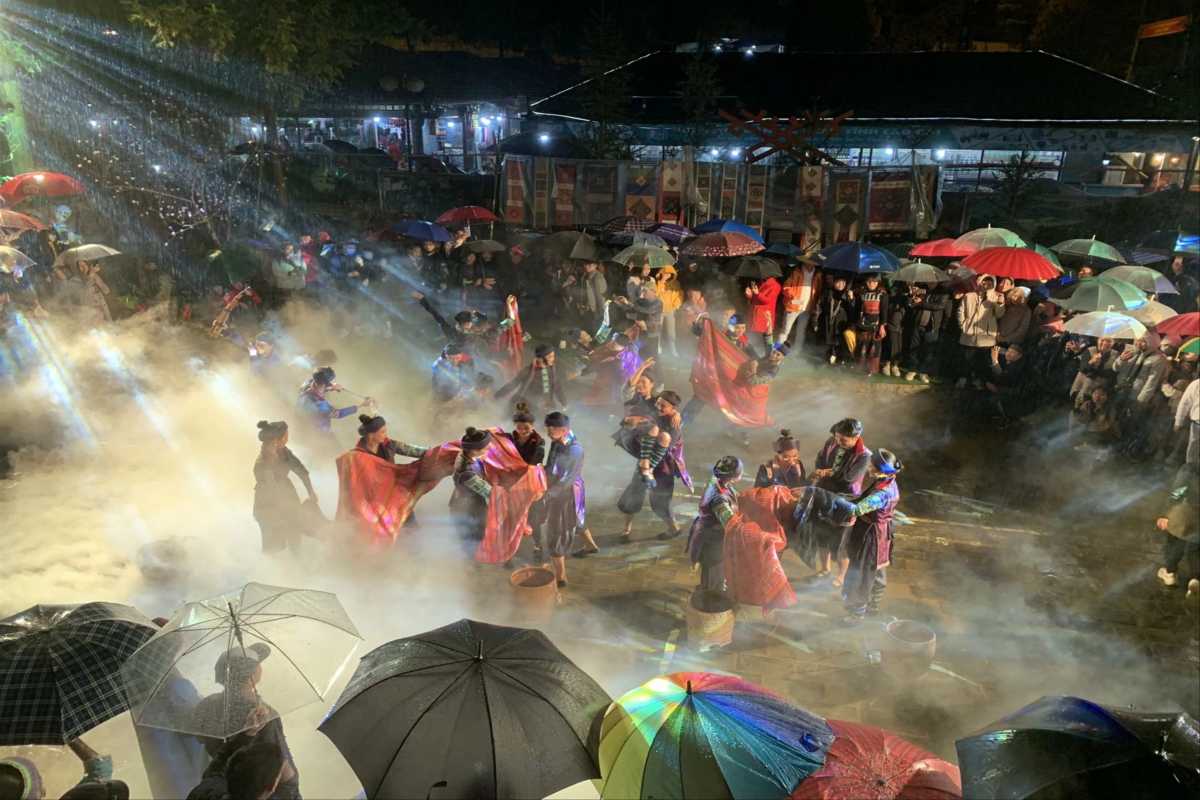
Essential Packing List for Sapa Love Market
Packing smart for the Sapa Love Market means you’ll be ready for shifting weather, lively crowds, and every spontaneous adventure the mountains can offer. Don’t get caught unprepared—Sapa’s climate is famously unpredictable, and a little planning ensures your comfort from market dusk to dawn.
Here’s your go-to packing list, tailored to the real conditions you’ll encounter when visiting the Sapa Love Market:
- Layers for Sapa: Pack a combination of light shirts, warm sweaters, and a down jacket. Temperatures swing from warm afternoons to chilly evenings, even in summer.
- Rain Gear Sapa: A compact, waterproof jacket or poncho is essential. Sudden showers are common—especially from May to September.
- Walking Shoes Sapa: Comfortable, sturdy footwear is a must for cobbled streets and market wanderings. Waterproof shoes are a bonus.
- Dry Bag: Protect valuables and electronics from rain or market spills.
- Cold Weather Accessories: In winter or the rainy season, bring gloves, a hat, and a scarf—wind can make it feel colder than the forecast suggests.
- Essentials Kit: Small bills for snacks and souvenirs, reusable water bottle, and a basic first aid kit.
- Electronics: Portable charger and waterproof phone case for photos and navigation.
This simple checklist ensures you stay comfortable, dry, and ready for anything Sapa throws your way—rain, shine, or celebration.
Want a personalized packing guide or more climate tips for your trip? Asia Travel Links is happy to help you prepare for the perfect Sapa Love Market adventure.
David's Smart Packing Secrets: Staying Warm and Dry in Sapa
Everyone knows Sapa is beautiful, with its misty mountains and vibrant ethnic markets. What many guidebooks don't emphasize enough is just how quickly the weather can turn, especially when you're planning a visit to the Sapa Love Market. My first trip to Sapa was a lesson in humility and, crucially, a crash course in smart packing Sapa style. I made a few key packing mistakes Sapa that left me shivering and damp, but they taught me invaluable lessons for every subsequent journey. Now, I consider myself something of an expert on staying dry Sapa market bound, and I'm here to share my hard-won wisdom so you don't repeat my soggy saga.
My initial arrival in Sapa was textbook – cool, crisp air, beautiful sunshine. I thought my light jacket and jeans would be sufficient for the evening's Love Market. Big mistake. Within an hour of the market kicking off, a fine drizzle started, quickly escalating into a proper downpour. I was unprepared, shivering, and my phone, precariously tucked into a jacket pocket, was getting distressingly damp. While the cultural spectacle of the market was captivating, my personal comfort level plummeted, detracting significantly from the experience. I ended up huddling under a flimsy tarp, watching others, clearly more seasoned, move comfortably through the rain in their waterproof gear. That night, I vowed to never be caught off guard again.
On my return visits, armed with lessons learned, the Sapa Love Market became an entirely different experience, rain or shine. I learned the power of layers, the magic of a reliable waterproof shell, and the absolute necessity of protecting my electronics. I even discovered that having the right gear allows you to embrace the "misty" Sapa days, making them feel atmospheric rather than miserable. It's about adapting to the environment, not battling it. This newfound preparation allowed me to focus entirely on the vibrant colors of the ethnic clothing, the haunting melodies of the khene, and the genuine interactions with local vendors, without a single thought about being cold or wet. It truly transformed my travel essentials Sapa mindset.
From my own trials by moisture, here are David's Smart Packing Secrets for a comfortable Sapa Love Market visit:
- Layers are Your Best Friend: Sapa's weather can fluctuate wildly. Pack base layers (thermal if visiting in cooler months), a fleece or wool mid-layer, and a warm jacket. You can easily add or remove layers as the temperature changes throughout the day and into the evening.
- Invest in Proper Rain Gear: This is non-negotiable, especially for staying dry Sapa market outings.
- Waterproof Rain Jacket: A lightweight, packable, and truly waterproof (not just water-resistant) jacket with a hood is essential.
- Rain Pants (Optional but Recommended for Treks): If you plan on doing any serious trekking, waterproof pants will save you from soggy misery.
- Waterproof Shoes/Boots: Your regular sneakers won't cut it. Opt for waterproof hiking shoes or boots with good grip. My first trip, my feet were soaked – never again!
- Protect Your Electronics – Critically! The mist and rain can wreak havoc.
- Dry Bag/Waterproof Phone Pouch: Absolute lifesavers. A small dry bag for your camera and larger electronics, and a waterproof pouch for your phone, are vital. This protects against unexpected downpours and persistent mist.
- Silica Gel Packets: Toss a few into your camera bag or electronics pouch to absorb moisture.
- Consider a Small, Packable Umbrella: While not always practical in wind, a compact umbrella can offer quick shelter.
- Quick-Drying Clothing: Opt for synthetic fabrics or wool blends over cotton, which takes forever to dry if it gets wet.
- Warm Hat and Gloves (Especially Nov-Mar): Even if it's not raining, Sapa can get surprisingly chilly, particularly after dark.
- Sun Protection: Don't forget sunscreen and a hat for sunny days. The mountain sun can be intense when it's out.
My journey from a soggy first-timer to a prepared traveler profoundly enhanced my appreciation for the Sapa Love Market. It's proof that a little preparation, and learning from your own packing mistakes Sapa, can make all the difference between a memorable experience and a miserable one.
Recommendation: Don't underestimate Sapa's weather! Follow these smart packing Sapa tips, especially focusing on Sapa rain gear and electronics protection Sapa, and you'll be perfectly prepared to soak in all the charms of the Sapa Love Market, come rain or shine.
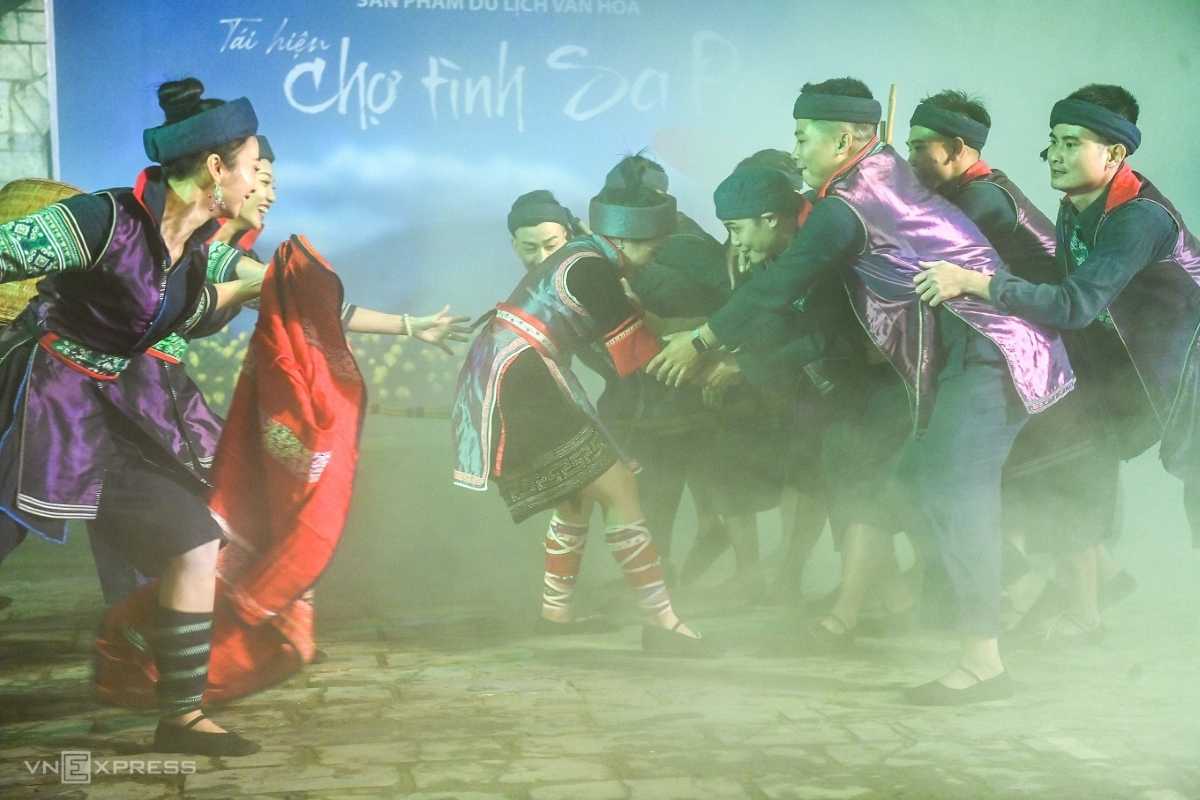
Navigating Language and Communication at the Sapa Love Market
Connecting with locals at the Sapa Love Market can turn a simple visit into a meaningful exchange, even if you don’t speak Vietnamese. With just a few key phrases and the right approach, you’ll find that smiles, gestures, and genuine effort go a long way in Sapa, Vietnam.
Many vendors and local families may know a little English or French, but most everyday communication is in Vietnamese or ethnic minority languages. Using basic greetings or polite questions shows respect and instantly warms interactions. Here are essential language tips Sapa travelers swear by:
- Greeting: “Xin chào” (Hello) – Opens every conversation with warmth.
- Thank you: “Cảm ơn” (Thank you) – Always appreciated after a purchase or help.
- How much?: “Bao nhiêu tiền?” (How much is it?) – Key for bargaining and buying.
- Beautiful: “Đẹp quá!” (So beautiful!) – Compliment handicrafts or local attire.
- Yes/No: “Vâng” / “Không” – Useful in any exchange.
- Sorry/Excuse me: “Xin lỗi” – Helpful if you bump into someone or need attention.
- Where is the market?: “Chợ tình ở đâu?” – Direct and useful if you get lost.
- Can I take a photo?: “Tôi có thể chụp ảnh không?” – Always ask before snapping pictures, especially of people.
Tips for getting the most out of your market conversations:
- Keep your tone friendly and your body language open—smiles build bridges in Sapa.
- Don’t be afraid to use a translation app or notebook; locals appreciate the effort.
- When in doubt, let gestures or pointing do the talking—most vendors are used to communicating with travelers.
By using even a few words and showing respect for local etiquette, you’ll unlock deeper experiences and genuine connections at the Sapa Love Market.
Want more personalized language support or cultural advice? Asia Travel Links offers phrase sheets, guided market tours, and translation assistance to make your time in Sapa effortless and rewarding.
Elena's Phrasebook Success: Connecting with Locals Through Simple Words
Before heading to Sapa, I’d heard countless times that a few words of the local language could open doors, but I was always skeptical. In a place as seemingly remote and culturally rich as Sapa, where multiple ethnic languages are spoken alongside Vietnamese, I figured my efforts would be futile. Yet, armed with a tiny phrasebook and a healthy dose of optimism, I committed to trying. My belief was that even a small effort at Vietnamese phrases for travel could be a powerful gesture of respect. What unfolded at the Sapa Love Market completely transformed my perspective, proving that a handful of simple words can truly be the key to connecting with locals Sapa style.
The Sapa Love Market was a whirlwind of sights and sounds, but what I longed for most was a genuine interaction beyond just pointing at goods. As I wandered past a stall selling beautifully embroidered bags, an elderly Hmong woman, her face a roadmap of gentle wrinkles, smiled at me. Usually, I'd just return the smile and move on. But this time, I took a deep breath, fumbled for a second, and managed a tentative, "Chào bà!" (Hello, Grandmother!).
Her reaction was immediate and heartwarming. Her eyes, which had seemed a little distant, lit up. She chuckled, a warm, melodic sound, and gestured for me to come closer. I picked up one of her bags, admiring the intricate stitching. "Đẹp quá!" (So beautiful!), I managed, pointing to the pattern. She beamed, then began to explain, in a mix of Vietnamese and gestures, the meaning behind the specific motifs – a story of mountains, rice, and family. It wasn't a fluent market conversations Sapa exchange by any means, but the effort on my part had clearly bridged a gap. She offered me a cup of warm, sweet tea, and though we spoke very little, we shared a moment of genuine connection, a sense of shared humanity that transcended language. This simple interaction, sparked by just two words, became the cornerstone of my entire Sapa communication experience. I even managed a "Cảm ơn bà!" (Thank you, Grandmother!) as I eventually moved on, leaving her with another warm smile.
That encounter wasn't isolated. Throughout the market, a simple "Chào anh/chị" (Hello, sir/madam) or a "Cảm ơn" (Thank you) often elicited wider smiles, more patient explanations, and a noticeable shift in demeanor from vendors and locals alike. It felt like being welcomed as a guest, rather than just another tourist. It truly drove home the point: even a minimal phrasebook Sapa effort can unlock incredible moments.
Here are some of Elena's Phrasebook Success Tips for connecting with locals in Sapa:
- Start Simple and Be Consistent: Don't try to master complex sentences. Focus on greetings, thanks, and basic polite phrases. Repetition helps them stick!
- Chào bạn/anh/chị/bà/ông: "Hello" (literally "hello friend/young man/young woman/grandmother/grandfather"). Use the appropriate address for respect.
- Cảm ơn: "Thank you." (Pronounced "gahm-un")
- Ngon quá!: "Delicious!" (For food – always appreciated!)
- Đẹp quá!: "Beautiful!" (For crafts or scenery)
- Bao nhiêu tiền?: "How much money?" (For bargaining, use respectfully)
- Practice Pronunciation (Even Imperfectly): Locals appreciate the effort, even if your pronunciation isn't perfect. Don't be afraid to try!
- Use Gestures and Smiles: These are universal. Combine your few words with genuine smiles and clear gestures for maximum effect.
- Don't Be Afraid of Silence: Not every interaction needs to be a full conversation. A shared smile and a few words can be powerful enough.
- Respect the Local Dialects: While Vietnamese is the official language, many ethnic minorities in Sapa have their own languages (Hmong, Dao, etc.). Your effort in Vietnamese is still a sign of respect and often understood, as many locals also speak Vietnamese.
- Keep Your Phrasebook Handy: A small physical phrasebook or a translation app on your phone can be a quick reference point when you're stuck.
My phrasebook Sapa efforts were not about becoming fluent; they were about building a cultural bridge and showing respect. It's incredible how much a simple word or two can enhance your travel experience, transforming fleeting moments into genuine memories and fostering a true sense of friendliness wherever you go.
Recommendation: Don't hesitate to learn a few Vietnamese phrases for travel before visiting Sapa. My Elena's Phrasebook Success story is proof that these simple words are not just polite gestures, but powerful tools for connecting with locals Sapa and unlocking far more meaningful and memorable encounters at the Love Market and beyond.
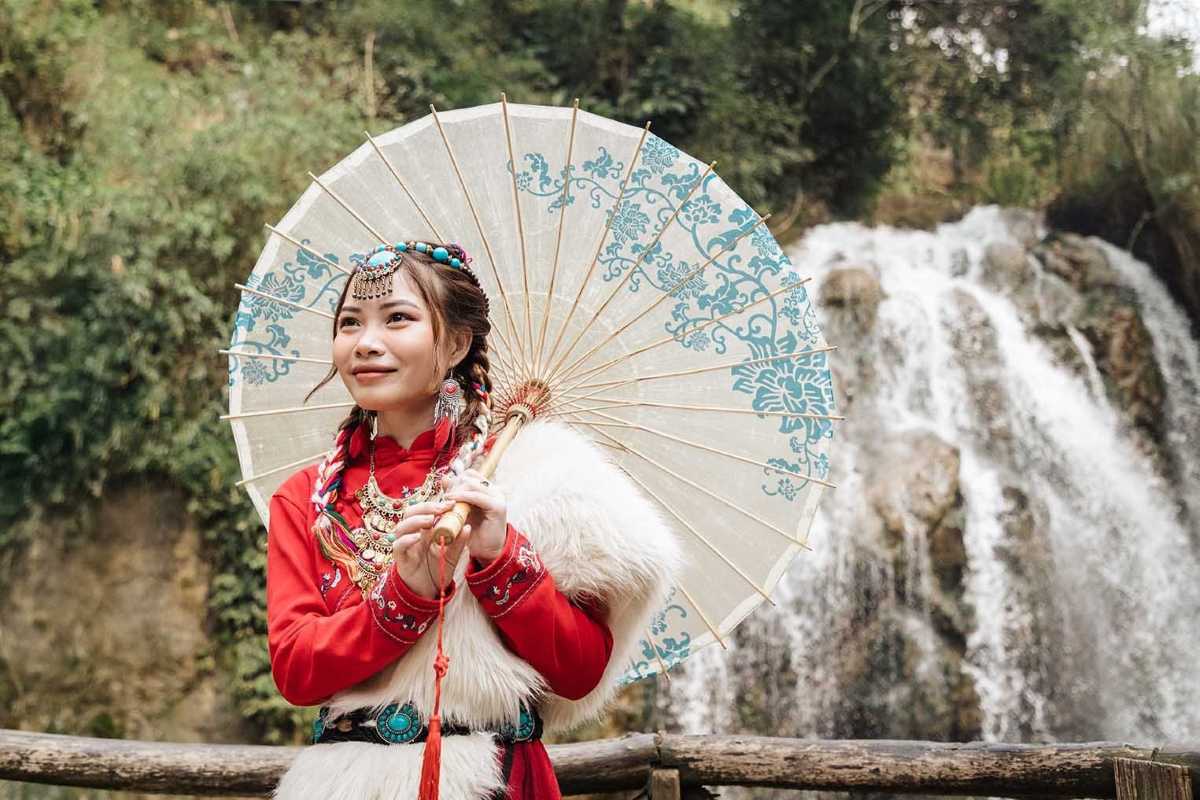
What to Expect at Sapa Love Market: Activities, Sights, and Sounds
Walking into the Sapa Love Market feels like stepping into a living tapestry of Vietnam’s highland culture, where every sense is awakened by music, movement, color, and flavor. If you’re wondering what to expect at the Sapa Love Market, you’re in for an experience that is both deeply rooted in tradition and full of lively, contemporary surprises. Here, the market is not just a place to buy or sell—it’s a vibrant gathering where locals and visitors come together to celebrate, perform, and share the essence of Sapa.
You’ll discover a whirl of sights and sounds: dancers swirling in bright costumes, folk musicians tuning ancient instruments, the hum of bargaining, and the tempting scent of street food drifting between stalls. For every traveler, the real magic of the market lies in its energy and the many ways you can take part—whether by clapping along to a cultural show, trying your hand at a craft, or savoring a dish you’ve never tasted before.
Curious what you shouldn’t miss? The Sapa Love Market rewards an open mind, a sense of adventure, and a willingness to let local rhythms guide your visit. If you want help planning your must-see experiences, Asia Travel Links can offer up-to-date show schedules and insider tips to make your market night unforgettable.
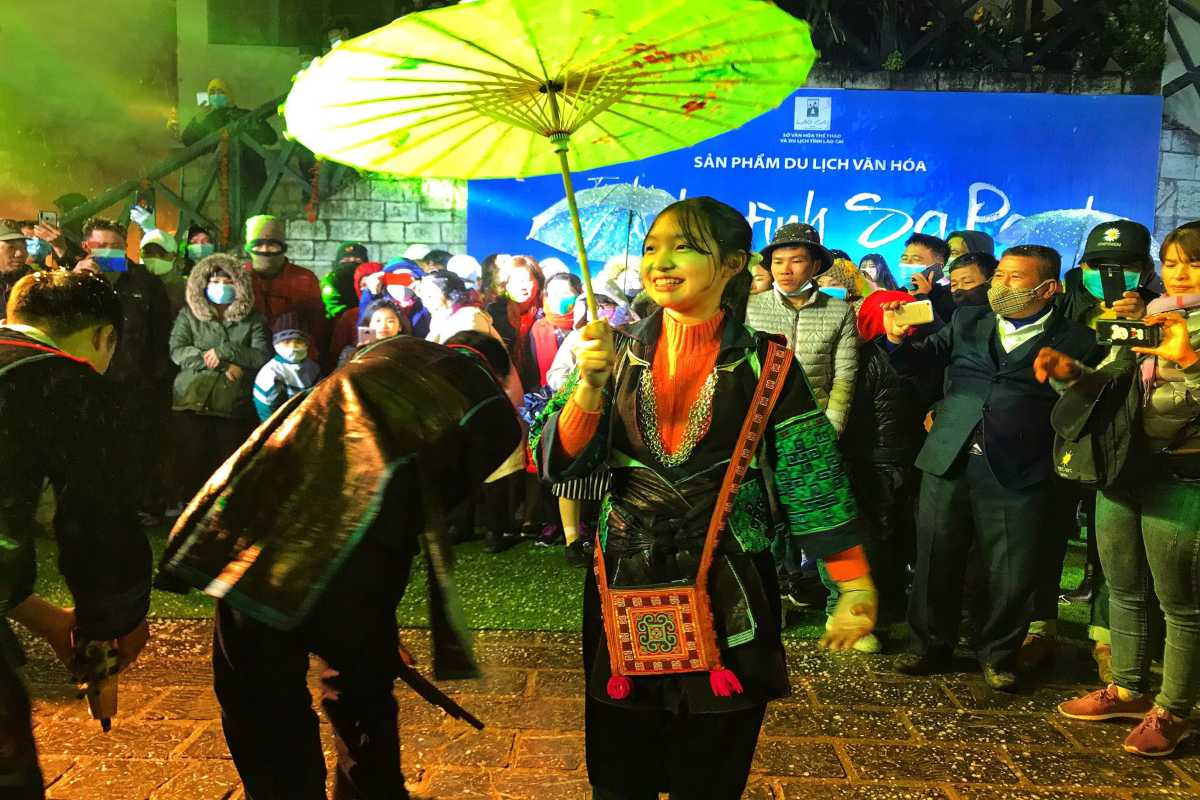
Live Performances, Music, and Dances
The heart of the Sapa Love Market beats loudest through its live performances. Music, dance, and dramatic folk acts fill the market square on weekends and festival nights, drawing crowds of locals and travelers alike. Expect to be swept up by the sounds of Sapa cultural performances—from the hypnotic beat of bamboo instruments to soulful songs that echo the region’s history and spirit.
Traditional folk dances bring stories of love, longing, and celebration to life. You’ll see groups of Hmong and Dao dancers moving in intricate patterns, each step a piece of living tradition. Performances may be formal—scheduled on a main stage—or spontaneous, as young villagers gather and play beneath the glow of lanterns.
If you love immersive experiences, find a seat (or stand close by) and let the sights and sounds transport you. Many shows encourage audience participation, so don’t be shy—join the handclaps or follow the rhythm. These evenings at the Sapa Love Market remind every visitor of the community’s pride in its heritage.
For a full schedule of shows or to reserve the best spots, Asia Travel Links can connect you with up-to-date performance guides.
Traditional Instruments and Folk Songs
The musical heritage of the Sapa Love Market is brought to life with unique, hand-crafted instruments and age-old songs:
- Khene: A bamboo mouth organ popular among the Hmong people, with a haunting, reedy tone that carries across the market square.
- Dan Moi: A delicate jaw harp played by the Hmong and Dao, producing gentle, shimmering sounds—often as part of courtship rituals.
- Sapa Folk Music: Storytelling through melody, where lyrics speak of highland life, nature, and love.
- Ensemble Performances: Groups gather to blend rhythms and voices, creating an atmosphere that is both festive and nostalgic.
- Instrument Demos: At times, musicians invite visitors to try a few notes themselves—don’t miss the chance to join in!
Exploring the market’s music reveals both the diversity and the deep emotion that ties the Sapa Love Market to its past.
Listening to a live performance here is a highlight of any visit. Want to learn more or join a musical workshop? Asia Travel Links can point you to the most engaging cultural activities at the market.
Must-See Cultural Shows and Events
There’s always something special happening at the Sapa Love Market. Here are the can’t-miss highlights for your visit:
- Sapa Cultural Shows: Every Saturday night, the central square hosts scheduled performances by Hmong, Dao, and other ethnic minority groups. Dance, music, and drama are all on display.
- Festival Events Sapa: During major festivals (like Tet and local New Year), expect expanded shows, parades, and extra celebrations. Arrive early—these nights draw big crowds.
- Spontaneous Performances: Apart from official shows, you’ll often find informal song circles or dance troupes gathering near the market’s food stalls.
- Audience Participation: Visitors are encouraged to join in during some performances, whether it’s learning a few dance steps or singing along to a chorus.
- Scheduled Performances Sapa: Check ahead for times—Asia Travel Links can help you plan your trip around these cultural highlights.
Catching these cultural shows gives you a front-row seat to the traditions and artistic flair that make the Sapa Love Market one of Vietnam’s most exciting and unforgettable destinations.
Emily's Melodic Moment: The Haunting Beauty of Hmong Flutes
The Sapa Love Market is a feast for the eyes – the vibrant textiles, the bustling crowds, the misty mountain backdrop. But for me, it was a particular sound that truly etched itself into my memory, an experience that cut through the visual splendor and resonated deep within my soul. I'd read about the traditional courtship music, but nothing prepared me for the raw, captivating sound of Hmong flute music Sapa. It was more than just a performance; it was an emotional moment Sapa market delivered directly to my core, a true testament to the power of sound in cultural immersion.
The main square buzzed with activity, a cacophony of greetings and commerce. I was enjoying the vibrant energy, but part of me yearned for the more intimate, traditional aspects I’d read about. Then, as I turned a corner near the ancient Sapa Stone Church, a sound drifted towards me, seemingly from nowhere. It was a single, pure note, long and sustained, followed by a series of cascading melodies. It was the sound of a khene, the traditional Hmong bamboo flute, and it was utterly haunting.
I followed the sound, drawn in by its melancholic beauty. Tucked away on a stone bench, partially obscured by a group of onlookers, was an elderly Hmong man. He wasn't playing for applause or money; his eyes were closed, his face etched with a peaceful solemnity as his fingers danced over the holes of the flute. The notes he produced were both sorrowful and hopeful, echoing off the ancient stone, weaving through the chatter of the market like a silver thread. It was instantly clear this was not simply Sapa folk music for entertainment. This was a language, a storytelling in itself. I stood there, mesmerized, losing all sense of time. The melodies spoke of lonely mountain paths, of unspoken longings, of the beauty and harshness of life in these hills. It connected me directly to the history of the Love Market, where such tunes were once the very fabric of courtship, a subtle declaration of affection carried on the mountain breeze.
The air around him felt different, almost sacred. Other sounds of the market faded into the background as I became entirely absorbed in the flute's voice. It was a profound connection, an unexpected wellspring of emotion that confirmed the market's deeper purpose. This wasn't just about what I could see; it was about what I could feel and hear. This single, spontaneous, and utterly captivating performance of the Hmong flute Sapa truly enriched my visit, demonstrating how deeply embedded music is in the very atmosphere and tradition of this place.
This powerful melodic moment taught me to seek out the quieter, more subtle forms of cultural expression. It's in these moments that the true soundscape of a place reveals itself.
Here’s how you can find and appreciate your own melodic moments at the Sapa Love Market:
- Listen Actively: Don't just look; listen. The traditional instruments (khene flute, đàn môi jaw harp) are often played in less prominent areas, away from the main performance stages.
- Wander Off the Main Path: Much like finding the best food stalls, the most authentic music is often found on the market's fringes or in quieter corners.
- Identify the Instruments: Knowing what a khene or đàn môi looks and sounds like will help you recognize them when you hear them. The khene is a large, multi-piped bamboo instrument, while the đàn môi is a tiny, delicate jaw harp.
- Observe the Musicians: Pay attention to their expressions and their interactions (or lack thereof) with the crowd. Are they playing for themselves, for a small group, or as part of a larger performance? This can tell you a lot about the authenticity of the moment.
- Respect the Moment: If you find a musician playing, listen quietly and respectfully. If you wish to take a photo, always ask permission first, preferably with a warm smile and a "Chào!"
Emily's melodic moment, listening to the Hmong flute music Sapa, was a highlight of my Sapa Love Market experience. It was a reminder that true cultural immersion often comes from unexpected sensory encounters that stir the soul and deepen your understanding of a place's living history.
Recommendation: While the Sapa Love Market is a visual spectacle, make sure to actively seek out and allow yourself to be captivated by its auditory charms, particularly the haunting beauty of Hmong flutes. It's an emotional moments Sapa market provides that will linger long after you've left.
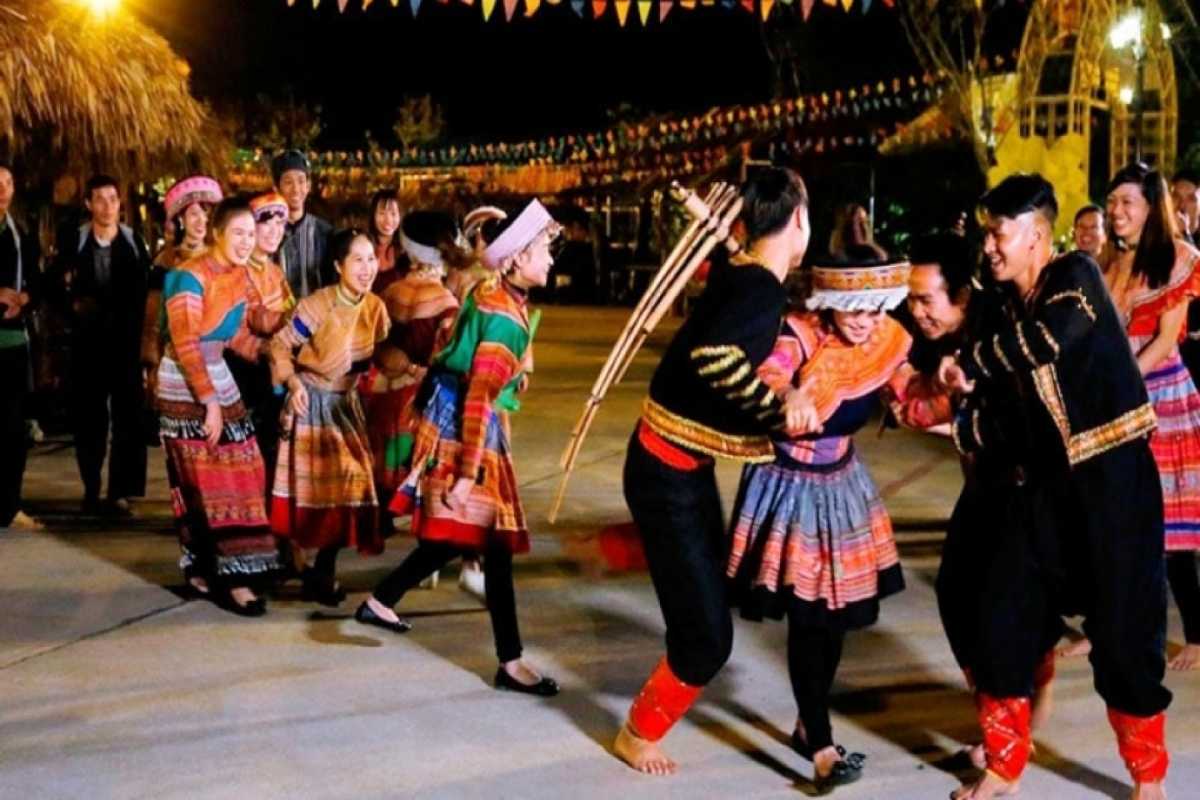
Artisan Handicrafts, Souvenirs, and Local Flavors at the Sapa Love Market
No visit to the Sapa Love Market is complete without exploring the bustling lanes of artisan handicrafts, souvenirs, and tempting local street food. Shopping here isn’t just about taking something home—it’s about connecting with the living heritage of Sapa, Vietnam, supporting skilled artisans, and tasting flavors you’ll remember long after your journey.
The market’s stalls are a vibrant showcase of traditional crafts, from bold indigo-dyed Sapa textiles to intricate silver jewelry and colorful embroidered bags. Each piece tells a story: of family tradition, patient hands, and the mountain life that shapes every design. If you’re hunting for an authentic keepsake or gift, knowing what to look for—and where to find it—can make all the difference.
And when hunger calls, the aromas drifting from the food stalls are impossible to resist. Whether it’s grilled meats sizzling on open flames, sticky rice cooked in bamboo, or a sip of local corn wine, the flavors here are as much a part of the experience as the music and colors.
Want guidance on the best spots for genuine finds or safe, delicious food? The team at Asia Travel Links is always ready to share up-to-date recommendations and insider tips for market shopping and snacking.
Unique Gifts and Where to Find Authentic Treasures
If you want to bring home a piece of the Sapa Love Market that is truly special, focus on artisan-made crafts and ethical shopping:
- Sapa Textiles: Look for bold indigo fabrics, handwoven by Hmong women. Each pattern has meaning and is unique to the maker’s family or clan.
- Silver Jewelry Sapa: Seek out heavy, hand-stamped silver bracelets, necklaces, or earrings from the Dao stalls. Genuine silver will feel weighty and often shows tiny maker’s marks.
- Embroidered Bags Sapa: Vibrant shoulder bags and pouches, stitched by hand, are both practical and beautiful—a favorite among travelers for their unique designs.
- Bamboo Crafts: From baskets to flutes, bamboo items are sustainable, lightweight, and make memorable souvenirs.
- Ethical Shopping Tips: Buy directly from artisans whenever possible and ask about the origins of each piece. Avoid stalls with identical, mass-produced goods.
By choosing handmade, authentic items, you help preserve local craftsmanship and bring home a story as well as a souvenir.
Need help spotting genuine goods or finding a particular item? Asia Travel Links offers custom shopping walks and expert advice to enhance your Sapa Love Market experience.
Sapa’s Food Stalls and Local Culinary Delights
Sampling the street food at the Sapa Love Market is a highlight for every traveler. Here’s what to try for a true taste of the region:
- Grilled Skewers Sapa: Pork, beef, or chicken marinated with mountain herbs, skewered and grilled over hot coals—smoky, juicy, and filling.
- Bamboo-Tube Rice Sapa: Sticky rice cooked inside fresh bamboo, sometimes with beans or coconut. Soft, fragrant, and perfect as a snack on the go.
- Corn Wine Sapa: A local specialty—potent, sweet-sour rice wine that warms you on a chilly mountain night. Sip slowly!
- Savory Pancakes: Crispy rice pancakes stuffed with wild greens or minced pork, best eaten hot from the griddle.
- Seasonal Fruit and Sweets: Try fresh plums or mountain peaches in summer, or candied ginger and pumpkin in colder months.
For the safest eating experience, look for busy stalls with high turnover, where you can see food cooked fresh. Carry hand sanitizer and bottled water, and don’t hesitate to ask about ingredients if you have allergies or dietary restrictions.
Trying new foods here is all about discovery—so bring your curiosity and your appetite. For curated food tours or a list of the cleanest, tastiest market stalls, reach out to Asia Travel Links for trusted recommendations.
Oliver's Souvenir Hunt: Finding Meaningful Keepsakes
For me, a souvenir isn't just an object; it's a tangible memory, a story captured in physical form. So, when I arrived at the Sapa Love Market, my goal wasn't just buying souvenirs Sapa style – it was about finding something meaningful, something that carried the spirit of the place and the people I encountered. My first few attempts at shopping felt a little transactional, but then I learned the true art of the Sapa bargaining tips and, more importantly, the power of respectful interaction, transforming my "hunt" into a series of memorable connections.
My initial approach was probably too direct, too focused on the price. I’d point, ask, and sometimes awkwardly try to negotiate. It felt cold, and I could sense the distance from the vendors. My real breakthrough came when I remembered the advice I'd read about engaging with artisans. I saw a young Hmong woman, perhaps in her early twenties, meticulously stitching a small, vibrant textile. Her fingers moved with incredible precision, each thread a testament to hours of dedication. Instead of immediately asking "how much?", I simply smiled and offered a "Chào bạn!" (Hello, friend!).
She looked up, startled but then returned a shy smile. I pointed to her work, "Đẹp quá!" (So beautiful!), I exclaimed genuinely. Her eyes lit up. Through a mix of broken English on her part, basic Vietnamese on mine, and lots of gestures, she explained that she had dyed the fabric herself using indigo leaves and that the pattern she was working on depicted the terraced rice fields. This wasn't just a product; it was her artistry, her heritage. I picked up a small, indigo-dyed pouch she had already finished. It wasn't the cheapest item, but knowing the story behind it, seeing her dedication, made it incredibly valuable. When it came to discussing the price, I used some of my newly acquired Sapa bargaining tips – a gentle offer, a bit of back-and-forth, always with a smile. We settled on a price that felt fair to both of us. It wasn't about "winning" a negotiation; it was about reaching a mutual agreement based on respect. This interaction, where a genuine connection was made, transformed a simple purchase into an unforgettable "souvenir negotiation Sapa" experience.
I learned that the most meaningful keepsakes come from these genuine interactions. It's not just the item itself, but the memory of the person who made it, the conversation you shared, and the glimpse you got into their life. The pouch I bought from her isn't just a textile; it's a constant reminder of her smile, her craftsmanship, and the beauty of human connection in Sapa. It embodies the true meaning of a memory and interaction.
Here are my tried-and-true Oliver's Souvenir Hunt tips for finding meaningful keepsakes and engaging respectfully at the Sapa Love Market:
- Look for Authenticity, Not Just Price: Seek out vendors who are actively working on their crafts (weaving, embroidering, carving). These are often the true artisans.
- Start with a Greeting and a Compliment: A simple "Chào anh/chị/bà/ông" (Hello, sir/madam/grandmother/grandfather) and "Đẹp quá!" (So beautiful!) can open doors to a more meaningful exchange than an immediate price inquiry.
- Engage in Conversation (Even Limited): Ask about their craft, where they're from, or the meaning behind their designs. Even with a language barrier, gestures and a translator app can help. This builds respect and connection.
- Bargain Respectfully:
- Offer About 50-70% of the Stated Price: Vendors usually start high. Your first offer should be lower, but not insulting.
- Smile and Be Friendly: Keep the tone light and pleasant. Bargaining is a cultural norm, not a battle.
- Be Prepared to Walk Away (Temporarily): If you can't agree, politely say "Cảm ơn" (thank you) and walk away. Sometimes they'll call you back with a better offer.
- Know When to Stop: Don't nickel and dime over small amounts. Once you're close to a fair price, be happy to pay it. Remember, this is their livelihood.
- Prioritize the Story: The best souvenir is one with an artisan stories Sapa connection. It's the memory of the interaction that makes the object priceless.
- Cash is King: Most small vendors only accept Vietnamese Dong (VND). Have small denominations ready.
- Don't Rush: Take your time Browse. The deeper you look, the more unique items you'll find, and the more opportunities for genuine connection will arise.
My Oliver's Souvenir Hunt at the Sapa Love Market was far more than just shopping; it was a series of small, significant cultural exchanges that enriched my journey. It taught me that the true value of a souvenir lies not in its cost, but in the human connection and the story it carries.
Recommendation: Go beyond just buying souvenirs Sapa offers. Embrace the art of respectful interaction and Sapa bargaining tips to find meaningful keepsakes. You'll not only take home unique treasures, but also invaluable artisan stories Sapa that will deepen your memories of the Sapa Love Market.
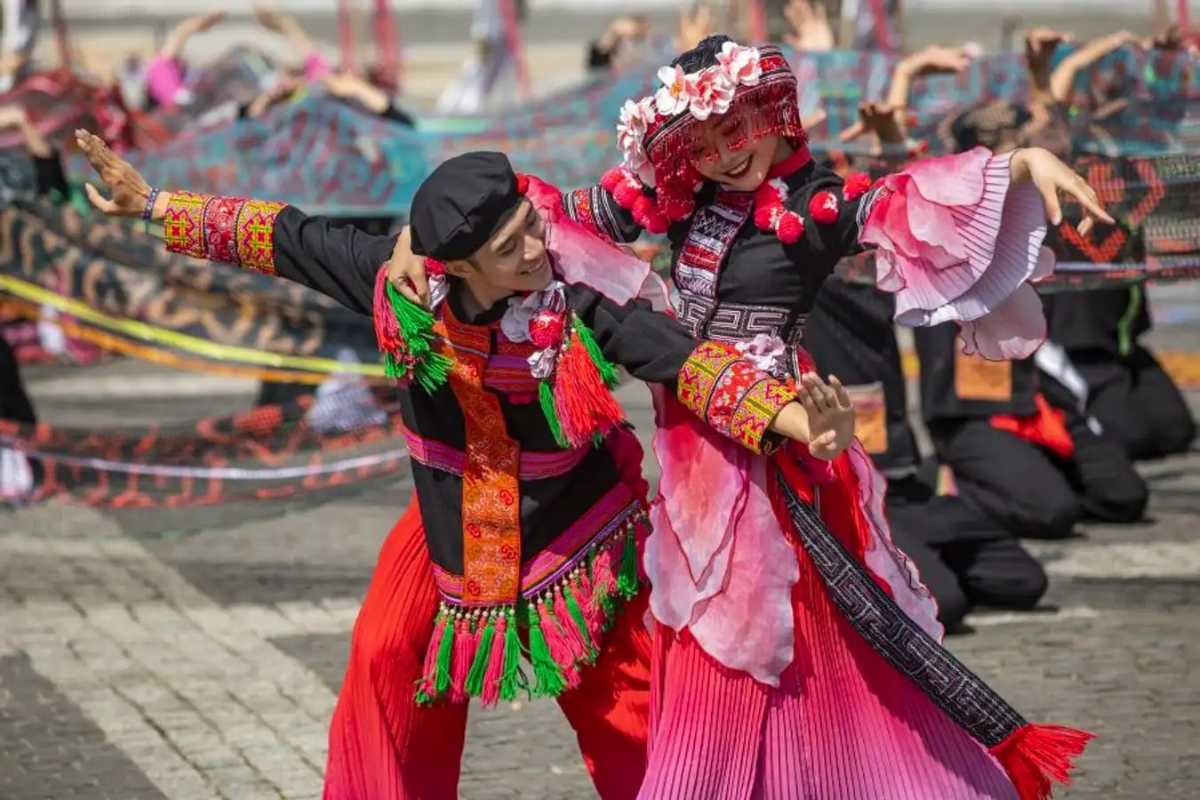
Meeting the Locals: Conversations and Photo Etiquette at the Sapa Love Market
One of the most rewarding aspects of visiting the Sapa Love Market is connecting with the people whose traditions, stories, and smiles bring the market to life. Whether you’re asking about a handmade craft, watching a traditional dance, or simply wandering the bustling lanes, every moment is a chance for meaningful cultural exchange. But to ensure these interactions are positive and respectful for both visitors and locals, a few key etiquette practices are essential—especially when it comes to photos and personal space.
When you approach a vendor or performer, start with a warm greeting and a smile. Simple Vietnamese phrases, a friendly wave, or showing interest in a craft can break the ice. Remember, the locals here—many of whom are from the Hmong or Dao communities—are proud of their culture but may also value privacy and traditions that differ from your own. Always listen, observe, and respect social cues.
Photographs are a treasured part of any travel experience, but it’s vital to seek permission before snapping photos of people or sensitive cultural moments. By engaging thoughtfully, you not only avoid faux pas but also open the door to authentic, memorable connections that go beyond the surface.
If you’re unsure how to start a conversation or want guidance on the best etiquette for market interactions, Asia Travel Links can provide helpful tips and even arrange language support for your visit.
How to Engage Respectfully with Ethnic Communities
For a rewarding and respectful experience at the Sapa Love Market, follow these essential steps when engaging with local people:
- Learn a Greeting: A simple “Xin chào” (hello) or “Cảm ơn” (thank you) in Vietnamese, or even a word in a local dialect, goes a long way.
- Observe Before Acting: Watch how locals interact with each other before joining in or taking photos.
- Ask Permission for Photos Sapa: Always seek verbal or non-verbal consent before photographing anyone—especially elders or children.
- Respect Personal Space: Give vendors, performers, and families room, especially during ceremonies or rituals.
- Show Interest and Gratitude: Ask questions about crafts or performances, listen carefully, and thank people for their time and stories.
Taking these small steps not only avoids misunderstandings but also often leads to warmer, more authentic encounters that can become highlights of your market experience.
If you’re looking for deeper cultural understanding, Asia Travel Links can arrange guided visits with cultural interpreters or community hosts.
Dos and Don’ts for Visitors
To help you navigate the Sapa Love Market with confidence and respect, keep this practical checklist of visitor etiquette in mind:
- Do greet vendors and locals with a smile: Politeness opens doors to positive exchanges.
- Do ask before taking photos: Always check if it’s okay, especially during private or sacred moments.
- Do buy directly from artisans: This supports the local economy and builds real connections.
- Don’t touch crafts or costumes without permission: Many items have special meaning or are delicate.
- Don’t interrupt rituals or performances: Watch respectfully from a distance unless invited to join.
Following these basic rules of visitor etiquette Sapa helps you show respect, avoid uncomfortable situations, and ensures everyone enjoys the market to its fullest.
When in doubt, ask for advice or clarification—locals appreciate the effort, and Asia Travel Links is always available to offer guidance or arrange cultural briefings for your trip.
Grace's Cultural Exchange: Building Bridges with Simple Gestures
Before arriving at the Sapa Love Market, I'd read plenty about the vibrant culture and the importance of respect when interacting with the ethnic minority communities. But reading about it and actually doing it are two different things. My goal was simple: to truly connect, to experience a genuine Sapa cultural exchange that went beyond just observation. What I discovered was how remarkably easy it can be to facilitate local interaction Sapa style, often with nothing more than a genuine smile and a few simple, respectful gestures.
The market on Saturday evening was a symphony of sights and sounds, but I found myself drawn to a quieter corner where several Red Dao women were selling beautifully intricate silver jewelry. I’d seen similar pieces elsewhere, but something about their calm demeanor invited a different kind of engagement. Usually, I'm quite reserved, but I decided to push past my shyness. I approached one woman, her face framed by the distinctive red headscarf, and instead of immediately pointing to an item, I simply offered a warm smile and a slight bow of my head. "Chào chị," I said softly, using the respectful Vietnamese address for an older woman.
She returned my smile, her eyes twinkling, and gestured to her wares. I picked up a delicate silver bracelet, admiring the craftsmanship. Instead of asking the price, I looked at her, then back at the bracelet, and mimed putting it on my wrist, raising my eyebrows in a silent question. She understood immediately, her smile widening. She took the bracelet and, with surprising tenderness, slipped it onto my wrist, adjusting it gently. It wasn't just a sale; it felt like an offering, a small moment of shared beauty. I tried to express my appreciation, "Đẹp quá! Cảm ơn chị," (So beautiful! Thank you, sister!). She nodded, her smile conveying more than words ever could. It was a moment of true bridge-building, where a simple gesture and a few heartfelt words created a beautiful connection. This wasn't a formal Sapa cultural exchange; it was organic, genuine, and deeply satisfying.
Throughout my time at the market, I continued this approach: initiating with a respectful greeting, allowing silence to be part of the communication, and using gestures to convey admiration or ask questions. I found that this open, appreciative demeanor consistently led to warmer responses, lingering smiles, and often, even small acts of kindness, like a vendor offering me a taste of local fruit without expectation of a purchase. It profoundly enriched my experience, transforming fleeting glances into memorable local interaction Sapa moments, where I felt not just like a visitor, but a welcomed guest.
This journey taught me that true cultural understanding Sapa bound isn't about mastering a language or knowing every custom. It's about opening yourself up, showing genuine interest, and using the universal language of human connection.
Here are my tips for Grace's Cultural Exchange: Building Bridges with Simple Gestures:
- Lead with a Smile and a Greeting: A genuine smile is universally understood. Learn "Chào bạn/anh/chị/bà/ông" (hello, friend/young man/young woman/grandmother/grandfather) and use the appropriate form.
- Observe and Mirror: Watch how locals interact. Do they nod? Offer a slight bow? Try to gently mirror their respectful gestures.
- The Power of Pointing (Respectfully): If there’s a language barrier, pointing to an item you admire and giving a thumbs up or saying "Đẹp quá!" (So beautiful!) can convey your appreciation.
- Ask for Permission (Especially for Photos): Always ask before taking photos of people, especially children. A simple gesture of holding up your camera and raising your eyebrows, combined with a "cho phép?" (may I?) or "ok?" often works. Be prepared for them to say no, and respect it.
- "Cảm ơn" is Your Best Friend: "Thank you" (Cảm ơn - pronounced "gahm-un") is crucial. Use it often and genuinely.
- Engage with Hands, Not Just Words: Mime drinking if you want water, or eating if you're asking about food. Simple, clear gestures can convey a lot.
- Be Patient and Present: Don't rush interactions. Take your time, make eye contact (respectfully), and allow moments to unfold naturally. True communication often happens beyond spoken words.
- Accept Small Gestures of Hospitality: If offered tea, a piece of fruit, or a seat, accept it with a grateful smile. It’s a sign of their appreciation.
My Sapa cultural exchange through simple gestures was a profound lesson in the universality of human connection. It transformed my Sapa Love Market visit from a tour into an deeply personal journey of learning and mutual respect.
Recommendation: Don't let language barriers deter you from connecting with locals Sapa style. My experience shows that with an open heart, a respectful attitude, and a few gesture etiquette Sapa tips, you can build meaningful cultural bridges and unlock the true warmth and spirit of the Sapa Love Market.
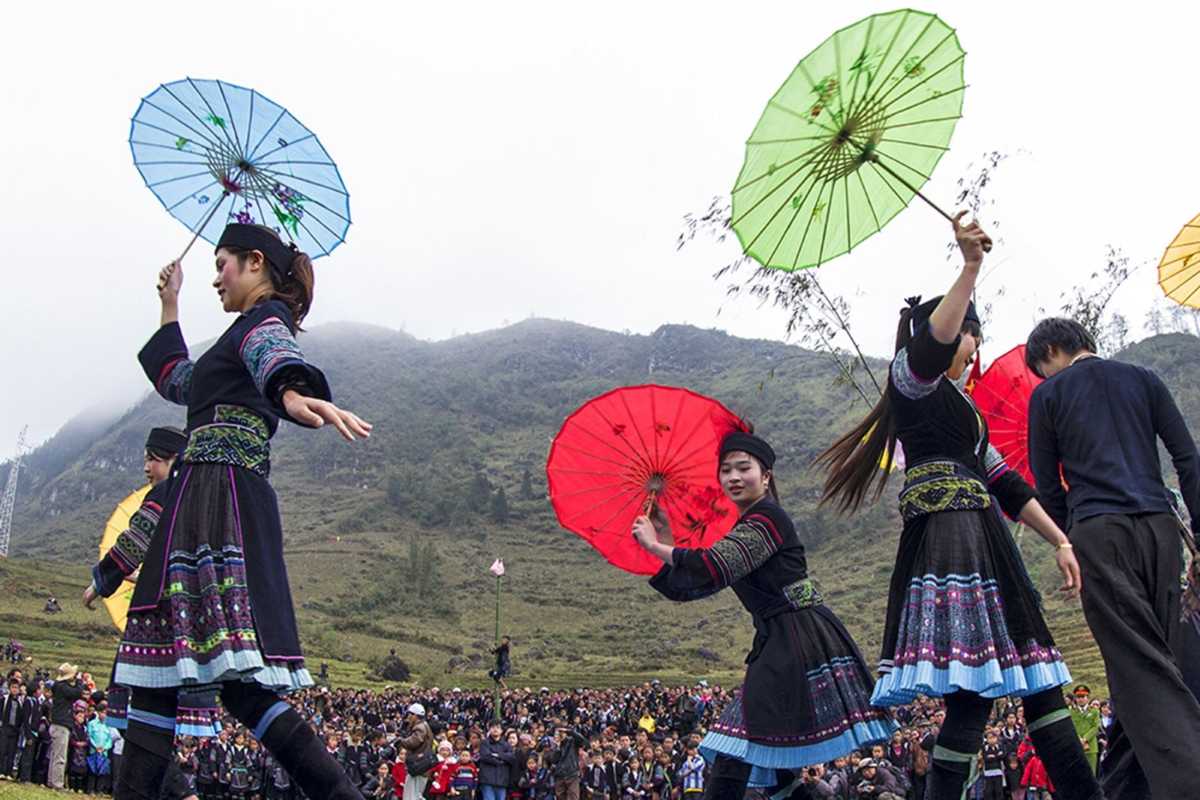
Family-Friendly and Accessible Experiences at the Sapa Love Market
The Sapa Love Market welcomes families, multi-generational groups, and travelers with special needs, offering everyone a chance to discover the culture and color of Sapa together. With some thoughtful planning and a few practical tips, you can make your visit comfortable and memorable for all ages and abilities.
Families will find the market’s lively, open spaces inviting for curious kids, while seniors can appreciate the market’s traditions and atmosphere at a gentle pace. Consider the physical setting—Sapa is a mountain town, so paths can be uneven or steep in places. But with good preparation and a flexible mindset, there are plenty of ways to enjoy the experience as a group.
For those seeking detailed help with inclusive travel, Asia Travel Links can offer personalized guidance on accessible routes, family-friendly attractions, and even arrange support services on request.
Tips for Traveling with Kids or Elderly Family Members
Traveling to the Sapa Love Market with kids or older family members is rewarding but can require a bit of extra planning. Here’s how to keep everyone happy and comfortable:
- Bring Snacks for Kids Sapa: Pack favorite snacks and drinks to keep children energized and occupied during your market visit.
- Plan Rest Stops Sapa: Identify quiet corners or nearby cafes for regular breaks—essential for young kids and elderly travelers alike.
- Use a Stroller or Carrier if Needed: Lightweight, foldable strollers work best on Sapa’s uneven surfaces, but a baby carrier may be even more practical for infants.
- Set a Flexible Pace: Let everyone explore at their own speed, allowing time for curiosity and fatigue.
- Keep Kids Engaged: Encourage children to interact with local crafts, music, or simple market games. Many vendors are welcoming and happy to share stories.
These strategies help families and older travelers make the most of their day, avoiding stress and maximizing enjoyment at the Sapa Love Market.
Want extra peace of mind? Asia Travel Links can suggest custom itineraries or help you find the best family- and senior-friendly facilities in Sapa.
Accessibility Considerations in the Market Area
To ensure every visitor enjoys the Sapa Love Market, it’s important to anticipate some real accessibility challenges—and practical solutions:
- Wheelchair Access Sapa: Main pathways are generally wide but can be uneven and steep; assistance may be needed in crowded or sloped sections.
- Stairs and Terrain Challenges Sapa: Expect occasional steps and rough patches. Plan your route to minimize difficult areas, or ask for local help.
- Crowd Navigation: The market gets busy at peak times. Arrive early or late to avoid the densest crowds and move more easily.
- Rest Areas and Support: Seek out shaded benches, nearby cafes, or support staff for regular breaks.
- Preparation is Key: Comfortable, sturdy shoes and layered clothing help with Sapa’s changing weather and terrain.
By preparing ahead, travelers with mobility concerns can still enjoy the sights and spirit of the market—often with just a little extra planning.
Need more specific accessibility advice or want to arrange local assistance? Asia Travel Links is committed to helping all travelers experience the very best of Sapa with confidence.
Ben's Family Day Out: Making the Market Accessible for All Ages
Traveling with family can be a wonderful adventure, but it also comes with its unique set of challenges. When we decided to visit the Sapa Love Market, our group included my energetic 7-year-old nephew, Leo, and my spry but less mobile grandmother, Mei. My biggest worry was how to make the bustling market an accessible Sapa market experience for both ends of the age spectrum. I wanted it to be a joyous family experience Sapa style, not a stressful marathon. What I learned was that with a little pre-planning and a lot of adaptability, it’s entirely possible to create truly memorable multigenerational travel Sapa moments.
Our first foray into the market was a whirlwind. Leo, captivated by everything, wanted to run ahead, while Mei needed a slower pace and frequent breaks. The uneven cobblestones and surging crowds initially felt like a daunting obstacle course. My first mistake was trying to see everything at once. Leo quickly got overwhelmed, and Mei started to tire. That’s when I realized we needed a strategy. I found a relatively quiet spot near the stone church where Mei could sit on a low wall and observe the general flow of people, while Leo and I made short, focused excursions to nearby stalls.
We broke the market into manageable "missions." First mission: find a traditional Hmong flute for Leo. This gave him a purpose and kept him engaged. When we found a vendor, I encouraged Leo to interact, asking "Bao nhiêu tiền?" (How much?) with my guidance. For Mei, the "mission" was simply to soak in the atmosphere. We made sure she had comfortable shoes and a lightweight folding stool for impromptu rest stops. Navigating the crowds with Mei often meant taking wider detours or waiting patiently for a gap in the flow, but it forced us to slow down and notice details we might have otherwise missed. Finding child-friendly food Sapa offered was another win – grilled skewers and sweet rice cakes were big hits, ensuring happy campers (and grannies!). We discovered a small, covered area selling freshly pressed sugarcane juice that became our designated "refueling station."
The true success came from our willingness to be flexible. If Leo got restless, we found a spot for him to sketch in his notebook. If Mei needed a longer rest, we all paused. We didn't try to conquer the entire market; we aimed for quality over quantity. This adaptability ensured that everyone felt included and enjoyed the experience in their own way. We even managed to find a relatively smooth path for Mei's cane near some of the main performance areas, allowing her to comfortably watch a traditional dance. It became less about rigid market navigation Sapa and more about intuitive movement and group fun.
Here are my key lessons learned for Ben's Family Day Out: Making the Market Accessible for All Ages:
- Pace is Paramount: Don't try to rush. Allow ample time for Browse, resting, and spontaneous stops. Build in buffer time for unexpected delays.
- Divide and Conquer (Strategically): If your group has varied energy levels, consider splitting up for short periods. One adult can take the kids on a "mission" while another helps the elderly find a comfortable spot to observe.
- Prioritize Comfort:
- Footwear: Comfortable, sturdy, closed-toe shoes are essential for everyone due to uneven surfaces and potential mud.
- Rest Spots: Identify potential seating areas (benches, low walls, quiet cafes) on your map or as you go. Consider a lightweight, portable stool for elderly members.
- Snacks & Water: Carry plenty, especially for kids. Familiar snacks can be comforting.
- Engage the Children: Give kids a "job" – like finding a specific color, counting particular items, or taking photos (with permission). This keeps them interested and less likely to wander. Look for child-friendly food Sapa offers, like grilled snacks or fruit.
- Embrace Breaks: Don't push it. Short, frequent breaks for drinks or people-watching can prevent meltdowns (from kids and adults!).
- Consider a Carrier for Younger Kids: Strollers can be difficult to maneuver on Sapa's uneven paths. A baby carrier or backpack carrier is often more practical for toddlers.
- Manage Accessibility Expectations: Sapa is mountainous and many areas have uneven terrain. While some parts of the market are relatively flat, prepare for steps and slopes. Adjust your route or focus on the more accessible Sapa market areas.
- Be Flexible and Adaptable: The most important tip! Things might not go exactly as planned. Be ready to change course, find alternative routes, and prioritize the group's comfort and enjoyment over seeing every single stall.
My family experience Sapa with Leo and Mei at the Love Market was ultimately a resounding success. It showed me that with thoughtful planning and a spirit of adaptability, the magic of Sapa is truly for everyone, making it an ideal destination for multigenerational travel Sapa.
Recommendation: Don't shy away from bringing the whole family to the Sapa Love Market! By implementing these practical solutions for making the market accessible for all ages, you can ensure everyone, from the youngest to the wisest, has an unforgettable and joyous family experience Sapa offers.
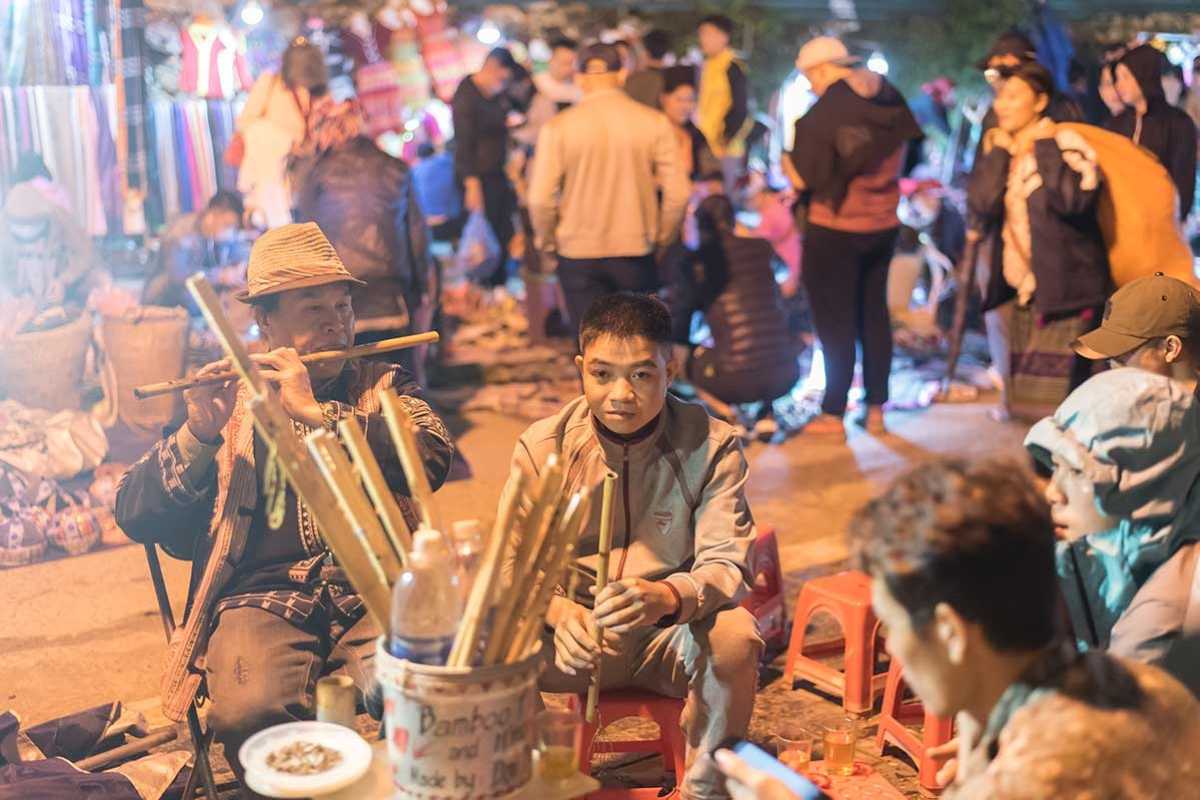
Beyond the Traditional: Modern Interpretations and Artistic Expressions at the Sapa Love Market
The Sapa Love Market isn’t just a showcase of ancient customs—it’s also a living canvas for contemporary art and creativity. Here, tradition blends with innovation, as Sapa’s creative community and visiting artists reinterpret heritage through new media, fashion, and photography. This evolving side of the market inspires both locals and travelers, ensuring the spirit of the market remains vibrant and relevant.
Wander through the market today and you’ll notice the influence of contemporary art Sapa in everything from boldly painted murals to modern takes on traditional embroidery. Young Hmong and Dao artisans experiment with color, pattern, and material, crafting unique pieces that honor their roots while looking toward the future. Local photographers and travelers with a creative eye often find the market’s textures and contrasts a perfect playground for the lens—capturing a dynamic fusion of old and new.
For travelers who want to experience this creative energy, look out for artisan pop-up stalls, photography workshops, and art-focused tours around the market area. These are great ways to meet Sapa’s new wave of artists, learn about their inspirations, and even try your hand at a creative craft.
Curious about capturing your own unique market photos or connecting with local creators? Asia Travel Links can arrange introductions to local artists, recommend art tours, or offer Sapa photography tips to help you document your experience in style.
Chloe's Photographic Journey: Capturing Sapa's Modern Artistic Flair
As a travel photographer, I'm always searching for the soul of a place, that unique blend of tradition and evolving modernity that truly tells a story. The Sapa Love Market is famous for its historical charm, a vibrant tableau of ethnic traditions. But on my recent visit, I aimed to go beyond the postcard shots. I wanted to discover and capture Sapa's modern artistic flair, the subtle ways contemporary expression intertwines with ancient customs. My Sapa photography tips for the market revolve around seeing not just what is, but what is emerging, while always maintaining ethical boundaries. This wasn't just about snapping pictures; it was about seeking out visual narratives that spoke to the market's evolving character.
My first evening at the market, I spent more time observing than shooting. The traditional Hmong and Red Dao clothing, with its intricate embroidery and vibrant colors, was a natural draw. But then I started noticing nuances. A young Hmong woman, in traditional dress, was carefully scrolling through her smartphone, the screen reflecting the flickering light of a nearby lantern. Another stall, while selling handmade silver, also displayed small, beautifully painted contemporary artworks by a local artist. These subtle juxtapositions – ancient craft next to modern tech, traditional art next to new interpretations – were what truly fascinated me. This was the capturing Sapa market in a new light.
I adjusted my approach. Instead of just focusing on the "old," I sought out these moments of fusion. I captured the texture of a traditional hand-woven basket next to a brightly colored plastic toy. I zoomed in on the delicate stitching of a textile, then pulled back to show the backdrop of a modern guesthouse. The challenge lay in doing this respectfully, ensuring my lens wasn't intrusive. I focused on candid moments, catching fleeting expressions, or capturing the play of light on textures. The "modern artistic flair" wasn't always obvious; sometimes it was in a cleverly displayed piece of art, or a young person's unique take on traditional fashion, subtly accessorizing with contemporary items. The misty mountain air, often seen as a hindrance, actually became my best filter, softening light and adding an ethereal quality to the scenes. It taught me that artistic photography Sapa requires patience and an open eye for unexpected beauty, embracing both the historical and the new.
This photographic journey through the Sapa Love Market was incredibly rewarding. It showed me that even in deeply traditional settings, there's always an evolving narrative waiting to be captured, provided you approach it with sensitivity and a keen eye.
Here are Chloe's Photographic Journey: Sapa Photography Tips for capturing Sapa's modern artistic flair responsibly:
- Seek Out Juxtapositions: Look for moments where old meets new – a traditional dress paired with sneakers, a vendor's ancient tools next to a smartphone, traditional crafts displayed in a modern way. These tell a compelling story.
- Embrace the Atmosphere (Especially Mist/Rain): Sapa's often misty or rainy weather creates incredible atmospheric lighting. Don't let it deter you; it can add a unique, artistic quality to your photos. Adjust your camera settings for low light (higher ISO, wider aperture).
- Focus on Details and Textures: Go beyond wide shots. Capture the intricate embroidery, the weathered hands of artisans, the texture of local produce. These details convey authenticity.
- Prioritize Ethical Photography Sapa Style: This is paramount.
- Always Ask Permission: Especially when photographing people, particularly ethnic minorities. A smile, a nod, and a simple gesture of pointing to your camera often suffice. Respect a "no."
- Don't Treat People as Props: Engage with your subjects. A brief interaction, even a shared smile, makes the photo more meaningful for both of you.
- Avoid "Posed" Poverty: Be mindful of stereotypes. Focus on dignity, craftsmanship, and daily life rather than overtly staged scenes that might misrepresent reality.
- Be Subtle and Respectful: Use a longer lens if possible to capture candid moments from a distance without being intrusive.
- Look for Local Artistry Beyond Traditional Crafts: Keep an eye out for contemporary paintings, sculptures, or even unique street art that reflects Sapa's evolving identity.
- Lighting is Key: The best light for capturing vibrant colors is often early morning or late afternoon. The market's evening light, with lanterns and artificial glow, offers unique creative challenges and opportunities.
- Protect Your Gear: Sapa's humidity and occasional rain mean a waterproof camera bag and lens protection are essential for market photos Sapa style.
My Chloe's Photographic Journey at the Sapa Love Market was an insightful exploration into its evolving artistic photography Sapa potential. It taught me that capturing the essence of a place involves more than just documenting what's there; it's about interpreting its living, breathing story through the lens.
Recommendation: For fellow photographers, don't just capture the obvious at the Sapa Love Market. Embrace Sapa photography tips that encourage seeking out the interplay of old and new. By focusing on ethical photography Sapa and a discerning eye, you'll uncover and capture Sapa's modern artistic flair, creating truly unique and insightful market photos Sapa that tell a deeper story.
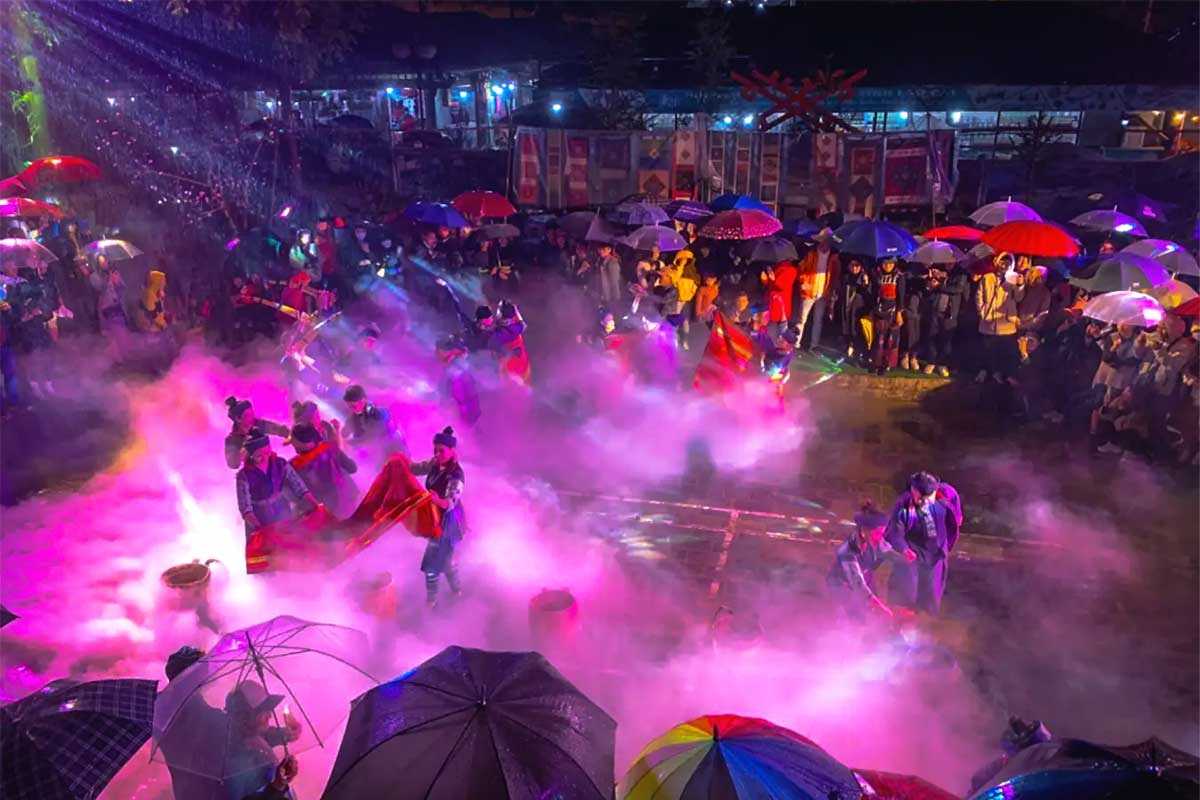
Sapa Love Market and Its Cultural Heartbeat
Few places capture the spirit of Sapa as powerfully as the Sapa Love Market. For generations, this lively gathering has woven itself into the heart of local heritage, creating a unique sense of belonging for ethnic minorities and visitors alike. The market is much more than a trading post—it is a living tapestry of folklore, emotion, and identity, making every encounter a doorway to the true soul of Vietnam’s northern mountains.
By sharing stories, legends, and living traditions, the Sapa Love Market stands as a cultural anchor. It inspires pride, kindles curiosity, and helps visitors see not just a marketplace, but a celebration of community spirit. As you explore, you’ll find that each smile, song, and exchange holds a deeper meaning shaped by centuries of history and longing.
What makes this cultural heartbeat so enduring? It’s the stories, the shared rituals, and the strong sense of identity pulsing beneath the vibrant surface. If you want to truly understand Sapa, you must listen to these voices—echoes of love, tradition, and the universal search for connection.
You’re invited to step into this world with open eyes and an open heart. If you want help making the most of your visit or connecting with local communities, Asia Travel Links is here to offer expert advice and local insight.
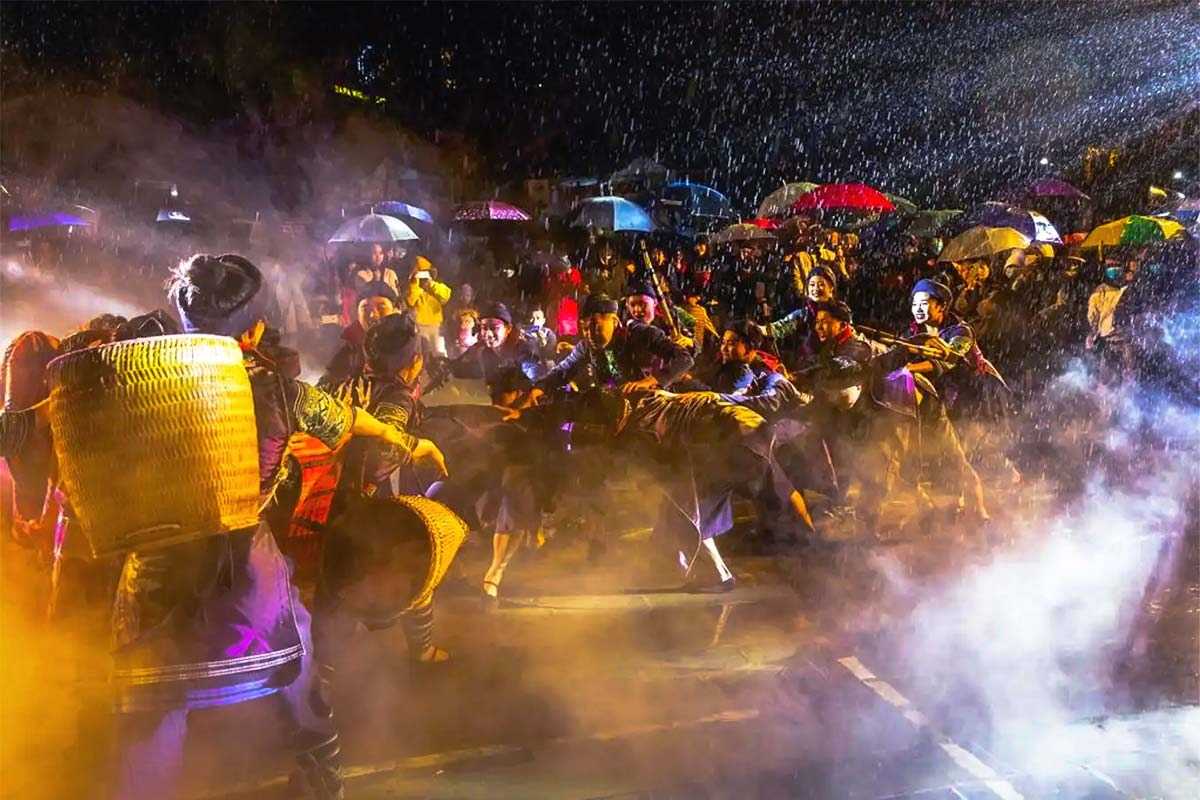
Stories and Legends: The Heartwarming Tales Behind the Market
Every gathering at the Sapa Love Market is steeped in stories—tales passed down through generations that shape the market’s romantic atmosphere. The colorful traditions of Sapa’s ethnic groups find expression in these legends, blending longing, fate, and devotion in ways that stir the imagination.
Visitors often hear the haunting echoes of old songs sung beneath the stars or see couples exchanging shy glances as part of a ritual that dates back centuries. These tales aren’t just for show—they are woven into the very fabric of the market’s identity.
Let yourself be swept up in the magic of Sapa folklore. Ask a local elder, or join a circle of musicians after dark. You’ll quickly discover how these legends add a layer of wonder to every visit and help you appreciate the market as a living museum of memory and myth.
If you’re drawn to these captivating stories and want to dive deeper, don’t hesitate to reach out to Asia Travel Links for insider tours or introductions to local storytellers.
Famous Love Stories and Folklore
No visit to the Sapa Love Market is complete without hearing its most treasured tales:
- The Star-Crossed Lovers: Many believe the market’s origins lie in the story of two lovers from rival ethnic groups, separated by tradition but united every market night to exchange songs and tokens of affection.
- The Melodies of Longing: Some songs sung at the market are said to be ancient love letters, their melodies passed from one generation to the next as both comfort and blessing.
- The Market’s Hidden Meanings: According to local legend, a simple scarf or embroidered bag bought at the market may symbolize a promise, a farewell, or even an unspoken vow.
These Sapa romantic legends serve as the heartbeat of every market gathering, keeping the spirit of devotion and hope alive beneath the festive lights.
You’ll come away not just with souvenirs, but with stories that linger long after you leave. Want to hear these tales first-hand? Consider booking a guided folklore experience through Asia Travel Links.
How the Market Shapes Local Identity
For the people of Sapa, the Sapa Love Market is more than a weekend event—it’s a cultural anchor that binds generations, reinforces shared values, and affirms ethnic identity. For many families, participation is a rite of passage, a way to honor their roots and teach the younger generation about their heritage.
- The Market as Community Glue: Whether selling handicrafts or performing courtship songs, locals see the market as a place to express pride in their traditions.
- Identity Through Ritual: Unique customs, dress, and music mark each group’s presence, creating a sense of unity and friendly rivalry.
- Passing Down the Torch: Through market gatherings, elders pass on wisdom, values, and a strong sense of belonging to younger community members.
When you visit, look for the subtle moments—a shared laugh, a careful teaching of a traditional dance, or the quiet pride in a craftsman’s eyes. These are the moments where the market’s true power as a cultural anchor comes alive.
If you’d like to understand these traditions more deeply, Asia Travel Links can connect you with local guides and culture bearers for an immersive, authentic experience.
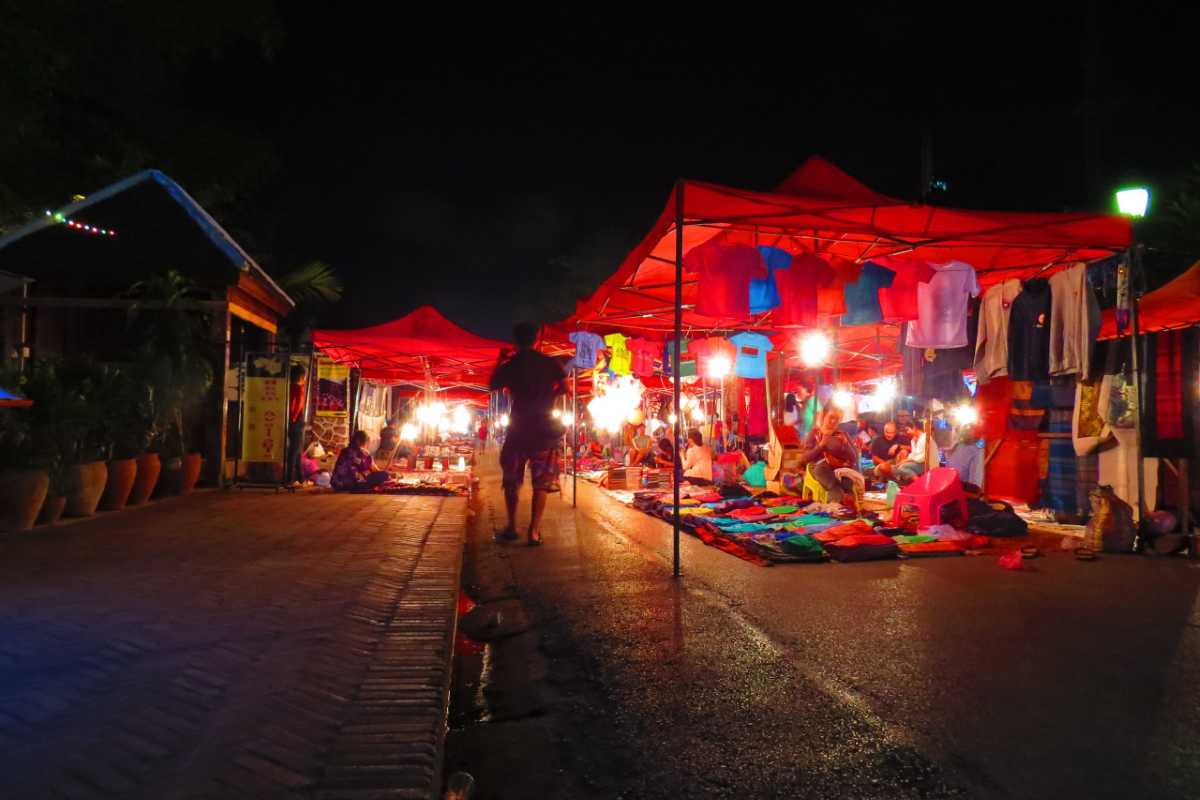
Preserving Heritage: Challenges and Community Efforts
Every tradition, no matter how enduring, faces the test of time—and the Sapa Love Market is no exception. As Sapa welcomes more visitors each year, the delicate balance between sharing culture and protecting its core values grows even more crucial. Local communities are working hard to ensure that cultural preservation is more than a slogan. Their efforts reveal a spirit of resilience, responsibility, and hope for the future.
Tourism brings both opportunity and risk. On one hand, it provides an economic boost and global recognition for Sapa’s vibrant heritage. On the other, it poses real challenges: commercialization, loss of authenticity, and the dilution of rituals meant for intimate community gatherings. To keep the heart of the Sapa Love Market beating strong, it takes a combination of grassroots leadership and active visitor participation.
As you plan your journey, you might wonder—what is actually being done to protect the market’s unique spirit? And more importantly, how can you help? The answers reveal an inspiring community effort and practical ways for every traveler to be part of the solution.
Local Initiatives for Cultural Sustainability
Real cultural preservation in Sapa starts at the community level. Many innovative programs ensure that younger generations don’t just inherit traditions—they actively celebrate and adapt them.
- Youth Workshops: Local leaders organize music, dance, and craft workshops so children and teens can master the rituals of their ethnic group, fostering pride and skill.
- Living History Projects: Collaborative efforts bring elders and youth together to document songs, courtship stories, and weaving techniques, preserving priceless knowledge for tomorrow.
- Festival Revivals: Community-run festivals, sometimes supported by outside partners, revive authentic performances and rituals, ensuring that tourism doesn’t overshadow tradition.
- Ethical Tourism Partnerships: Some local homestays and guides now prioritize “experience-first” tourism—hosting guests for workshops or language exchanges, rather than just passive observation.
These community-led efforts in Sapa are proof that real progress is possible when everyone gets involved. If you’re interested in supporting these projects, Asia Travel Links can connect you directly to programs making a difference.
How Visitors Can Support Authentic Traditions
Every traveler has the power to help sustain the Sapa Love Market and its community traditions. Here’s how you can make a meaningful impact:
- Buy Directly from Artisans: Choose handmade items from market stalls where you can meet the maker, not just mass-produced souvenirs.
- Choose Ethical Tours: Book experiences that are run by locals and designed to teach or engage, not just entertain.
- Participate Respectfully: Attend workshops, ask questions, and learn local customs, but always with sensitivity and a willingness to listen.
- Support Community Events: When possible, attend festivals or performances that reinvest proceeds into local projects.
- Spread the Word: Share your experience and recommendations with others, encouraging mindful and responsible travel.
Supporting Sapa traditions doesn’t require grand gestures—just conscious, thoughtful choices. By traveling ethically, you help ensure that future generations will experience the same vibrant culture you enjoyed.
If you’d like more tips on responsible travel or want to connect with trusted local partners, reach out to Asia Travel Links—we’re always ready to help you explore with purpose.
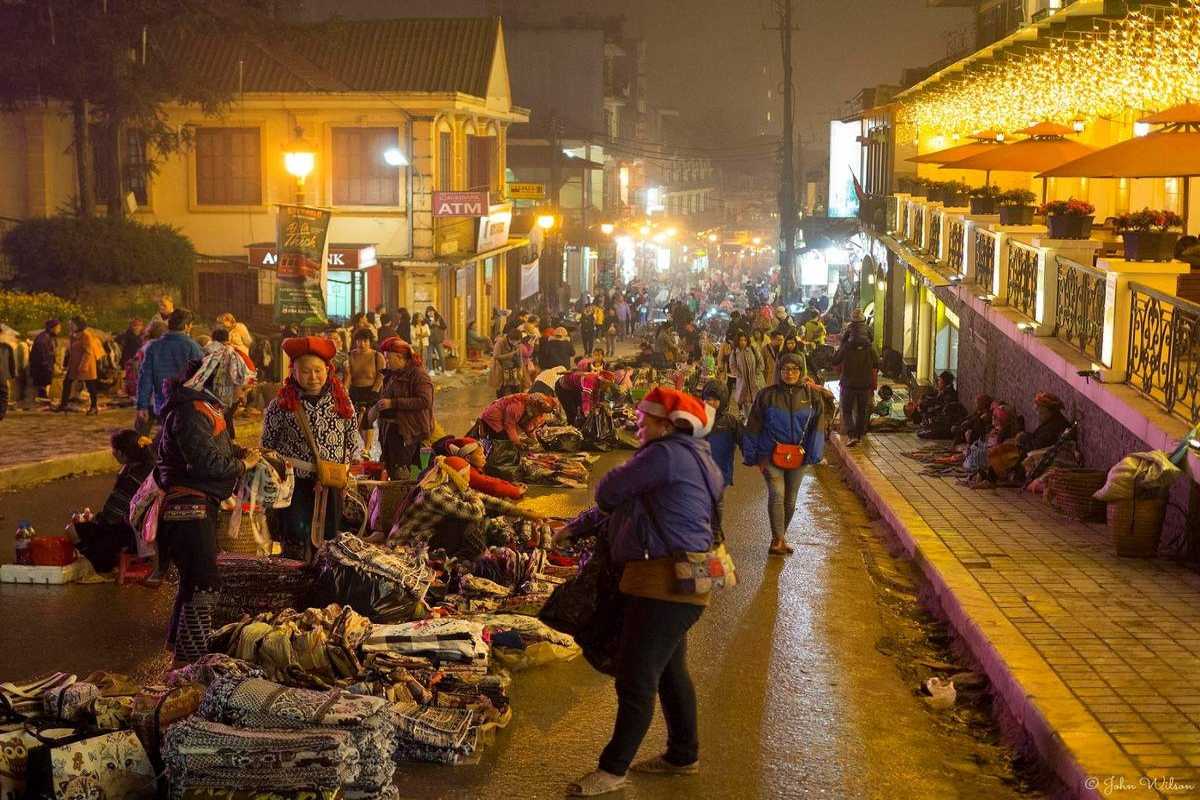
The Impact of Tourism: Balancing Growth and Tradition
As more travelers discover the charm of the Sapa Love Market, the question of how tourism shapes Sapa’s cultural fabric becomes more urgent. The influx of visitors brings both welcome opportunities and undeniable challenges. On one hand, tourism is a vital source of income and visibility for the community. On the other, it can stretch the bonds of tradition, sometimes forcing rapid adaptation or even loss of authenticity. Finding a balance between growth and tradition is now a defining feature of life in Sapa.
For the visitor, understanding this complexity is key to appreciating the market’s true significance—and making choices that respect both progress and preservation. The dialogue between culture and commerce, local voices and global curiosity, is alive in every corner of the Sapa Love Market.
Voices from Local Vendors and Artisans
Step into the heart of the Sapa Love Market and you’ll hear a chorus of perspectives from those whose livelihoods and identities are most affected by tourism. For some vendors, the market is a lifeline: “Selling our textiles here has helped us send our kids to school,” shares a Hmong artisan, her hands busy embroidering new patterns for the next wave of visitors. Others, however, express concern: “Sometimes, it feels like the old songs and stories get drowned out by cameras and bargaining,” says an elder, reflecting on the market’s transformation.
- Economic Impact: Many local vendors have seen their incomes improve, making it possible to support families and preserve artisan skills.
- Cultural Exchange: Daily interactions with travelers spark pride but also present language and expectation barriers.
- Tradition vs. Demand: The need to cater to tourist tastes can encourage creativity, but also risks diluting traditional designs or rituals.
- Adaptation: Younger artisans often blend old and new, creating contemporary crafts while honoring their roots.
- Community Resilience: Despite the pressures, most vendors see tourism as a path to sharing their heritage, provided visitors respect local customs.
Hearing these honest voices reminds every traveler that meaningful experiences come from mutual understanding and sensitivity.
Insights from Cultural Experts and Community Leaders
The ongoing evolution of the Sapa Love Market has become a focus for researchers, government planners, and local advocates. Cultural experts point to both the market’s resilience and its vulnerabilities. “The challenge is to maintain authenticity while meeting visitor expectations,” notes one sociologist who studies tourism analysis in Sapa. Community leaders often act as mediators, guiding development while safeguarding what makes the market unique.
- Tourism as Catalyst: Experts agree that, done right, tourism can fund cultural preservation and community projects.
- Need for Boundaries: Community leaders are introducing visitor guidelines and festival codes to protect sacred rituals and keep performances genuine.
- Empowerment through Storytelling: By educating travelers, locals can reclaim their narrative, ensuring that guests become informed supporters rather than passive spectators.
- The Role of Partnerships: Many advocate for partnerships between local communities and ethical travel companies, like Asia Travel Links, to foster responsible tourism that benefits all.
Ultimately, these expert perspectives offer hope that with collective effort, the Sapa Love Market can continue to thrive as both a cultural treasure and a living, evolving destination.
For those seeking deeper insights or wanting to connect with responsible local guides, Asia Travel Links is always ready to help you experience Sapa in a way that honors both its history and its future.

The Role of Music and Dance in Courtship Rituals
Within the vibrant atmosphere of the Sapa Love Market, music and dance serve as the living language of courtship rituals. For generations, these art forms have played a central role in connecting young men and women from the Hmong and Dao communities, transforming the market into a space where love is both celebrated and sought after. Here, rhythm and emotion are woven into every performance, making the Sapa Love Market not just a place to witness tradition, but to feel its pulse.
The melodies drifting through the night air aren’t just background—they are invitations, sometimes even secret signals, in the dance of romance. Every gesture and song is charged with meaning, fostering connection in ways words cannot.
Jamal's Rhythmic Immersion: Understanding the Beat of Love Market
As a musician, I'm always drawn to the soundscape of a new place, seeking out the rhythms that define its culture. The Sapa Love Market, with its reputation for traditional courtship music, was a particular draw. I expected beautiful melodies, perhaps some quaint performances. What I didn't anticipate was a profound, personal experience that allowed me to truly understand the beat of Love Market Sapa on a deeper, almost spiritual level. My Jamal's music experience Sapa was less about listening and more about feeling the pulse of generations of tradition.
The initial atmosphere of the market on a Saturday evening was a vibrant mix of murmurs, laughter, and the shuffling of feet. I heard snippets of melodies from various directions – a bamboo flute here, the twang of a jaw harp there. It was lovely, but felt somewhat disjointed. I wanted to understand the why behind the music, not just the what. My breakthrough came when I stumbled upon a small, slightly elevated area where a handful of Hmong men and women had gathered. They weren't performing for a large crowd; rather, they were engaged in what felt like an intimate, communal sharing.
One young man played a khene with an almost meditative intensity, his eyes closed. A young woman, just a few feet away, began to answer his melody with a soft, almost imperceptible humming, her hands gracefully moving as if weaving an invisible thread. There was no stage, no spotlight, just raw, unadulterated expression. I stood quietly, trying not to intrude, and let the sounds wash over me. It wasn't until I noticed the subtle, almost imperceptible interactions between them – a slight shift in eye contact, a barely-there smile after a particular phrase – that I truly grasped the essence. This wasn't just music; it was a conversation, a form of courtship that transcended spoken language. The rhythm and tradition Sapa expressed through these instruments carried centuries of longing, connection, and hope. I felt the collective heartbeat of the community, a profound sense of belonging that was communicated entirely through sound. It was deeply moving, a powerful testament to how music serves as a cultural bridge. This was the true music stories Sapa locals carried in their veins.
This experience fundamentally changed how I view travel and cultural immersion. It underscored the importance of not just observing, but truly listening and feeling the emotional resonance of traditions. The music wasn't just sounds; it was the very soul of the Love Market, a vibrant celebration of heritage.
Here’s how you can achieve your own rhythmic immersion and understand the true beat of the Sapa Love Market:
- Seek Out Unofficial Gatherings: While there might be formal performances, the most authentic music often happens in smaller, less conspicuous groups. Wander to the fringes of the main market area.
- Listen to the "Dialogue": Pay attention to how different instruments or voices interact. Is one answering another? Is there a call-and-response? This is often where the deeper meaning lies.
- Understand the Instruments: Familiarize yourself with the sounds and appearance of the khene (bamboo flute) and đàn môi (jaw harp). Knowing what to listen for enhances the experience.
- Observe the Performers' Intent: Are they looking at the audience, or are their eyes closed, lost in the music? The latter often indicates a more personal, traditional performance.
- Allow for Quiet Reflection: Don't just rush from one sight to another. Find a spot, stand or sit quietly, and let the sounds of the market wash over you. Close your eyes if it helps to focus solely on the auditory experience.
- Research the Cultural Context: Before you go, read about the traditional courtship rituals of the Hmong and Red Dao people. This background knowledge will make the music's significance much clearer.
- Respect the Sacred Space: Treat these musical moments as sacred. Avoid loud conversations, flash photography, or anything that might disrupt the performers or the atmosphere.
My Jamal's music experience Sapa was more than just hearing a melody; it was an intimate connection to the soul of the Sapa Love Market. It was a rhythmic immersion that left me with a deep appreciation for the living tradition and shared emotion embedded within every note.
Recommendation: Don't just visit the Sapa Love Market; truly listen to it. Allow yourself to be drawn into the melodies of the traditional instruments. By seeking out these authentic sounds and understanding their cultural context, you'll feel the true beat of Love Market Sapa and experience a profound rhythmic immersion that will stay with you long after you leave.
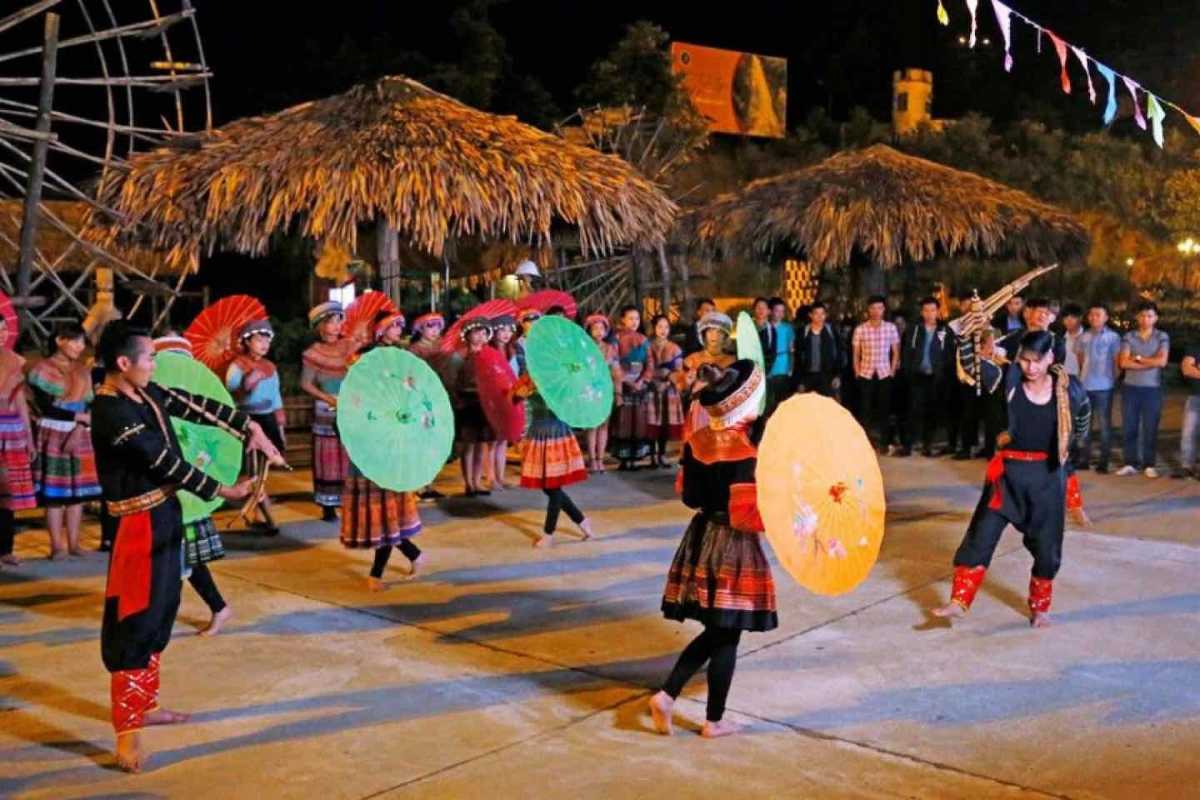
Exploring Beyond the Market: Top Nearby Attractions and Experiences
The Sapa Love Market is only the beginning of your adventure in this remarkable mountain town. Just steps away, you’ll discover a tapestry of sights, flavors, and unforgettable experiences that make Sapa one of the most captivating destinations in Vietnam. Whether you’re an avid hiker, culture-seeker, or food lover, the area surrounding the market offers something for everyone. From iconic landmarks to panoramic viewpoints and culinary gems, each stop adds a new layer to your journey and deepens your connection to the spirit of Sapa. Plan to wander, taste, and explore—you’ll find the most memorable stories often begin just beyond the stalls.
Before you finalize your itinerary, here are the can’t-miss highlights and practical tips for expanding your adventure beyond the Sapa Love Market.
Ready to see more? Let’s dive into the must-see nearby attractions that will make your trip to Sapa truly complete.
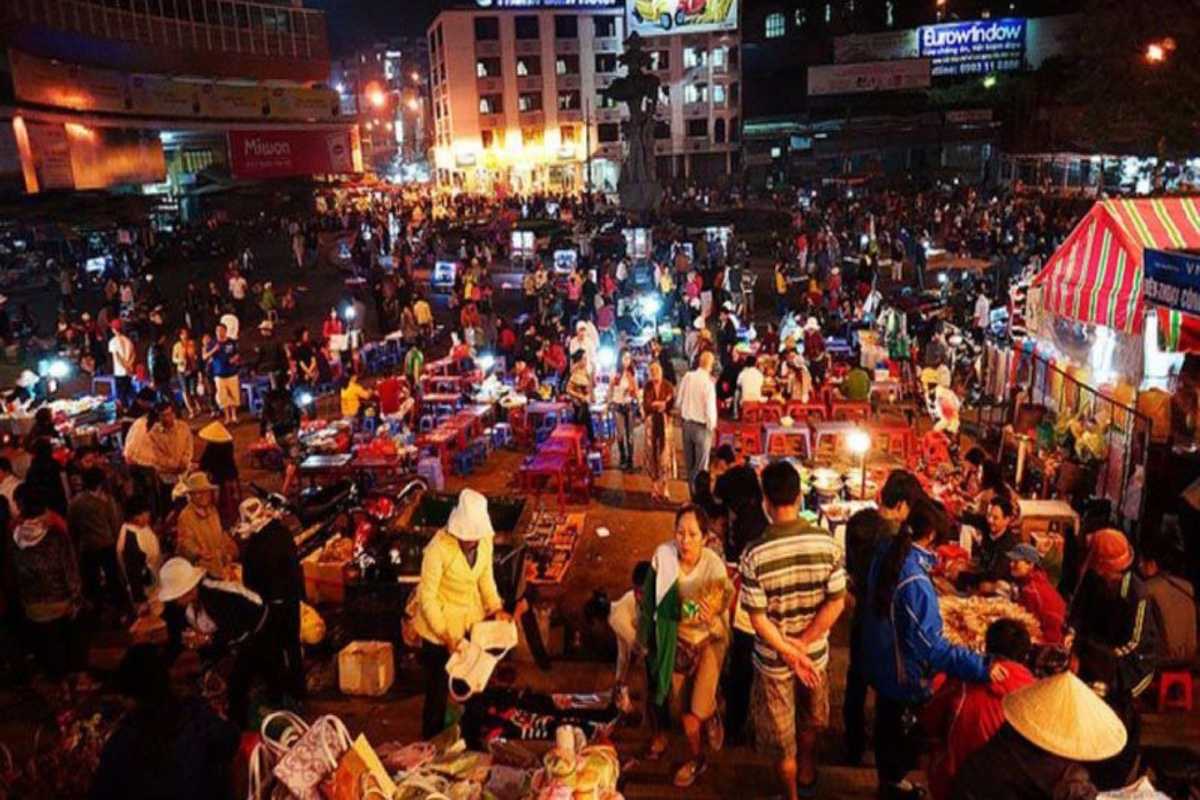
Must-See Sights Just Steps Away
Many of the best sights in Sapa are only a short walk from the bustle of the Sapa Love Market. These iconic landmarks and charming public spaces provide the perfect setting for photos, quiet reflection, or a taste of local daily life. If you want to maximize your visit without the hassle of long transfers, these nearby spots offer plenty of reward for minimal effort.
Plan a gentle stroll before or after the market to discover what makes Sapa a destination that blends natural beauty, historic intrigue, and warm community energy.
Before you explore farther, be sure to take in these top sights—each with its own unique story and atmosphere.
Curious where to start? Here’s what’s just around the corner.
Sapa Stone Church and Town Square
The Sapa Stone Church stands at the very heart of town, anchoring the main square with its striking French colonial architecture and enduring presence. Built in the early 20th century, this historic church is more than a religious site—it’s a community gathering point and one of the most photographed buildings in Sapa.
- Heritage Landmark: The Sapa Stone Church features iconic stonework and stained glass, offering a tangible link to the region’s colonial past.
- Central Gathering Place: The adjacent Town Square buzzes with life, hosting festivals, night markets, and the weekly gathering before the Sapa Love Market.
- Practical Tips: Visit in the late afternoon when the light is soft and the square comes alive with local performers and street food vendors.
- Photography: Capture the intricate facade in the morning, or join the crowds at sunset for vibrant candid shots.
- Easy Access: You’ll find the church and square just a few minutes’ walk from most accommodations and the market itself.
If you want to experience the heartbeat of Sapa and snap memorable photos, start your exploration right here.
Don’t miss the chance to pause in the square, soak up the atmosphere, and use the church as your compass point for exploring central Sapa.
Ham Rong Mountain and Scenic Viewpoints
Just behind the town center, Ham Rong Mountain rises with trails that wind through lush gardens and lead to some of the most breathtaking viewpoints in all of Sapa. Known for its easy accessibility and dramatic panoramas, this natural gem invites visitors of all fitness levels to immerse themselves in the landscape.
- Hiking Options: Trails vary from short, gentle walks to moderate climbs, all clearly marked and manageable for most travelers.
- Best Views: Make your way to the Cloud Yard or the topmost platforms for sweeping vistas of Sapa town, terraced fields, and the distant Fansipan summit.
- Flower Gardens: Explore vibrant gardens filled with orchids and seasonal blooms, especially colorful during spring.
- Photo Opportunities: Every turn offers new perspectives, from misty valleys at dawn to golden hour mountain silhouettes.
- Seasonal Notes: Weather changes fast; pack layers and be prepared for mist, even on sunny days.
For a refreshing escape from the market crowds and a dose of adventure, Ham Rong Mountain delivers scenery and tranquility just a stone’s throw from downtown.
Eager to see the best of Sapa on foot? Set aside a morning or afternoon to wander these scenic paths, and don’t forget your camera.
Need help planning your walking route or booking guided excursions? Contact Asia Travel Links for local advice and up-to-date tips to make the most of your exploration.
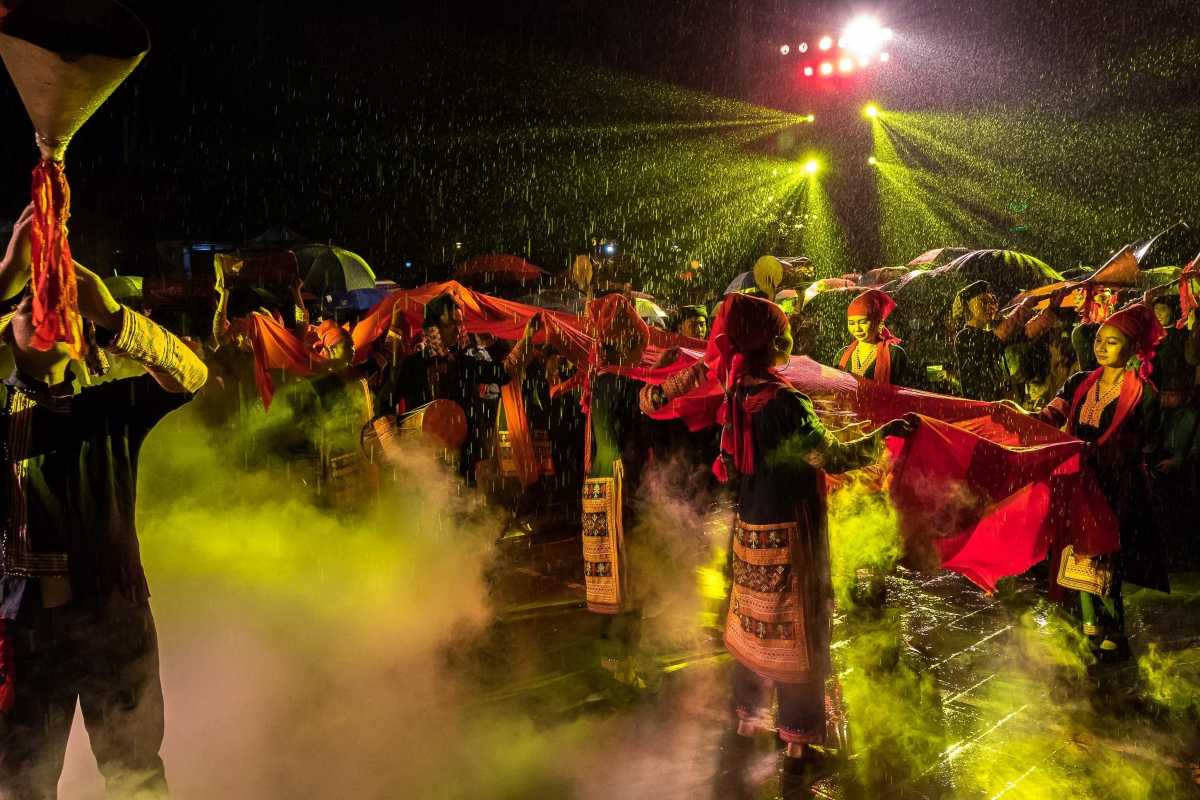
Day Trips and Short Excursions Around Sapa
For those ready to venture beyond the lively energy of the Sapa Love Market, the surrounding countryside invites you to dive deeper into Sapa’s diverse landscapes and cultures. Here, every valley and hillside village holds a story, promising adventure, authenticity, and new friendships. From iconic spots to hidden hamlets, day trips around Sapa transform a simple visit into a journey of discovery.
Choose your pace—whether you want a gentle stroll through rice terraces, a cultural visit to minority villages, or an invigorating trek to remote markets, the right excursion is waiting just outside the market’s reach.
If you’re searching for more than the usual itinerary, here’s where to go for immersive experiences that reveal the true soul of Sapa.
Visiting Cat Cat Village and Muong Hoa Valley
Few excursions capture the spirit of the Sapa Love Market like a visit to Cat Cat Village and the sweeping beauty of Muong Hoa Valley. Both are easily accessible from town, each offering a blend of culture, scenery, and living tradition that will stick with you long after your trip ends.
- Easy Access: Cat Cat Village sits just 2 kilometers from Sapa’s center, walkable or a quick motorbike ride. The route winds past cascading rice terraces and traditional wooden houses.
- Cultural Encounters: Meet local Hmong families, watch artisans weaving and embroidering, and discover the customs that echo the market’s romantic spirit.
- Muong Hoa Valley Treks: Embark on gentle to moderate hikes through this iconic valley, famous for its layered rice fields and remote minority hamlets.
- Panoramic Views: Take in endless green terraces, misty peaks, and the sound of river water—especially rewarding if you visit during planting or harvest season.
- Practical Tips: Dress for the weather, bring water, and ask permission before taking photos of villagers.
Exploring these two destinations offers a perfect balance of tradition, natural beauty, and cultural immersion.
Looking for deeper connection? Ask us at Asia Travel Links for help arranging guided tours or overnight stays in Cat Cat Village or the heart of Muong Hoa Valley.
Other Ethnic Markets and Trekking Opportunities
The area around the Sapa Love Market is dotted with small, authentic ethnic markets and trekking routes that showcase the raw, untouristed side of the region. Venturing further afield rewards you with vibrant scenes of local life and some of the best hiking in Vietnam.
- Sapa Ethnic Markets: Seek out weekly gatherings in villages like Bac Ha, Coc Ly, or Can Cau, where minority groups trade produce, textiles, and livestock.
- Off-the-Beaten-Path Treks: Follow scenic routes to lesser-known villages such as Ta Van, Lao Chai, or Ban Ho, where you’ll find friendly hosts and rustic homestays.
- Market Days: Many ethnic markets happen on specific days—check with locals or your accommodation for the latest schedules.
- Unique Finds: From handwoven baskets to freshly harvested herbs, rural markets offer items and encounters you simply won’t find in central Sapa.
- Trekking Tips: Some routes can be muddy or steep; wear sturdy shoes and bring rain gear, especially in the wet season.
If you crave the thrill of discovery and the authenticity of real local life, these markets and trails are your invitation to experience Sapa’s true diversity.
Want advice on which trek or market is best for your interests and ability? Contact Asia Travel Links for custom suggestions and up-to-date routes.
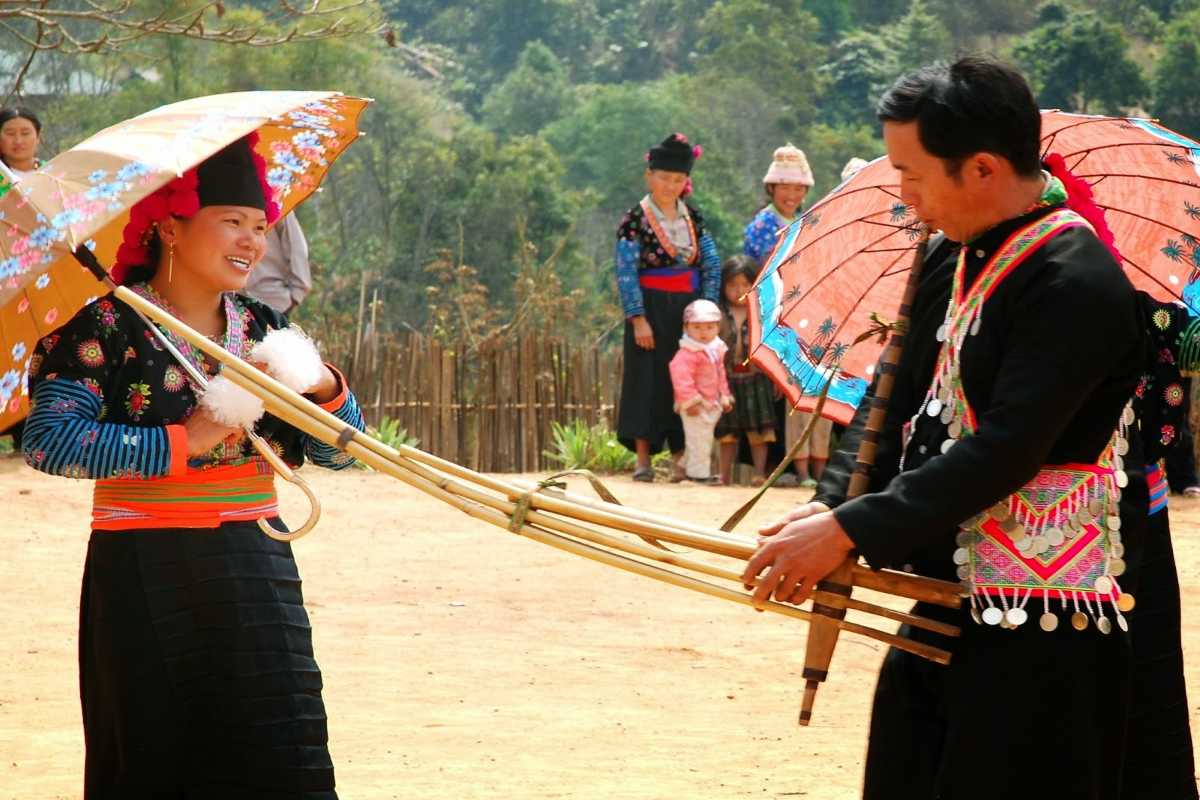
Making the Most of Your Time in Sapa
Every moment in Sapa is an opportunity to build memories—especially when you plan ahead and weave in both the essentials and a few secret discoveries. With so much to see beyond the vibrant heart of the Sapa Love Market, the right schedule lets you savor Sapa’s beauty and culture at a relaxed pace, whether you have a single day or a long weekend to explore.
Smart planning means more than just ticking off sights. It’s about blending highlights, hidden gems, and unhurried moments, all while adapting to the rhythms of local life. Whether you’re a first-timer or a repeat visitor, these expert-backed strategies and sample itineraries ensure every day in Sapa feels full, authentic, and just a little bit magical.
Let’s dive into easy-to-follow ways to make your Sapa adventure truly unforgettable.
How to Plan a Perfect Itinerary
Making the most of the Sapa Love Market starts with a simple but thoughtful plan. The following sample itineraries blend classic attractions, local flavor, and time for reflection—flexible enough for every type of traveler.
- 2-Day Classic Sapa Itinerary:
Day 1: Explore the Sapa Love Market (Saturday evening), stroll the Sapa Stone Church and Town Square, and enjoy street food at the night market.
Day 2: Visit Cat Cat Village in the morning, trek through Muong Hoa Valley in the afternoon, and catch a sunset from Ham Rong Mountain. - 3-Day Sapa Immersion:
Day 1: Relax and explore local cafes, then visit the Sapa Love Market.
Day 2: Spend a full day trekking between minority villages (Ta Van, Lao Chai), stopping for cultural exchanges and handicraft shopping.
Day 3: Choose a day trip to a remote market (like Bac Ha) or participate in a hands-on workshop (indigo dyeing, cooking class). - Flexible Planning Tips:
Leave space for unexpected discoveries—some of the best moments come from a spontaneous side street or a chat with a local.
If you have more time, slow down and stay a night in a village homestay for a truly immersive experience.
With these easy options, your time in Sapa will be a perfect mix of structure and freedom, ensuring you don’t miss the magic that makes this region so beloved.
Curious about building a personalized Sapa itinerary? Contact Asia Travel Links for expert, up-to-date trip planning.
Local Tips for an Unforgettable Stay
Sapa is packed with secrets known only to locals and seasoned travelers. These insider suggestions help you skip the crowds, find the best views, and connect more deeply with the area’s spirit.
- Sunrise Advantage: Visit popular viewpoints or the Sapa Love Market early for the best light and the fewest people.
- Photo Gold: The golden hour just before sunset offers magical colors—Ham Rong Mountain and rice terrace trails are top spots for photos.
- Hidden Cafés: Seek out tiny, family-run coffee houses on Sapa’s side streets for authentic brews and people-watching.
- Market Manners: Always greet vendors and ask before taking photos. Learn a few Vietnamese phrases to spark smiles and deeper connections.
- Unique Experiences: Don’t miss smaller weekly markets in outlying villages—often more authentic and less crowded than the main event.
With a little insider know-how, your Sapa journey becomes more than just a checklist—it’s a collection of moments you’ll remember for years.
Need up-to-the-minute advice or help with bookings? Email us at Asia Travel Links for custom tips and personal recommendations.

Culinary Adventures: Sapa's Food Scene Beyond the Market Stalls
Beyond the colorful bustle of the Sapa Love Market, the town’s culinary landscape invites you on a delicious adventure. Food in Sapa is more than sustenance—it’s a story told in flavors, from the smoky aroma of grilling meats on a chilly night to the earthy fragrance of homegrown herbs and wild mushrooms. Every meal here is an opportunity to explore both traditional Hmong, Dao, and Tay specialties and creative twists found in rustic eateries and cozy cafes.
Whether you crave a hearty bowl of local salmon hot pot, crave the crunch of freshly made spring rolls, or want to linger over a mountain-view breakfast, Sapa’s dining scene is an essential part of your journey. These spots and dishes ensure every taste is a discovery, and every bite brings you closer to the spirit of the region.
Looking for the best tables and flavors in town? Here are the must-try experiences and hidden gems every foodie should add to their itinerary.
Maria's Foodie Discoveries: Unearthing Sapa's Hidden Gastronomic Gems
As a passionate food traveler, my mantra is simple: to truly understand a culture, you must taste it. While the Sapa Love Market promised cultural immersion, I was equally excited about the culinary adventures that awaited beyond its immediate stalls. I wanted to move past the common tourist traps and unearth Sapa's genuine food gems. My Maria's foodie discoveries journey was about finding those Sapa local dishes that tell a story, leading me to some of the best restaurants Sapa had to offer, even if they were tucked away.
My first evening in Sapa, after soaking in the market's initial charm, my stomach began its own quest. I started with the obvious: the grilled skewers at the market entrance – delicious, smoky, and perfect for a quick bite. But I yearned for more. I decided to wander beyond the main tourist drag, down a narrow, slightly unlit alley that seemed to promise local secrets. The air quickly filled with tantalizing aromas: simmering broth, roasting meat, and the fresh scent of herbs. That's when I stumbled upon a small, unassuming eatery, barely more than a few plastic tables and stools, but packed with locals. This was it.
I took a leap of faith, pointed to a steaming bowl a man at the next table was enjoying, and managed a hopeful "cái này?" (this one?). What arrived was a revelation: a hearty bowl of thắng cố, Sapa's famous horse hot pot. Now, I know what you're thinking – horse meat? But the broth was incredibly flavorful, rich with spices and herbs, comforting against the cool Sapa night. It was an adventurous start, but surprisingly delicious and deeply satisfying. This memorable meal Sapa provided taught me that sometimes, the best discoveries are found by daring to step outside your comfort zone.
Over the next few days, my culinary exploration deepened. I found a tiny, family-run spot serving the most incredible cá hồi nướng (grilled Sapa salmon), caught fresh from the local streams. The fish was delicate, flaky, and simply seasoned – a perfect example of how Sapa's fresh ingredients shine. Another evening led me to a hidden gem specializing in lẩu gà đen (black chicken hot pot), a dark, earthy broth believed to have medicinal properties. Each dish wasn't just food; it was a reflection of Sapa's mountainous landscape, its indigenous ingredients, and its resilient culture. My foodie experience Sapa provided was a journey of delightful surprises, confirming that the real flavors often lie in the unpretentious, local establishments.
From these delicious adventures, I’ve compiled my must-try Sapa local dishes and tips for fellow food lovers:
- Embrace the Hot Pot: Sapa is famous for its hot pots.
- Thắng Cố: (Horse Hot Pot): A true local specialty. Don't be deterred by the ingredients; it's incredibly flavorful and warming. Find it in local eateries away from the main square. My spot was down a narrow alley off Xuân Viên street.
- Lẩu Gà Đen: (Black Chicken Hot Pot): A rich, herbaceous chicken hot pot. Many restaurants offer this, particularly on Hàm Rồng street.
- Sapa Salmon Hot Pot (Lẩu Cá Hồi): Fresh, local salmon cooked in a flavorful broth, often with mushrooms and vegetables. Widely available and consistently delicious.
- Seek Out Grilled Skewers: Beyond the Love Market, many street vendors around the town square offer various grilled meats and vegetables, perfect for a quick, flavorful snack.
- Don't Miss the Bamboo-Tube Rice (Cơm Lam): Sticky rice cooked in bamboo tubes, giving it a unique aroma and texture. Often served with grilled meat. Look for it at market stalls.
- Try Local Fresh Spring Rolls: Fresher and often more unique than those found in larger cities, often filled with local herbs and vegetables.
- Go Local for Breakfast: Seek out pho stalls or noodle soup eateries packed with locals for an authentic morning meal.
- Wander Off the Main Roads: The best restaurants Sapa offers are often found down side streets or in less prominent locations. Look for places busy with Vietnamese diners – that’s usually a good sign.
- Use Your Nose and Eyes: Let the aromas guide you. Look at what others are eating. If a dish looks appealing and the place is busy, give it a try.
- Be Adventurous: Some of Sapa’s unique flavors might be unfamiliar, but that’s part of the fun! Don't be afraid to try something new.
My Maria's foodie discoveries in Sapa were a highlight, proving that the region's gastronomic scene is as rich and layered as its landscapes. It's an exploration that complements any visit to the Sapa Love Market, completing the sensory journey.
Recommendation: Don't limit your Sapa experience to just its sights. Dive deep into its culinary heart! Follow these tips for uncovering Sapa's hidden gastronomic gems. You'll find that indulging in Sapa local dishes and seeking out the best restaurants Sapa has, especially beyond the main tourist spots, will give you a truly memorable meal Sapa provides and an unforgettable foodie experience Sapa will offer.

Beyond the Stalls: Immersive Cultural Experiences Around the Market
Sapa Love Market is only the beginning of your journey into the heart of Sapa’s living heritage. To truly understand this remarkable destination, step beyond shopping and performances and try immersive activities that connect you with the people and traditions shaping the region today. Here, you can get your hands blue with natural indigo, learn the art of traditional music-making, or even share a meal with a local family. These authentic experiences turn curiosity into understanding and allow you to give back to the community in meaningful ways.
No matter your interests—craft, cuisine, or cultural storytelling—there are countless ways to engage with Sapa’s artisans, elders, and innovators. The following experiences are designed for travelers who want more than memories: they want transformation, connection, and real impact. If you’re seeking not just to visit but to belong, Sapa’s workshops, demonstrations, and ethical travel opportunities are the best places to start. Dive in, participate, and help sustain the traditions that make Sapa unique.

Participating in Local Workshops and Demonstrations
For many visitors, the true magic of the Sapa Love Market is found in its hands-on cultural workshops and craft demonstrations. Joining a class or artisanal session is your ticket to learning time-honored skills, meeting new friends, and leaving with a souvenir made by your own hands. These activities are more than just fun—they’re an opportunity to support local artisans and keep traditional crafts alive.
Whether you’re eager to try indigo dyeing, weave textiles on a wooden loom, carve bamboo flutes, or join a communal cooking class, Sapa offers accessible experiences for all ages and backgrounds. Most workshops are hosted by skilled locals proud to share their craft and stories, and every lesson is a chance to gain practical knowledge and cultural insight.
Don’t just watch—get involved, ask questions, and let yourself be guided by generations of expertise. You’ll go home with more than just a souvenir; you’ll carry the memory of laughter, learning, and genuine connection.
Linh's Indigo Dyeing Adventure
While the Sapa Love Market is a spectacle of traditional textiles, I wanted to go beyond just admiring the finished products. I yearned to understand the artistry, the sheer labor, and the deep cultural significance behind the vibrant indigo hues that dominate Hmong and Red Dao clothing. That's why I sought out a workshop, hoping for a true hands-on indigo workshop Sapa style. What I found was Linh's Indigo Dyeing Adventure, a profoundly immersive experience that connected me to the very soul of Sapa's craft traditions. It wasn't just a craft session; it was a journey into the heart of a living art form.
My journey led me to a small, unassuming village just outside Sapa town, where a local Hmong artisan, Ms. Hoa, welcomed me with a warm, genuine smile. Her small workshop was rustic, yet alive with the earthy scent of fermentation and the subtle sweetness of indigo leaves. The dyeing vats themselves were unassuming – large, dark clay pots filled with a deep, murky liquid that seemed to pulse with life. My initial excitement was mixed with a touch of apprehension; I’m not typically very artistic.
Ms. Hoa, with remarkable patience, demonstrated the process. First, she showed me how the indigo plant leaves are fermented to create the dye base. The smell was surprisingly pleasant, a mix of earthy and slightly sweet notes. Then came the magic. She handed me a piece of raw, off-white hemp fabric, already intricately waxed with patterns for what would become a traditional Hmong textile. My task was to dip it into the vat. As the fabric submerged, the murky liquid immediately clung to it. "Wait," she instructed, counting silently. When I pulled it out, the fabric was a shocking, sickly green. My heart sank slightly. But Ms. Hoa just smiled. "Breathe," she gestured. As the air hit the fabric, almost miraculously, the green began to deepen, transforming into a beautiful, inky blue. The oxidation process was mesmerizing, a silent testament to ancient chemistry.
I repeated the process, dipping, waiting, and watching the color deepen. My hands, initially hesitant, grew more confident, though they quickly became stained a beautiful, mottled blue – a badge of honor. Ms. Hoa patiently guided me, explaining that different shades of blue required multiple dips over days or even weeks. It was a tangible connection to the countless hours these artisans dedicate to their craft. The most rewarding part was the final rinse, where the wax resist was removed, revealing the crisp, untouched white patterns against the now deep, rich indigo. The sense of satisfaction was immense. This wasn't just an artisan craft Sapa offered; it was a tangible experience of color, tradition, and the painstaking process that creates such beauty. This was a truly unique local textile experience.
This hands-on adventure gave me an entirely new appreciation for the indigo textiles I had admired in the Sapa Love Market. I no longer just saw pretty fabric; I saw the plants, the vats, the patient hands, and the timeless learning involved.
Here are some practical takeaways from my Linh's Indigo Dyeing Adventure:
- Book in Advance: Indigo dyeing workshops are often small and run by individual families. Contact local tour operators or your homestay host in Sapa to arrange one in advance.
- Wear Old Clothes: Seriously. The indigo dye can stain. Wear something you don't mind getting blue. Even better, bring an old t-shirt to dye yourself!
- Embrace the Mess: Your hands (and potentially clothes) will get blue. It's part of the authentic experience. The dye washes off skin eventually.
- Listen to Your Artisan: The process is precise. Follow their instructions carefully for dipping times and oxidation.
- Ask Questions (Respectfully): Inquire about the history of indigo dyeing, the plants used, and the meaning of different patterns. It enriches the learning process.
- Patience is Key: The best indigo colors are achieved through multiple dips and oxidation periods. Appreciate the time and effort involved.
- Consider What to Dye: Some workshops offer pre-waxed fabric for you to dye, while others might allow you to bring a small cotton or linen item (like a scarf or t-shirt) to experiment with.
My Linh's Indigo Dyeing Adventure was an unforgettable highlight of my Sapa trip, deepening my understanding of the Love Market's textile treasures. It allowed me to personally connect with the ancient textile heritage of the region, proving that sometimes, the best way to experience a culture is to get your hands a little bit dirty.
Recommendation: For a truly immersive and meaningful cultural experience beyond simply observing the Sapa Love Market, I highly recommend joining an indigo dyeing Sapa workshop. It's an incredible hands-on indigo workshop Sapa opportunity that will give you a profound appreciation for the region's artistry and traditions, and perhaps even a beautiful, handmade souvenir.
Marc's Flute Making Masterclass
The haunting melodies of the khene flute are synonymous with the Sapa Love Market, carrying the weight of centuries of courtship and tradition on the mountain breeze. As a hobbyist woodworker, I was utterly fascinated by the simplicity and beauty of these instruments. I knew listening wouldn't be enough; I wanted to try my hand at it. My quest led me to a small, dusty workshop on the outskirts of Sapa town for a flute making Sapa masterclass. What followed was a wonderfully engaging, sometimes comically challenging, journey into the heart of traditional craftsmanship, proving that even a clumsy beginner can find joy in a traditional flute workshop Sapa.
My teacher was Mr. Phung, an elderly Hmong artisan whose hands, gnarled with age, moved with an incredible grace and precision. He greeted me with a warm, toothy smile and a piece of raw bamboo. "We make khene," he announced, gesturing to the bamboo and then to his own expertly crafted flute. My immediate thought was, "This looks a lot harder than playing 'Hot Cross Buns' on a recorder." My apprehension grew when he handed me a small, sharp knife. Safety first, I reminded myself.
The process was far more intricate than I'd imagined. First, we had to carefully clean and smooth the inside of the bamboo, a surprisingly tactile experience. Then came the measuring and drilling of the finger holes – this was where my lack of skill truly shone. Mr. Phung would demonstrate a perfect, clean cut, and I'd inevitably end up with something vaguely oval. He'd patiently shake his head, offer a gentle correction, and then skillfully fix my amateurish efforts. "Patience," he'd chuckle, his eyes twinkling. The most challenging part was shaping the mouthpiece, which required a delicate touch and a keen ear for sound. I spent what felt like an hour just trying to get a decent, consistent note out of my bamboo tube. The sounds I produced were initially more akin to a dying goose than a melodious flute, much to Mr. Phung's quiet amusement. My instrument making Sapa journey was proving to be a humbling but hilarious one.
Despite my fumbling, Mr. Phung's encouragement was unwavering. He would play a perfect phrase on his own flute, then gently guide my fingers, helping me find the right pressure and breath. By the end of the session, I had produced something that, with a generous ear, could be called a flute. It wasn't beautiful, and certainly wouldn't be used for courtship rituals at the Sapa Love Market, but it was my flute. The satisfaction of holding something I had, however imperfectly, crafted with my own hands, was immense. This wasn't just about music; it was about connecting to a centuries-old handcraft and a deep-seated tradition.
This "masterclass" taught me the immense patience and dedication required for traditional crafts, and the joy of embracing imperfection. It deepened my appreciation for every note played on the khene at the Love Market.
Here are my takeaways from Marc's Flute Making Masterclass for anyone considering a similar journey:
- Set Realistic Expectations: You won't become a master flutist or artisan in one session. Go for the experience, the learning, and the connection, not a perfect product.
- Embrace the Challenge: It is harder than it looks. Be prepared for some frustration, but also for immense satisfaction when you get it right (or close enough!).
- Listen to Your Instructor: Traditional artisans have invaluable knowledge passed down through generations. Pay close attention to their demonstrations and advice.
- Patience is a Virtue: Both in the learning process and in the actual crafting. Don't rush. This isn't a race; it's about the process.
- Ask About the Cultural Significance: Inquire about the role of the flute in Hmong or Dao culture, its use in courtship, and the stories behind the melodies. This adds a rich layer to your local music crafts Sapa experience.
- Wear Comfortable Clothes: You'll be sitting, bending, and potentially getting a little dusty from the bamboo.
- Bring a Small Gift (Optional): A small, thoughtful token of appreciation for your teacher, perhaps something from your home country, is a nice gesture.
- Document the Process: Take photos or videos (with permission!) of your teacher demonstrating, and of your own efforts. It's a fantastic way to remember the journey.
My Marc's Flute Making Masterclass was a unique and incredibly rewarding addition to my Sapa trip. It wasn't just about making a flute; it was about connecting with a living art form, appreciating the skill involved, and laughing at my own attempts. It offered a profound, personal understanding of the tradition and music that defines the Sapa Love Market.
Recommendation: If you're looking for a hands-on, memorable experience that truly immerses you in Sapa's cultural heartbeat, consider a flute making Sapa workshop. It's a chance to learn a traditional handcraft, test your patience, and gain a deeper appreciation for the enchanting melodies of the Sapa Love Market.

Ethical Tourism: Supporting Local Communities
Traveling to the Sapa Love Market isn’t just about discovering new sights—it's an opportunity to make a genuine difference in the lives of local people. Practicing Sapa ethical tourism means your choices directly support artisans, farmers, guides, and families, helping them sustain their cultural heritage and traditional livelihoods. From choosing ethical homestays to shopping thoughtfully at the market, every decision matters and can create a ripple effect of positive impact.
To travel responsibly in Sapa, look for ways to contribute meaningfully to the communities that welcome you. Small acts—like learning a few local words, buying crafts directly from makers, or respecting traditional customs—help preserve authenticity while ensuring tourism remains a force for good.
Here are the most effective ways you can support Sapa’s people and culture during your visit:
- Book Ethical Homestays: Choose family-run accommodations or homestays where your payment directly benefits the host community and encourages cultural exchange.
- Buy Directly from Artisans: Prioritize shopping at stalls run by local craftspeople, not mass-produced or reseller outlets, to ensure your money stays within the village.
- Dine Locally: Opt for meals at family-owned eateries and try traditional recipes; you’ll support local farmers and enjoy a more authentic taste of Sapa.
- Join Community-Led Tours: Book experiences guided by locals who share their history, traditions, and personal stories, fostering pride and income for their communities.
- Respect Local Practices: Always ask before taking photos, follow cultural etiquette, and be sensitive to the rhythms of daily life, especially during ceremonies or family gatherings.
Taking these steps means your adventure at the Sapa Love Market creates lasting value for everyone involved—turning travel into a true partnership with the people of Sapa.
If you want help planning a responsible journey or need recommendations for trusted guides and homestays, contact us at Asia Travel Links. Traveling with purpose starts here.
Sophia's Homestay Connection: Giving Back to the Village
My visit to the Sapa Love Market was always planned as more than just sightseeing; I yearned for a deeper engagement, a way to genuinely connect with the local culture. This desire led me to choose a homestay, specifically one recommended for its direct benefit to the local community. My Sapa homestay experience with a Red Dao family not only enriched my journey beyond measure, but it also showed me firsthand the incredible power of giving back Sapa style, transforming my trip into a truly ethical homestay Sapa adventure. It underscored how every thoughtful choice as a traveler can create a tangible, positive impact.
From the moment I arrived at Mrs. Ly's home, tucked amidst emerald rice terraces, I felt an immediate warmth. There were no elaborate amenities, just the welcoming scent of woodsmoke and simmering broth, and the genuine smiles of Mrs. Ly and her children. My stay wasn't just about lodging; it was an immersion into their daily lives. I helped (or tried to, often comically) prepare meals, learning about local ingredients and traditional cooking methods. I watched Mrs. Ly and her daughters meticulously embroider their stunning Red Dao textiles, a craft passed down through generations. These weren't staged demonstrations; this was their authentic daily life, and I was simply privileged to be a part of it. The simple act of paying for my stay directly supported their family, allowing them to invest in their children's education or improve their home. This direct contribution felt incredibly meaningful.
One evening, after a shared meal, Mrs. Ly's eldest daughter, Mai, showed me her school books. Her eyes shone with ambition, and I realized that my presence, however small, was helping to fund her access to education. Later, Mrs. Ly proudly pointed out a new, sturdy roof section on their home, purchased with earnings from previous homestay guests. These weren't just abstract ideas of homestay impact Sapa; they were concrete examples of how my travel choices translated into real-world benefits for this hardworking family and, by extension, their community. It underscored the importance of responsible tourism, where every dollar spent contributes directly to the well-being of the hosts. It created a powerful sense of connection and shared hospitality that went far beyond mere transactions.
My ethical homestay Sapa experience was profoundly uplifting. It wasn't about grand gestures; it was about the quiet dignity of direct support and the joy of mutual learning.
Here are my top takeaways for Sophia's Homestay Connection: Giving Back to the Village:
- Research Ethical Homestays: Look for homestays that are genuinely family-run and where profits directly benefit the family and local community. Read reviews and seek recommendations from responsible tour operators. Avoid those that feel overly commercialized or exploitative.
- Engage with Your Hosts: Don't just stay in your room. Participate in daily activities if invited (cooking, farming, crafting). Ask questions (respectfully!) about their lives, traditions, and challenges. This builds genuine connection and shows your appreciation.
- Bring Thoughtful Gifts: Small, practical gifts for the family can be deeply appreciated – school supplies for children, quality coffee/tea, or simple household items. Avoid giving money directly to children, as it can encourage begging.
- Support Local Crafts Directly: If your host family sells handicrafts, consider buying from them. Your purchase goes directly to the artisan, supporting families Sapa style. It's often more impactful than buying from larger shops in town.
- Be Mindful of Resources: Water, electricity, and food are often precious resources in rural areas. Be conservative with your consumption.
- Embrace Simplicity: Remember you're staying in someone's home, not a hotel. Accommodations will be basic but authentic. Enjoy the simplicity and focus on the cultural exchange.
- Learn a Few Local Phrases: Even simple greetings like "Chào bạn" (hello friend) or "Cảm ơn" (thank you) in Vietnamese will show respect and often lead to warmer interactions.
My Sophia's Homestay Connection was the most rewarding part of my Sapa journey, far exceeding any expectations. It demonstrated that by choosing an ethical homestay Sapa offers, you're not just getting a place to sleep; you're giving back Sapa has taught me, and becoming a part of a beautiful cycle of mutual benefit, experiencing the genuine hospitality and spirit of the community that defines the Sapa Love Market region.
Recommendation: For a truly impactful and emotionally resonant visit to the Sapa Love Market, prioritize an ethical homestay Sapa style. It's a powerful way to make a tangible difference, foster deep connection, and experience the true heart of the community while enjoying your Sapa homestay experience.

Tips and Advice from Travelers Who’ve Been There
Every journey to the Sapa Love Market is different, but the most rewarding visits often come from listening to those who’ve gone before you. Real-world advice and hard-won insights make all the difference—whether you want to avoid rookie mistakes, discover authentic moments, or simply enjoy a stress-free adventure. Here, you’ll find experience-backed strategies, packing checklists, budget guidance, and secret tips to make your trip as memorable as possible.
If you want to maximize every moment, use these trusted traveler strategies when planning your trip to Sapa.

How to Make the Most of Your Love Market Adventure
The Sapa Love Market is a sensory overload—colorful costumes, lively music, delicious street food, and crowds that can feel both exhilarating and overwhelming. To truly savor the experience, a little smart planning goes a long way. Use these Sapa travel tips to prepare for the adventure and create your own unforgettable story.
- Plan Ahead: Research the exact market days and start times. Saturdays are traditional, but always confirm before your trip.
- Arrive Early (or Late): For fewer crowds and more meaningful interactions, aim to visit at opening or as things wind down in the evening.
- Pack Light, Layer Right: Weather changes fast—carry a light rain jacket, warm layer, and waterproof bag for valuables.
- Set a Realistic Budget: Factor in transport, meals, souvenirs, and unexpected extras. ATMs are available, but cash is still king in many stalls.
- Embrace Spontaneity: Some of the best discoveries—secret food stalls, impromptu music, or a conversation with a local—happen when you least expect it.
- Be Respectful: Learn a few local phrases, always ask before taking photos, and approach cultural traditions with genuine curiosity and care.
- Prioritize Comfort: Wear sturdy shoes for uneven paths, and keep small bills handy for snacks or shopping.
- Stay Safe: Watch your belongings in crowded areas and stick to well-lit paths after dark.
By following these simple but powerful steps, you’ll be ready to make the most of the Sapa Love Market—and uncover surprises at every turn.
Ready for more advice? Check out what real travelers wish they’d known before their first visit.
Packing, Budgeting, and Staying Safe
To enjoy the Sapa Love Market to the fullest, practical preparation is your best friend. Here’s what you need to bring, expect, and do for a smooth, safe, and budget-friendly adventure.
- Essentials Checklist: Layered clothing, rain jacket, portable umbrella, small backpack, sturdy shoes, and a reusable water bottle.
- Money Tips: Carry enough cash for small purchases; credit cards aren’t accepted everywhere. Plan for street food, entrance fees, and a few splurges.
- Tech Protection: Bring zip-lock bags or a dry pouch to keep your phone and camera safe from sudden rain.
- Health and Hygiene: Hand sanitizer, tissues, and a basic first aid kit can be lifesavers at busy markets.
- Safety Smarts: Stick to well-trafficked areas, keep your belongings close, and avoid flashy jewelry to reduce risk.
Staying prepared with this Sapa packing list will save you headaches and let you focus on the best parts of the market. Enjoy every moment—safe, comfortable, and ready for adventure!
If you need custom packing advice or want a tailored checklist for your season of travel, just email us at Asia Travel Links.
Hidden Gems and Off-the-Beaten-Path Suggestions
The Sapa Love Market is just the beginning—true explorers know the magic often lies just beyond the main thoroughfares. Want your trip to stand out? Dive into these hidden Sapa gems and make memories you won’t find in any typical guidebook.
- Secret Food Alley: Slip down a side lane behind the main market for the best sticky rice and smoky grilled meats—loved by locals, often missed by tourists.
- Morning Mist Views: Wake up early for a sunrise walk above the town; the rolling fog and quiet streets offer a completely different Sapa.
- The Waterfall Trail: Ask homestay hosts for directions to hidden waterfalls or quiet picnic spots not marked on tourist maps.
- Artisan Workshops: Spend an afternoon learning indigo dyeing or bamboo weaving with a village elder—these workshops are informal, personal, and deeply rewarding.
- Village Tea Houses: Step into a tiny tea shop and let the owner recommend a local brew. It’s a peaceful break and a great way to connect with residents.
Seeking out these unique Sapa experiences will help you see a side of the region most visitors miss. Stay curious and adventurous—your best memories are waiting off the beaten path.
Want personalized suggestions based on your interests? Reach out to us at Asia Travel Links for insider-only recommendations.

Mistakes to Avoid and Lessons Learned
No matter how much you prepare for the Sapa Love Market, there are some lessons that only experience—or the wisdom of those who’ve been before—can teach. Every seasoned traveler has a story about a misstep or a misunderstanding, but those moments can be your advantage. Here are the most common Sapa travel mistakes and the lessons learned that will help you travel smarter, avoid discomfort, and make the most of every moment in Sapa.
Common Pitfalls for First-Time Visitors
Visiting the Sapa Love Market for the first time is exciting, but certain challenges can easily trip up newcomers. Learn from these Sapa first time visitor tips and steer clear of the most common obstacles.
- Overlooking Weather Realities: Sapa’s climate is unpredictable. Not packing layers or rain gear can lead to a miserable experience if the weather shifts suddenly.
- Underestimating the Crowds: Arriving late means pushing through thick crowds and missing out on the quieter, more authentic early moments.
- Skipping Cultural Research: Not understanding basic etiquette—like always asking before taking photos or knowing the meaning behind traditional dress—can lead to awkward or disrespectful encounters.
- Falling for Tourist Traps: Mass-produced souvenirs, overpriced street food, and aggressive touts can leave a bad taste. Take your time and seek out local artisans.
- Ignoring Health Basics: Street food is delicious but can be risky if you’re not careful. Choose busy stalls, watch the cooking, and bring your own sanitizer.
- Not Confirming Market Dates: The Love Market doesn’t run every night, so double-check schedules before planning your itinerary.
- Leaving with Regrets: Rushing through the experience or sticking too close to the main paths can mean missing hidden gems and authentic moments.
Understanding these Sapa travel mistakes will help you enjoy the best of the market, with fewer hassles and more genuine memories.
If you want the most up-to-date advice for your trip dates or have a specific concern, email us at Asia Travel Links for custom tips.
Tried-and-True Advice from Seasoned Travelers
Those who know Sapa Love Market inside and out have plenty of stories—and even more advice. Here’s what experienced visitors want every newcomer to know, so you can skip the learning curve and travel with confidence.
- “Arrive just before sunset. The light is magical and the crowds are thinner.”
- “Pack a pair of dry socks. After a sudden downpour, you’ll thank me.”
- “Don’t just snap photos—talk to people. Even a smile or a simple Vietnamese ‘hello’ opens doors.”
- “Learn the basics of bargaining, but never haggle too hard. Supporting artisans matters more than a few thousand dong.”
- “Take a break at a tea shop or watch a folk performance. The best moments often happen when you slow down.”
- “Always double-check transport options back to your hotel—things can get busy late in the evening.”
- “Write down the name and address of your accommodation in Vietnamese for taxi drivers or xe om riders.”
Absorb these Sapa seasoned traveler advice notes, and you’ll navigate the market with the calm and confidence of a local. Every small insight is a shortcut to a better experience in Sapa.
Need more firsthand travel wisdom or want to connect with local guides? Asia Travel Links is always ready to help make your Sapa journey smooth and memorable.

Why You’ll Love Sapa Love Market!
There are places in the world that capture your imagination from the moment you arrive, but the Sapa Love Market has a way of capturing your heart. For generations, travelers have come to this highland gathering drawn by its enchanting blend of tradition, romance, and community spirit. The market’s colorful energy, set against the misty mountains of Sapa, brings people together in ways that transcend language and culture.
What makes the Sapa Love Market so unforgettable is the sense of belonging it offers every visitor. Here, you don’t just witness culture—you feel part of it. The music, laughter, and heartfelt exchanges invite you to join in, not simply observe from the sidelines. Each step through the market reveals something extraordinary: vibrant costumes in every hue, the distant call of a bamboo flute, the aroma of freshly grilled street food, and the gentle bustle of locals and travelers weaving their stories together.
It’s not only a feast for the senses, but for the soul. The market’s traditions of courtship and connection remind you of the universal human desire for love, understanding, and community. Whether you come seeking new experiences, a deeper understanding of local life, or simply a memorable evening in the mountains, the Sapa Love Market delivers in ways you can’t predict—leaving you with moments of genuine joy and a newfound appreciation for Vietnam’s rich cultural tapestry.
Don’t just take home souvenirs—bring back the stories, friendships, and inspiration that will stay with you long after your journey. If you’re searching for a travel experience that stirs your spirit and leaves you changed, you’ll find it here.
Ready to create your own unforgettable memories? Let Sapa Love Market surprise and inspire you at every turn.

The Memories You’ll Take Home
The magic of the Sapa Love Market lingers long after you’ve left the cool mountain air behind. Every visitor collects their own vivid Sapa memories—snapshots of color, sound, and genuine connection that become stories you’ll tell for years. From the energy of the night market to quiet moments of discovery, each experience adds a new layer to your travel story. The beauty isn’t just in what you see but in what you feel: the warmth of a smile, the pulse of traditional music, the shared laughter over street food, the deep resonance of a culture that welcomes you in.
Every sense comes alive here. The scent of grilled skewers, the sound of Hmong flutes, the swirl of embroidered costumes in lamplight—these unforgettable Sapa details turn fleeting moments into lifelong memories. When you remember your journey, it’s these market highlights Sapa is known for that will remain. Let yourself be moved and inspired by all that’s special in this mountain town.
You deserve to create your own unforgettable Sapa experience—one that you’ll cherish forever.
Moments That Leave a Lasting Impression
What makes the Sapa Love Market truly stand out are those moments that take root in your heart.
- First Glimpse: Watching the town transform as dusk falls, lanterns glowing and the air filling with anticipation.
- Melodies at Midnight: The haunting beauty of folk songs drifting over the crowd, connecting you to centuries of tradition.
- Shared Smiles: Simple exchanges with local vendors and travelers—sometimes wordless, always meaningful.
- The Taste of Adventure: Sampling something new, from sticky rice to homemade corn wine, and savoring every bite.
- Treasured Keepsakes: Finding that one perfect, handmade memento that carries the spirit of Sapa home with you.
Each of these unforgettable Sapa moments weaves into your own story, ensuring the Love Market leaves its mark long after your trip ends.
Let yourself be changed by the beauty and hospitality of Sapa—and take those lasting impressions with you wherever you go.

Share Your Sapa Love Market Stories
Every visit to the Sapa Love Market is as unique as the traveler. Your experiences—whether it’s a magical encounter, a special souvenir, or a lesson learned—can inspire others planning their own adventure. We invite you to share Sapa stories, photos, or tips with fellow readers and future visitors.
What surprised you? What made you smile? What do you wish you’d known before you arrived? Your insights help grow the community of curious, respectful travelers who make Sapa such a remarkable destination.
Join the conversation and add your voice to the growing collection of Sapa user experiences. You might just spark someone else’s next unforgettable journey.

Ready to Experience It Yourself?
There’s no better time to discover the wonders of the Sapa Love Market than now. If this guide has stirred your curiosity or awakened your sense of adventure, take the next step. Whether you’re planning the perfect itinerary, need trusted advice, or want help booking your stay, we’re here for you.
Let Asia Travel Links help you plan your trip to Sapa—from hidden gems to can’t-miss highlights, we’ll make sure your visit is smooth and memorable. Reach out for personalized tips, seamless travel arrangements, or to book Sapa trip experiences you’ll never forget.
Begin your journey to Sapa Love Market today—your adventure is just a message or call away.
Nhật Hoàng
Faqs
The Sapa Love Market is a vibrant cultural gathering in Sapa, Vietnam, known for its unique mix of romance, tradition, and social exchange among local ethnic groups. It is famous as a space where young people from the region’s hill tribes meet, sing, dance, and sometimes find love.
Every weekend, the Sapa Love Market comes alive with colorful costumes, traditional music, and lively interactions. The event reflects a centuries-old courtship tradition, where ethnic Hmong and Dao youth express affection through song and dance. Visitors witness authentic rituals, playful games, and a welcoming communal spirit.
Experience the living heart of Sapa by visiting the Love Market and learning how local traditions endure. Add the market to your Vietnam travel plans for a truly memorable experience.
The best time to visit the Sapa Love Market is on Saturday evenings, when the market is at its most lively and authentic. The event takes place year-round, but atmosphere and weather can vary.
- Saturday evening is the main event for songs, dances, and community gatherings.
- Visit in spring or autumn for comfortable temperatures and less rain.
- Festive periods such as the Lunar New Year add even more local flavor.
- Arrive early to enjoy the market before crowds build, or stay late for quieter moments.
Plan your visit around Saturday nights for the most immersive Sapa Love Market experience.
Travelers can reach the Sapa Love Market from Hanoi by train, bus, or private car. Each option offers its own advantages for comfort, cost, and convenience.
- Take an overnight sleeper train from Hanoi to Lao Cai, then a shuttle or taxi to Sapa.
- Use a direct bus or limousine van from Hanoi, which drops you close to the Sapa town center.
- Private car hire allows maximum flexibility and scenic stops along the way.
- Travel time ranges from 5 to 8 hours, depending on the method.
Choose the option that fits your schedule and budget, and get ready to enjoy the charm of Sapa’s highlands.
There is no official entry fee for the Sapa Love Market itself. The market is an open public event held in the center of Sapa town.
You may incur minor costs for food, souvenirs, or special cultural performances. Some associated attractions nearby, like the Sapa Museum or certain cultural shows, may have separate fees.
You can freely walk, observe, and participate in the market’s atmosphere without a ticket. Bring some cash for street food or unique handicrafts to make the most of your visit.


